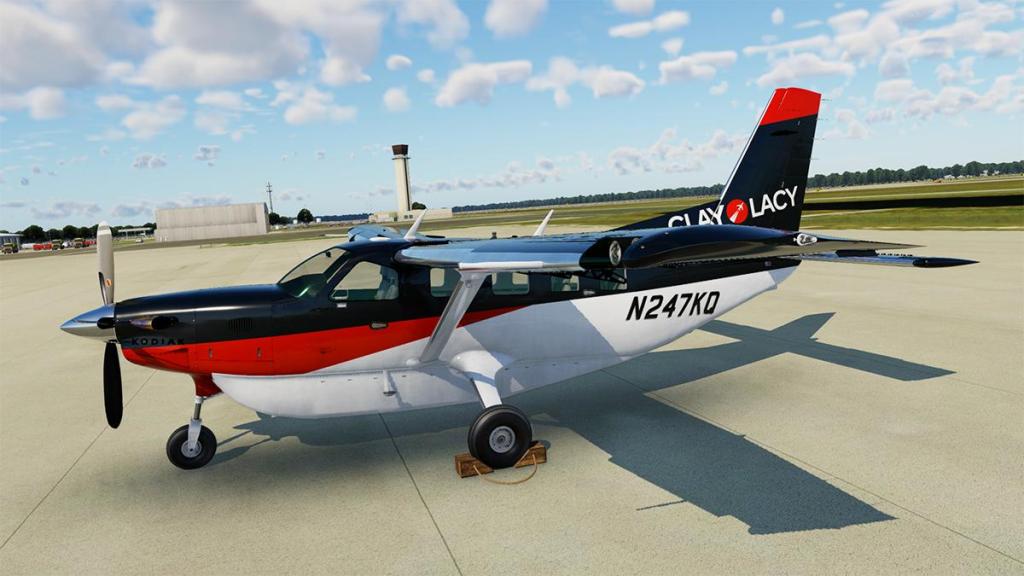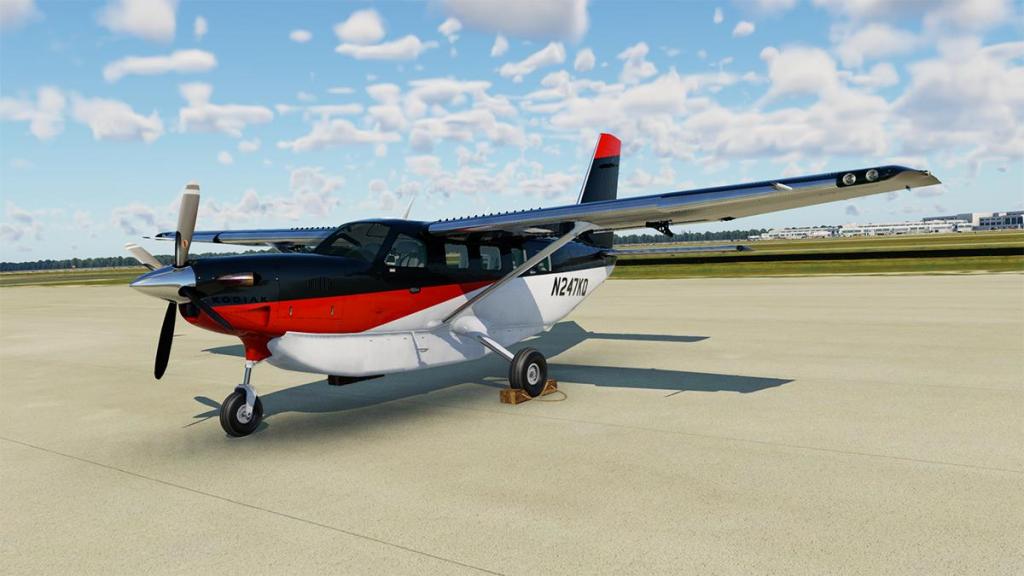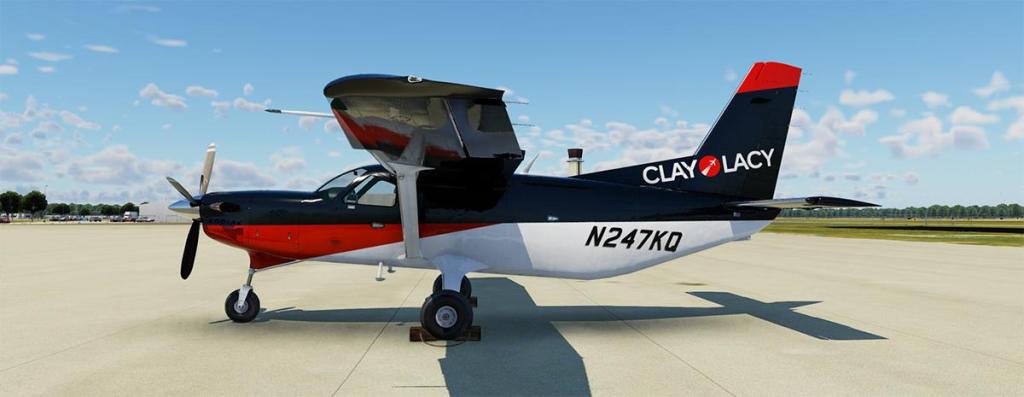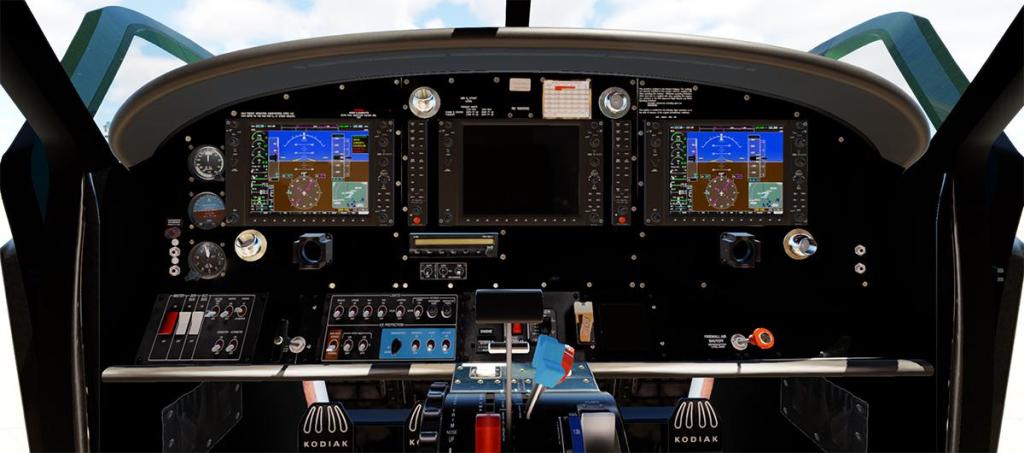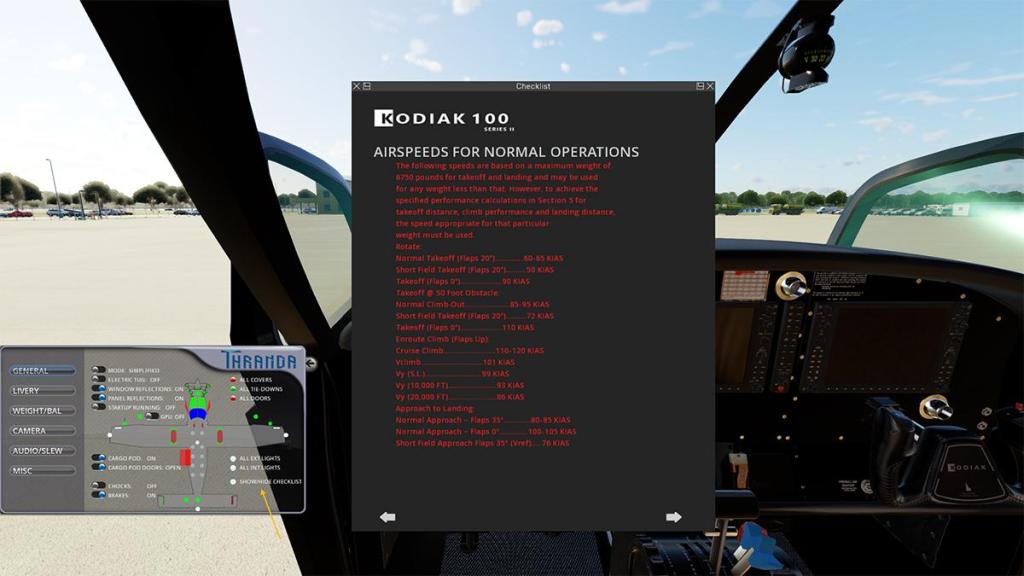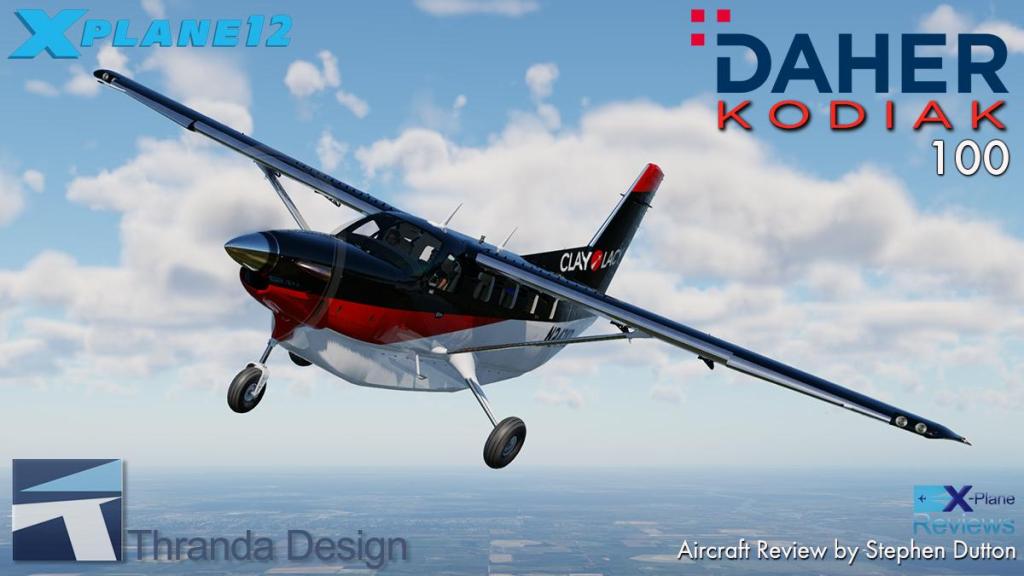-
Posts
2787 -
Joined
-
Last visited
-
Days Won
391
Content Type
Profiles
Forums
Articles
Everything posted by Stephen
-
Scenery Update : KDEN - Denver International Airport HD v2.0 by X-Codr Designs We all look at the extremely created MSFS (Microsoft Flight Simulator) scenery, and dream of the same detail for X-Plane. The fact is a bit of a misnomer, in that highly produced video's can hide the reality of the weaknesses of the product. A lot is very, very good, but it is also not the full story. In X-Plane that superlative quality and quality is available if you want it, surprisingly it is not the most expensive scenery on sale either. Only issue is, there isn't enough of it. But the point here is that the same level and quality can be done or achieved in the X-Plane Simulator, and yes it can match MSFS when it wants to. Two names come to mind. ShortFinal Designs and their magnificent San Francisco and Munich, both are currently updated to X-Plane 12. The Second is X-Codr and his first mega scenery in Denver... or KDEN, Denver International in Colorado, USA. Big here in Denver it is on another level again. DEN is by land area the largest airport United States, and second largest in the world. At over 16,000 feet long, runway 16R/34L is also the longest public runway in the United States, and seventh longest in the world. Big here has another dimension added to it, not to mention the extra taxi fuel required to get to the takeoff points, in fact on some routes, you can spend more time taxiing on the ground at KDEN, that being actually in the air. X-PlaneReviews covered the release of the KDEN mega scenery for X-Plane 11 here... Scenery Update : KDEN - Denver International Airport HD v1.5 by X-Codr Designs On September 5th 2022 there was a version update for the DEN scenery, "Added link for the X-Plane 12 version", and that was about it. The update allowed you to use the scenery in X-Plane 12, but it was not actually a X-Plane 12 scenery, if that sort of makes sense. There were no X-Plane 12 features or details, it worked... and that was about it. X-Plane 12 KDEN v2.0 First of all is the install. Basically you have to totally rip the guts out of the earlier version and replace it with the new. And not just the actual scenery either, but all the plugins as well. There are three downloads... Main Scenery file (7.54 GB), KDEN Mesh (3.82 Gb) and the X-Codr Library (2.97 Gb), and all have to be downloaded to replace the original files, and they are all big download sizes to a total 14.33 Gb. Then there is another change to Living Scenery Technology (LST) as well, so that the correct plugin in v1.10 has to be installed for it all to work. The SAM3 Plugin is also required, but again the correct one in version v3.1.10. It is all slightly complicated, miss or not install a step and it won't all work correctly, get it right and lo and behold you get quite a sight... Your covering a very large area, and have a huge if massive object count as well. Does that affect your framerate... unfortunately the answer is yes, a lot. But there are options. The best is to reduce your "Rendering Resolution" from OFF (Full Resolution) to Ultra, oddly reducing the Texture Quality won't have any impact on the framerate, RR will, and gave me a far more working movement in the scenery. So there is a payoff in using the scenery. Notable are the hard areas between the custom (photo/ortho) base and the X-Plane default, it is a lot like that in the real world, but not as pronounced. The problem is not the custom textures provided by X-Codr, but the far older X-Plane default textures, overall it still works fine, but again this highlights the age of the ground textures in X-Plane. That said, all custom mesh is new and updated to current standards, no grass though, but it is a gigantic area to cover, and maybe a framerate killer to far. Denver International Airport IATA: DEN - ICAO: KDEN - FAA LID: DEN 07/25 - 12,000ft (3,658m) Concrete 08/26 - 12,000ft (3,658m) Concrete 16L/34R - 12,000ft (3,658m) Concrete 16R/34L - 16,000ft (4,877m) Concrete 17L/35R -12,000ft (3,658m) Concrete 17R/35L - 12,000ft (3,658m) Concrete Elevation : 5,431 ft / 1,655 m Not obvious at first, but all the Terminals and three separate huge concourses have all been remodeled, re-textured as well. And close up the buildings are all quite different (wear) in look and feel. "Grittier" is the word I would use, and not so "shiny, shiny" Remember that X-Codr's original KDEN was quite early in his career, brilliant actually for the time. But there has been a lot of developer progress in the intermediate years, certainly with his surface materials in the later work (stone and concrete here is all very realistic). That aspect certainly shows here, as you don't stand still in making the product more realistic with the better tools and skills you have. It's impressive to spend time on just looking at buildings and the detail, it is all quite impressive. The main arrival Elrey B. Jeppesen Terminal and it's unique sail roof is hard to get right. It can come across as modeled, but here the flowing fabric feel is now very evident, extremely well done. The first release of X-Codr's Denver was late November 2018, five years ago. Since then and partly displayed in the earlier scenery releases, was the terminal developments going on at DEN. There are two. First is the new inner section on the Concourse B (East) Gate B62-B71... all new and it looks like it, but the detail here is extremely realistic. Second is the extensive extension to the Southwest Concourse C (again on the eastern side) Gates C48-C71. Clever is the relationship between the original and new structures. Both have weather wear, but the new Concourse feels and looks more modern, so hard to get right, but very authentic... There is a lot of see through glass in the new Concourse as well, exceptional is the word again. Both the United and Frontier Hangars have been re-textured, again with that exceptional concrete feel, and come with more ground detail. All new at Denver is the Southwest Engineering facility, and now also depicted here in the KDEN scenery. It is situated in the far north section of the airport. The General Aviation area has also been remodeled and textured, with an excellent "Signature" facility centre (Terminal). Cargo is not a really big feature at Denver, the facility is big, but not huge by comparison. Again the area has had a lot of attention, remodeled and has far better "grittier" textures that are excellent up close. With the change to Living Scenery Technology (LST), and away from the very dated GroundTraffic plugin. This technology allows more flexibility and the introduction of new features. The Original KDEN had realistic interiors, but now you not only get a full internal interior, but an extreme fitout as well... certainly as good or even better than of the many MSFS scenery standards. I will repeat that point... every part of the INTERIOR! The arrival Terminal, all three Concourses, even the connecting bridges are all modeled internally here, the TOTAL area is totally explorable and accessible, the detail is totally overwhelming.... Mindblowing! The new Southwest C Concourse is simply well worth a few minutes of your time to explore, as is the new B Concourse, so masterful is the work, this is DEN in miniature, all of it... even the McDonalds. The above alone is enough to blow your mind... but we haven't finished yet? there is also the animations, walking people, flexing people, people reading their phones.... moving escalators, yes real operating moving escalators between floors... "you gotta be kidding me!" It's just all so damn awesome... even then the new Signature (General Aviation) reception is also expertly modeled internally. Control Tower Internals are also modeled... lovely glass! also is the lower control room modeled as well. A tip is that you can listen in at LiveATC.net which provides live air traffic control (ATC) broadcasts from air traffic control towers, and KDEN is on the list. But even the experience of all this external and internal detail, can be ruined by getting something else wrong, that is not the case here of course, but it is worth pointing out... and that is the mentioned glass. Getting glass wrong here would have made the interiors not work at all, it is getting the feel right, too clear and it looks artificial, too dense and you can't see the internal detail. But that aspect is covered well here, as all the glass is excellent, even perfect in it's "see-through" factor, but not hiding the interiors. Aircraft are visible as well from the internal perspective. SAM3 interaction works here as well, and on every gate. (Plugin required) Reasons are multiple. But here is the (real) Denver International update to X-Plane 12 with all the X-Plane features like wet surfaces and more importantly for this part of the world, snow and ice. Grunge was always brilliant here, but add in rain and pooled water, and it brings the excellent dirty elements to the surface... the realism is overwhelming. Colorado or Denver is famous for it's spectacular snow in's. X-Plane 12's winter seasons can now oblige in that factor as well. This KDEN Denver scenery by X-Codr Designs, does show the heights that can be obtained in quality and extreme features for the X-Plane Simulator... almost to being the standard bearer of what can be achieved with in the X-Plane 12 platform currently. Yes it can out perform MSFS, even then some more with exceptional talent and a minute attention to detail. ______________ Summary This is the X-Plane 12 update from X-Codr Designs of KDEN Denver International to version v2.0, in Colorado, USA. Originally released in late November 2018, now five years ago. This is a comprehensive update to X-Plane 12. Not just a quick transition to X-Plane 12. But a full modeling and texture overhaul, including new extension terminals on Concourses B and C, new Southwest Maintenance Facility, redone GA Signature Terminal, and total ground texture update. Added also are excellent animated active people, with moving escalators, and a full interactive coverage of all interior areas. Detail of such externally and internally is simply off the planet. Probably the best airport scenery example currently in the X-Plane Simulator Download is however quite large (total 14.33 Gb), and a change or update to the Living Scenery Technology (LST) plugin, and SAM3 has to be the current version, it is complex and requires time to get right, but the wait is worth the effort. Framerate can be hard as expected, so minimum a 8Gb+ Graphic capability is recommended, Adjustments to your graphic settings may also be required, but considering the extreme requirements here the scenery is however very usable in the Simulator. This is also a free update to anyone that has the current (X-Plane 11) to the X-Plane 12 version, another brilliant deal, with no upgrade cost. Really the X-Codr KDEN scenery should be labeled "Extreme", but for all the right reasons. In every area the scenery would score a perfect 10, a deserved award... certainly the current contender for the best airport scenery of 2023, and it's only September! Denver International HD will blow your mind! Certainly it can top anything Microsoft can throw at quality scenery, and all this for under US$30 bucks.... "Blows your mind man!" ______________ Yes! KDEN - Denver International Airport HD v2.0 by X-Codr Designs is now available from the X-Plane.Org Store here : KDEN - Denver International Airport HD Price is US$29.95 Requirements X-Plane 12 or X-Plane 11 Windows, Mac or Linux 4 GB VRAM Minimum - 8 GB+ VRAM Recommended Download Size: 7.5 GB Current version: 2.0 Sep 6th 2023 Features ✓ High Quality Rendition of KDEN - Denver International Airport o Detailed, realistic terminals, accurate as of mid-2023. o Realistic terminal interiors with numerous POIs (such as hanging display aircraft). o Lively terminal interiors with animated escalators, and thousands of animated sitting, and walking people, whose density varies with time. All of which are visible from the aircraft. o Windows on buildings with interiors loose opacity at night, mimicking the optics of real glass, for gorgeous night views. o Realistic, high resolution, hand-crafted textures complete with PBR normal maps and realistic, accurate wear. o Accurate, highly detailed buildings through the airport, including the new Southwest hangar. ✓ Realistic, natural ground textures o Tile-free pavement textures with textures detailed down to the pebble o Realistic normal maps give pavement depth o Accurate, detailed markings, with realistic reflections o Hand aligned concrete lines where possible, for natural transitions to newer, brighter pavement areas o Realistic, hand painted grunge, with unmatched up close detail, that is cohesive with the rest of the scenery. ✓ Lively scenery through use of our Living Scenery Technology plugin for animations, and Stairport Sceneries SAM for jetway systems o Thousands of walking animated people, with minimal performance impact o Cars traverse the airport roads realistically, vs spawning in the middle of a road. o Accurate, realistic speeds for people and cars throughout the airport. o Animated electronic display boards on Concourse B display local time and temperature. o AC fan blade speeds vary with the local temperature. o Realistic, ultra detailed jetways through use of SAM o All major parking spaces have excellent SAM marshallers to guide you in ✓ Maximum performance o Every model is meticulously optimized for the best possible performance. o Localized LODs reduce rendering load by over 80% on average, relative to traditional LODs o Texture reuse other technical techniques improve VRAM efficiency. o Shadows are disabled on objects that don’t benefit, for big performance gains. ✓ Full X-Plane 12 support o Realistic weather effects o Optimized native aircraft services. o Use of the excellent native 3d vegetation The v2.0 update is free to all current X-Codr KDEN purchasers, just go to your X-PlaneStore account... Note the Living Scenery Tech and SAM3 plugins are required for this scenery. __________________ Review System Specifications Windows - 12th Gen IS1700 Core i7 12700K 12 Core 3.60 GHz CPU - 64bit -32 Gb single 1067 Mhz DDR4 2133 - PNY GeForce RTX 3080 10GB XLR8 - Samsung 970 EVO+ 2TB SSD Software: - Windows 11 Pro - X-Plane 12.06r3 (This is a release candidate review). Plugins: Traffic Global - JustFlight-Traffic (X-Plane.OrgStore) US$52.99 : Global SFD plugin US$30.00, Living Scenery Tech and SAM3 Scenery or Aircraft - Boeing 737-800 by Laminar Research (free with X-Plane Simulator) Update Review by Stephen Dutton 12th September 2023 Copyright©2023: X-Plane Reviews
-
NEWS! - Navigraph introduce Flight Telemetry, ATIS, OFP to Charts Navigraph has again done an significant update to their subscription charts application. This is version 8.29.0. Three new features have been added in with; Flight Telemetry, ATIS, OFP. These features integrates Navigraph’s Charts product even more with the very popular SimBrief application, after being acquired by Navigraph in 2021. Flight Telemetry First is Flight Telemetry. This new feature will provide live "Telemetry" from the flying aircraft in the chart. Selected from the horizontal main menu banner, it shows you twenty five different parameters/metrics of the aircraft in a strip lower MAP including such as airspeed, altitude, ground speed, estimated time to destination, and much more. Selecting one of the options will bring up the menu to add or delete a parameter. Another way is to use or edit the list, is to use the "ADD METRIC+" tag at the right of the list. It's really good, but I didn't get every parameter required? Missing was my Indicated Altitude, Rate of Turn and Transponder data, although all were active? But being able to edit the list, allows you to set only the parameters that you need. OFP Operational Flight Plans (OFP) from SimBrief are now available in Navigraph Charts as well. Under "Flights" is a new button "View Simbrief OFP" to select the currently generated SimBrief Briefing OFP... which is then shown in Charts. More options include selecting "Maps" to see the Simbrief generated maps, including wind information. And you can even save the current generated Briefing (OFP) to a .pdf, to view or printout from within Charts. This aspect was great with my iPad(OS) and even on my iPhone, to scroll down through the briefing without going to the computer... just really good. ATIS Final new feature is to view the Automatic Terminal Information Service or ATIS also from within Charts... Note that ATIS will not work everywhere? Mostly just in the United States. Select Airport/Weather and you can have ATIS information in four options; Real, IVAO, PilotEdge and VATSIM It also shows Departing and Arrival Runways (very handy), Message (current Information) and Designator ( (ICAO identifying code). You just wonder of where our Norwegian freinds keep coming up with the ideas, this is now a very significant tool/package for chart use. It works with the Charts IOS and iPadOS applications as well. Just so brilliant... at only a slight cost per month. _____________________________________ Yes! Navigraph v8.28.0 is now Available via Subscription, or if you already have a Navigraph account, then just update to the latest v8.28.0 Navigraph Subscription only on a monthly or yearly basis or EUR 9.05 / mo or EUR 81.64 / year Download Download applications are available for both Windows and Mac. SimLink is also available for download and is inserted into your X-Plane Plugins folder.... Internet connection is required for this application. SimBrief is now also intergrated into the Navigraph application, get it here: SimBrief Navigraph Charts Review version v8.28.0 _____________________________________ Application NEWS! by Stephen Dutton 8th September 2023 Copyright©2023 : X-Plane Reviews (Disclaimer. All images and text in this review are the work and property of X-PlaneReviews, no sharing or copy of the content is allowed without consent from the author as per copyright conditions)
-
NEWS! - Scenery Updated : KDEN - Denver International Airport HD v2.0 by X-Codr Designs X-Codr has released v2.0 of KDEN Denver International Airport in Colorado, USA. This massive sprawling MEGA airport by land area, is the largest airport United States, and second largest in the world. At over 16,000 feet long, runway 16R/34L is also the longest public runway in the United States, and seventh longest in the world. X-Codr's Denver did already have a X-Plane 12 update, well sort of, on September 5th 2022. But that version was not actually a full transition to the new X-Plane 12 version. That aspect changes here with a full X-Plane 12 conversion, plus a lot of nice goodies to keep the scenery updated, plus a few nice new clever features, like walking animated people and even animated escalators. This is also an update, not an upgrade, so for previous purchasers of the X-Plane 11 version, this update is free... just go to your X-Plane.OrgStore account. Notable is that you have to change everything for the new v2.0 KDEN to work. This includes the Main Scenery file (7.54 GB), KDEN Mesh (3.82 Gb) and the X-Codr Library (2.97 Gb), There is another change to the Living Scenery Technology (LST) as well, so that plugin has to be installed for it all to work. The SAM3 Plugin is also required. The X-Plane 11 version of KDEN is still available on request. Version 2.0 September 6th 2023 Completely remodeled terminal areas Completely remodeled main cargo area Completely remodeled GA area Retextured hangars New concourse extensions New Southwest hangar Vastly improved ground textures New animated 3d people Improved mesh smoothness Various improvements throughout airport Various bug fixes ✓ High Quality Rendition of KDEN - Denver International Airport o Detailed, realistic terminals, accurate as of mid-2023. o Realistic terminal interiors with numerous POIs (such as hanging display aircraft). o Lively terminal interiors with animated escalators, and thousands of animated sitting, and walking people, whose density varies with time. All of which are visible from the aircraft. o Windows on buildings with interiors loose opacity at night, mimicking the optics of real glass, for gorgeous night views. o Realistic, high resolution, hand-crafted textures complete with PBR normal maps and realistic, accurate wear. o Accurate, highly detailed buildings through the airport, including the new Southwest hangar. ✓ Realistic, natural ground textures o Tile-free pavement textures with textures detailed down to the pebble o Realistic normal maps give pavement depth o Accurate, detailed markings, with realistic reflections o Hand aligned concrete lines where possible, for natural transitions to newer, brighter pavement areas o Realistic, hand painted grunge, with unmatched up close detail, that is cohesive with the rest of the scenery. ✓ Lively scenery through use of our Living Scenery Technology plugin for animations, and Stairport Sceneries SAM for jetway systems o Thousands of walking animated people, with minimal performance impact o Cars traverse the airport roads realistically, vs spawning in the middle of a road. o Accurate, realistic speeds for people and cars throughout the airport. o Animated electronic display boards on Concourse B display local time and temperature. o AC fan blade speeds vary with the local temperature. o Realistic, ultra detailed jetways through use of SAM o All major parking spaces have excellent SAM marshallers to guide you in ✓ Maximum performance o Every model is meticulously optimized for the best possible performance. o Localized LODs reduce rendering load by over 80% on average, relative to traditional LODs o Texture reuse other technical techniques improve VRAM efficiency. o Shadows are disabled on objects that don’t benefit, for big performance gains. ✓ Full X-Plane 12 support o Realistic weather effects o Optimized native aircraft services. o Use of the excellent native 3d vegetation Now available from the X-Plane.OrgStore... the price, for all this, only a brilliant US$29.95 _______________________________ Yes! KDEN - Denver International Airport HD v2.0 by X-Codr Designs is now available from the X-Plane.Org Store here : KDEN - Denver International Airport HD Price is US$29.95 Features This scenery is a ultra detailed recreation of Denver International Airport. Some of its features include: Ultra detailed rendition of Denver International Airport Winter and wet rainy versions are included as well Highly detailed custom buildings Most parts of all concourses have detailed custom interiors Detailed yet performance friendly models Normal maps for great bump mapping and glass reflections Ultra detailed ground textures 1 pixel per 6 inch orthophotos equivalent to ZL20 Orthophotos have been cleaned of duplicate flat textures under 3D models (such as traffic and bridges) Extreme detail for pavement, while still maintaining minimal repetition Highly detailed normal maps for impressive specular reflections X-Codr Designs SoundXP Plugin (Windows 10 ONLY) Ambient airport sounds will be played based on your location in the airport - a first in X-Plane Listen to chatter, announcements and other sounds when inside the terminal, trucks rumbling by and beeping when near busy ramp areas, and the drone of traffic speeding by when on the landside of the airport Dynamic living airport Watch heavies, regional commuters and other air traffic bring the airport to life with superb WT3 routes by Brian "Cpt. K-man" Navy (Bird Stryke Designs) Animated jetways using Autogate by Jonathan Harris (marginal) Animated car traffic using Ground Traffic by Jonathan Harris (marginal) Native ground services will service your aircraft upon request Highly detailed custom mesh using Ortho4XP Detailed under and overpasses Sloped runways and taxiways, and ditches Requirements X-Plane 12 or X-Plane 11 Windows, Mac or Linux 4 GB VRAM Minimum - 8 GB+ VRAM Recommended Download Size: 7.5 GB Current version: 2.0 Sep 6th 2023 ____________________ NEWS! by Stephen Dutton 7th September 2023 Copyright©2023: X-Plane Reviews
-
NEWS! - Scenery Updated to X-Plane 12: RPSP - Bohol Panglao International Airport - Philippines by Airwil On the 24th August 2023, Airwil Sceneries updated their Filipino scenery RPMD - Davao International Airport to X-Plane 12. So here is another previously released Filipino scenery that has also received the X-Plane 12 update. Although not officially noted, but in the changelog, the update is all very X-Plane 12 focused. Bohol-Panglao International Airport, also known as New Bohol International Airport, is a newly constructed airport on the island of Panglao in the province of Bohol. This airport is dubbed as the Philippine's first eco-airport and green gateway. This brand new airport replaced the old Tagbilaran Airport for better tourism within the region. The Bohol-Panglao International Airport is consist of a single runway with three (3) jetways and seven (7) ramp parking bays. Being just an hour away from Manila by plane, flying from Cloudsurf Asia Simulations' RPLL Scenery to Panglao-Bohol (RPSP) is one of many ideal short inter-island hops in the Philippines. Feature include X-Plane 12 version now available Updated Pavement Textures (X-Plane 12 Features) Took advantage of X-Plane 12 tire marks effects Improved look on the Terminal building Reduced grass vegetation inside the airport to match orthophoto (XP11/XP12) This scenery is available for both X-Plane 11 and 12 with this package. Features: (with more than 100 custom made objects) Highly detailed Passenger Terminal Highly detailed Control Tower Highly detailed Fire Department Building Highly detailed Airport Parking Lot Fully functional default ATC Highly detailed Ramp area with lots of static objects Custom Airline Buses Custom Filipino Jeepneys Custom Filipino Boats on final approach of runway 03 Hand placed Filipino houses and buildings within the vicinity Hand placed trees and grass within the vicinity (FlyAgi Vegetation) SAM Jetways by Stairport Sceneries (Authorized) Licensed Premium Ground Pavement Textures from ALES That under US$10 price is hard to beat, so buy both the Davao and this Bohol Panglao together and still be ahead of a great deal. SAM3 Plugin is required with this scenery. Images are courtesy of Airwil Sceneries _______________________________ RPSP - Bohol Panglao International Airport, Philippines by Airwil Sceneries is NOW available! from the X-Plane.Org Store RPSP - Bohol Panglao International Airport - Philippines Priced at US$9.99 Requirements X-Plane 12 or X-Plane 11 Windows, Mac or Linux 4GB VRAM Minimum - 8GB+ VRAM Recommended Current version: 2.2 (September 5th 2023) Download Size: 3.5 GB ___________________________ News by Stephen Dutton 7th September 2023 Copyright©2023: X-Plane Reviews (Disclaimer. All images and text in this review are the work and property of X-PlaneReviews, no sharing or copy of the content is allowed without consent from the author as per copyright conditions) All Rights Reserved
-
X-Plane 12 : State of the Union It is really hard to believe that even at this point in time, that when X-Plane 12 was finally released, or as it was labelled as in it's "Early Access" and "Beta" release form. Such has been the developments of the last twelve months. Last year around June 2022 there was still a lot of speculation mixed in with a bit of fear. The X-Plane 12 development was seriously dragging on, and even a Dev Deep-Dives series with FSElite (10 episodes) didn't quell the uneasy feelings. And Austin Meyer the X-Plane Simulator founder, by then also became more and more outrageous in his broadcasts to cover the waiting. We tried to look between the cracks, but mostly the development process was kept very close to the chest. Almost a year on and the 2023 FlightSimExpo in Houston was in progress, Laminar Research was there and competing with Asobo Studios/Microsoft, now with an announced version of the next installment or version of MSFS, called "Flight Simulator 2024". For Laminar Research it had already been quite a journey. Starting not with the development of X-Plane 12, but to overhaul completely the core of X-Plane Simulator's API to the more modern Vulkan/Metal standards, to note, X-plane 12 could not even existed on the older OpenGL platform. But developing both the API and a new X-Plane version together has been an enormous task for the very small, but tight core Laminar development coders. We expected Laminar Research to bring their latest version of X-Plane 12 to the Expo as well (X-Plane 12.06, even if in parts), so maybe it was a good time to see what has transpired since the original "Beta" release, then the formal release in December 2022, and the current state of were we all are now a year on. In a way the XP12.06 release was to be a highly anticipated significant one. For one it will end the development and release update phase of the X-Plane 12 release. Certainly not all the fixes and bugs would have been covered, but the majority of the changes should now be behind us. Going forward means not spending time fixing, but maturing and developing the simulator to a higher degree. But again it was not to be the case, if v12.06 was shown at the Expo it is was in a raw form, and certainly Laminar didn't crow about it as both Austin Meyer or head developer Ben Supnic were notably absent. Oddly or more important is that for the first time X-Plane 12 was being scrutinized directly against Microsoft's Flight Simulator, both are interesting as this as X-Plane 12 in it's current refined form, and MSFS in already promoting it's next upgraded version in MSFS 2024. Significant also was the factor that neither were noted doing seminars, just floor demonstrations, but Microsoft turned that aspect on it's head at the last minute and did a "Lite" seminar session. The truth is Microsoft stole a lot of X-Plane related ideas for the release of MSFS 2020, and X-Plane replied with a lot of MSFS ideas in X-Plane 12. MSFS 2024 as announced in that seminar, now goes even further in stealing more X-Plane features in helicopters, SARS, water and fire particles, oil rig scenery and landing pad, crop dusting, wildfires and even animated skydivers (yes X-Plane does have animated skydivers). One important point to make though at the 23 Expo, was that almost every demonstration stand was running X-Plane, not streaming MSFS 2020. Why, because it is still a simulator in the box, not relying on a internet connection, a change of the times from earlier Expos, when almost every single vendor was using Flight Simulator to show off their wares, and when back then X-Plane was in the small minority. But first we will look back before looking forward. As always I explain details to anyone coming into simulation for the first time, yes it goes over a lot of old ground to regular users, but it also puts the simulator situation into it's proper context. X-Plane 12 The X-Plane Flight Simulator was originally released as X-Plane 1.00 back in 1995 which is now 26 years ago. Basically around every 4-5 Years, Laminar Research the X-Plane's developers releases another numbered upgrade version of the Simulator, the current version is X-Plane 12 that was released originally back in September 2022. The earlier version was X-Plane 11 (v11.53 was the final version) that was released originally back in March 2017. Each release is a new version, and to use it, it has to be repurchased. The cost of X-Plane 12 is US$59.95. But the initial cost also covers all development and any new features for that full version run, up until the next version is released in the development cycle in approx another 4-5 years. The "Beta" release was a public purchase test version, so everyone can now access the new simulator and it's new features. But it's not a final release, as it was still noted only as an early development release or "Early Access" Beta. The X-Plane 12 Beta ran from the 6th September 2022 (called alpha 38) and it was expected to go "Final" just before Christmas, and in "Release Candidate" RC 6 form it did, 17th December 2022. My first impressions of the "Beta" release were very favourable, X-Plane 12 on it's release was actually far better than we had expected. Early indications showed it was a major leap forward than X-Plane 11, of which it should be. Lighting was excellent, as was the weather and seasons, also the fauna and trees. Grass was left out of the XP12 because of it's very high framerate use, or in my guess the limited development time. ATC had a huge revision, and again this was highlighted with another three major updates at later dates thoughout the year. With the huge jump in quality over X-Plane 11 we expected our systems to groan under the sheer weight of the more excess demands of X-Plane 12. To a point the new version did require a substantial upgrade in hardware to cater for it, but oddly not initially, as XP12 ran quite nicely on most lighter cards. Several areas on release however became controversial. First was the "Black Hole" of the internal lighting. Heavy shading made it impossible to work in most cockpits. Now it must be said that early aircraft were configured to X-Plane 11 lighting, not the new X-Plane 12 dynamics, but there was clearly a problem. Even as the early configured X-Plane 12 aircraft were released the internal lighting didn't work, more so was the time it took (keeping developers waiting) in finding a fix. Another early problem was high winds at altitude, this one was a nasty issue, and it even flowed down at lower altitudes, aircraft active surfaces twitched very badly to the wrong wind information, so clean flying was almost impossible. Beta Phase Early beta releases fix updates also focused mostly on 3rd party items like the excellent upgraded X-Plane 12 default fleet of aircraft, all were very highly well received, except for oddly the AirbusA330-300. Here the promised custom MCDU was not available on release, all round the A330 felt a bit underdeveloped, why odd? because the aircraft was X-Plane 12's major default focus aircraft feature, and it was the worst developed in the release. Personally I found the first few months with X-Plane 12 quite nice, even if it was in a beta development, even with the dark cockpit and wind issues. It had smooth framerate wise and the lighting was very good as it had this nice 3d effect, even MSFS in look. In fact as the beta's focused on the extra elements and not the core of the simulator there was not many changes to the sim with the early beta process. There was however the nasty emergency hot fix for broken draped polygon textures, which sent your scenery blank, or with grey walls... but it was fixed very quickly in about five days. In the Beta 8 release there was some significant additions. One new default item was in cockpit pilots. A male and female quality styled pilot's were added to all the default airliner aircraft, and 3rd party developers snapped them up quickly for their own use. The second major addition was the excellent ALIA-250 eVTOL aircraft. Altogether there was 14 Beta releases for X-Plane 12, a lot less than the 17 Beta releases for X-Plane 11, then you went into 6 "Release Candidate" (RC) updates. These high density filled RC releases showed that Laminar was on a mission to get the Simulator into a major release before Christmas 2022. They did it... on releasing X-Plane 12 to the general public 17th December 2022. In reality the full X-Plane 12 release was a false dawn. In any form users know that no Simulator is finished, as they are all in a constant forward development, but in X-Plane 12's case that shorter beta period run was or should have been a warning sign of things to come. In the RC3 release it came with a warning "the auto-exposure system is still being modified", and Austin also changed the flight model considerably, both these areas would have serious repercussions later. My question at this time was "Why are Laminar still messing around and changing the Flight Model, three months after the introduction of the Simulator?". In reality items like these should have been refined and done before any release at all, as they would impact highly on X-Plane conversion development in progress. In a bonus Laminar had come up with a solution for the dark cockpits, now as you glanced downwards into the murk, it would artificially lighten the lower view. It worked, I liked it, but a lot of users didn't, but it was a nice solution. X-Plane 12 early release Something went seriously wrong with the v12.01r1 release, the second one in the New Year 2023. Before this release we had a capable working Simulator (even in a beta form), what we had now was a disaster. My guess is that in trying to get more efficient framerate out of the Simulator, Laminar messed it up, suddenly we had serious "Vulcan device loss errors", and the high winds were also now more nasty than ever. On the "Vulcan device loss errors", a lot of users actually had them even from the initial beta release, but these were users that also had very weak computer systems anyway. Now the goal posts had changed, even mid-powerful machines (meaning me) now didn't have enough Graphic capability to run X-Plane 12. The already very heavy demands of running X-Plane 12 had now suddenly gone even higher, from this point on you would need a pretty powerful chip and card combo to do even the basic of simulator flying, and it cost you serious money to get an upgraded card into your machine just to do basic X-Plane Simulations. Around this time (probably related) I found the lighting went a bit awkward as well. Basically duller under cloud conditions. In clear conditions it was fine, but add in a bit of cloud cover and everything underneath it went all dull and flat, internally in aircraft it was also dull and hard to see and the external lighting disappeared. Another lighting condition that changed was the lighting reflections in the daylight, say glareshield dropdown lighting, this lighting effect also disappeared, external views (from the cockpit) went brighter (glary) as well. Laminar's focus however was somewhere else. It was called Zink. With the change to the Vulkan/Metal API, a lot of the original OpenGL plugins didn't work. So Zink was installed to convert (or to be a bridge) between the old OpenGL and newer Vulkan/Metal API's. I don't use Zink, mainly because I don't have a big library of plugins, but a lot of users also needed the fix as AMD users out there got a lot of flickering and CTD (Crash to Desktop). Then the.dds files started to fail? .dds is the format used in textures, a more efficient system than say the bulky .png format, that was another hot fix from Laminar. Then another when the "GRIB_get_field failed", in other words the NOAA or "NOAA Operational Model Archive and Distribution System", pulled the GRIB Files that X-Plane 12 uses for the Simulator for downloading live global Weather. And Laminar had to do another quick fix on that. It is still problematic now, as NOAA still has a habit of shutting down (or shutting out) at crucial times. 12.03b1 then delivered a lot of new DSF files, these delivered more data on the tile and in a lot of the areas better detail, a few more autogen items were delivered as well, but not the huge feature list noted in the pre-release videos, of say port infrastructure. 12.04b1, late in February was a game changer (no pun intended). It fixed (finally the high winds problem), the clouds and the sky got a lot better as well (not perfect as you still had those horrible pyramid shape clouds, and zebra-stripes at high levels). To a point the .04 beta did allow developers to get their aircraft into a more stable condition relating to X-Plane 12, so you got a load of aircraft conversion releases around Easter. Also important was the release of the SASL 3.16.1, which (finally) provided native plugin support for Mac M1/M2 arm64 architecture. In English it means users on Apple systems could finally fly X-Plane 12 aircraft. However for most of .04 beta, it was used to fix loads of Zink bugs. Then at the end of March 2023 came v12.05b1, and Laminar finally delivered the update for their A330-300. Here included in this release was the custom MCDU for the aircraft, but again oddly it still had initially a default FMS feel to the system. And the followup v12.05r1 had another significant load of changes and fixes that came for the A330 as well. X-Plane12.06 Which brings us to the significant v12.06 release. It comes with a noted VRAM re-architecture, claims improvements for performance and reduces the risk of blurry textures. The biggest improvement is up high in the sky. Here those nasty pyramid shape clouds, and zebra-stripes have finally gone, and have been replaced by major improvements to the flexibility and the visual quality of the clouds, including adding in the missing cirrus clouds. The the development roadmap for this crucial version went on for months, and right on past that crucial Expo date, you thought it was ever never coming. It finally came on the 20th August 2023. But the version v12.06 did live up to it's gamechanger forecast... ... with the beautiful and wispy the new Cirrus high level clouds, and they are a major improvement. My test area is the North Atlantic, in flying long haul you can usually cover all the range of clouds, and yes finally in v12.06r1, they are looking gorgeous after more tinkering through the 06 beta. But we are not out of the woods (or clouds) yet... There are still too many elements here that are straight lined, or open space rectangles, they are plainly seen, another element are what I call "Cliff Faces" or clouds in long blocks that go straight up? But after the earlier pyramid shape clouds, and the zebra-stripes, I'm willing to accept these elements as a huge step forward. But two images are interesting, if excellent. Seen at dusk, they were very, very good in highlighting the X-Plane weather system when it all works together, the slight bands of light, in a rather gloomy night sky is simply sensational. Another translation of dusk, it works, very nice... but I still wish for more moon light (It is a full moon at this point), as when it goes dark, it goes black with almost no highlights, those clouds should be bouncing with light. With the early V12.06 betas the lighting was still poor. everything under the cloud, was dull and flat, a brief moment you saw the sunlight break though the blue patches in the sky (noted as XPD-14318 – Cirrus need to allow more sunlight to reach the earth) and the weather not matching the METAR (too many clouds, too much rain). This has made the biggest impression on me over the last eight months, dark aircraft and blacker cockpits, made reviewing hard work in translating the visual aspects of X-Plane to the reviews, it is better, in fact far better in v12.06... but not what I would still call naturally realistic, I would like more control (graphics/menu) if Laminar can't get it right, at least give us some options to twiddle the lighting, rather than none. But it is working... it suddenly looked wonderful, in v12.06b7 as these images attest, but currently is X-Plane 12 still overall missing that magical something? Interesting is comparing images from the release v12.01 (beta) and current V12.06. The top two images I took at the beta release twelve months ago, the lower four images are current. Earlier the lighting is very soft, but the haze is very realistic... below everything is now harder, clearer and any cloud will dull out the aircraft, the ground is always very harsh, sharp. The debate is if it is in the real way you look at the environment. As you might like the look of a more open solid feel, rather than the more softer one, to you the lower images will look more dynamically realistic, were as I prefer the more romantic view, to me the lower is more monochrome. My guess the real look and feel is somewhere in the middle. But X-Plane 12 is night and day better than X-Plane 11 in it's look and feel factor. OpenXR support, this will translate into easier access to the X-Plane VR system for 3rd parties. This will increase the variety of VR headsets compatible with X-Plane over time. The aircraft carrier USS Gerald R. Ford class in X-Plane now has a full complement of static aircraft, cranes, tugs and more, on deck and below in the huge deck hangar. These additions include also a fully animated SH-60 Seahawk, that is constantly patrolling the vicinity. Notable is that now the water is still not translucent below the surface, I loved looking at the hulls of ships, but honestly it is not at all realistic. In v12.06 and a year on, this aspect still has not been fixed. ATC has had a lot of improvements in v12.06, including that the ATC is now aware of TCAS (but only the X-Plane A.I), and the controllers can now use multiple available channels, reducing radio contention in the cockpit. Generated flows now align to the longest runway instead of always cardinal directions, and generated calm flows now only use one runway. Wake separation is also now taken into account when issuing line-up or takeoff instructions. A big one for me is the option to allow editing of basic flight data if something required is missing, even if the flight is already under way, the fixed flight data is thankfully in the past, now you can change it on the line. LOD (Level of Detail) has not been great either, you can see grass being added as you went down the runway, or the blank areas on the horizon, the poor horizon line didn't help either? Its noted (XPD-14364 – XPLMInstance LODs do not cull object at max LOD), also the Anti-Aliasing, is still tooth saw visible on the higher settings. V12.06 is certainly the breakthrough version that the promise of X-Plane 12 is starting to shine though (no pun intended), it is more stable and even better refined, framerate is now also better. But this point is twelve months on, or a whole year of development, Laminar are still fixing things, not fine-tuning things? More atmospheric scattering improvements, and exposure recalibration and even bloom Lighting Effects are coming later with X-Plane v12.07. In other words even more refining with the sky and lighting. Other notes for v12.07 include Turbine Engine improvements, avionics and OBJ restructuring, networking. So this all adds up to a very bumpy first year for X-Plane 12, so are we through the worst? Personal experience says absolutely yes, but this has been one of the most unpredictable X-Plane Releases I can remember, I thought the beta was very good, then it went seriously wonky at the start of 2023, only now is X-Plane 12 getting back to somewhere reasonable. But eight months is a long time to repair the damage, less said is in that you still don't actually close X-Plane 12 after a session, but rather "Crash... freeze" out of it? But overall you have to look at the benefits of X-Plane 12. The photometric lighting engine is absolutely sensational (when it works) and so now are the cloud formations (I say better, not the best). Seasons are also sensational, but again you have to manually get the effects you want, not the real world current environmental situation. Aircraft are better at flying, one through the better dynamics, look far better in that 3d effect. Water is also sensational (probably the highlight), and lives up the hype. 3D forests and vegetation are also very good, but let down by the poor texture mesh, just a higher texture mesh resolution would help. Provided default aircraft are also excellent, as good as payware in many instances, even the Airbus A330 is now up to standard that would also pass as payware. The problem facing X-Plane or any simulator. Is that the standards in this decade are now extremely high, gaming (not really related) but a significant parallel in what users expect from visual quality and framerate. Obviously MSFS raised the bar, but not totally, in many areas it is quite poor to X-Plane. Any updates to MSFS 2024, are more in the external (fun) features than to the basic core Simulator. Overall we have to understand the full complexity of the X-Plane 12 release. This was not a simple version release. As noted the Simulator was already into a very deep internal engine change, but it was only halfway through the process. To a point Laminar are now at the end of that huge overhaul of the API, and X-Plane 12's release was also a big part of it, we are now on the other side. So the next twelve months are interesting... refinement will need to be the buzzword, but I also think that Laminar also need to pull something special out of the box, a sort of reward for all the pain we have gone through, attract the punters back, make X-Plane desirable, and not just to be an alternative Simulation option. 2024 needs to be a solid year, a positive year, not just in attitude, but in the Simulator actually been reliable in using the software, in other words quality software... we will see the answer to that question at the State of the Union 2024. __________________ Review System Specifications Windows - 12th Gen IS1700 Core i7 12700K 12 Core 3.60 GHz CPU - 64bit -32 Gb single 1067 Mhz DDR4 2133 - PNY GeForce RTX 3080 10GB XLR8 - Samsung 970 EVO+ 2TB SSD Software: - Windows 11 Pro - X-Plane 12.06r1 (This is a release candidate review). Plugins: Traffic Global - JustFlight-Traffic (X-Plane.OrgStore) US$52.99 : Global SFD plugin US$30.00 Scenery or Aircraft - Airbus A340-600 XP12 by ToLiSS (X-Plane.OrgStore) - US$89.99 - Airbus A319-100 XP12 by ToLiSS (X-Plane.OrgStore) - US$89.99 State of the Union by Stephen Dutton 6th September 2023 Copyright©2023: X-Plane Reviews (Disclaimer. All images and text in this review are the work and property of X-PlaneReviews, no sharing or copy of the content is allowed without consent from the author as per copyright conditions)
-
Behind the Screen : August 2023 As you are aware, there was no "Behind the Screen" edition for July 2023. Two reasons, one it was the X-PlaneReviews 10th Anniversary, or 10 years of posting reviews on this site, and we are pretty proud of making that significant milestone. It is hard to do that in this really fast electronic environment, change is massive, coming at you all the time, then throw in a pandemic, and everything goes really screwball. More on that in a minute. Second reason for a no show, and for me being non-posting for nearly two weeks was... I had to move house, and quickly. It's not fun to move house (or unit here in Australia), so the system was packed down, then rebuilt again 5 km away. Nothing got lost (well maybe a bit of my sanity), but an odd thing happens on that life changing journey. You sort of clean away the old, and let in the new. If you want to dwell on circumstance, that moving home on the very day the site was started exactly a decade later, should be considered significant. Overall it makes you take stock. Interesting was the fact that the Ten Year Anniversary post was done on a laptop, in an almost cleared out empty room, and not like this post, at my usual position at the same desk, with my usual iMac and massive 32" monitor, with a completely different view out of my open doors (four floors up and now looking over a lake). The Laptop post was also the only post in a decade that was different from the usual. You can dwell on it, surmise the situation, but overall it denotes change. The other change is significant as well, for Simulation. If you wanted again to be very critical of circumstance, then the last few years in Simulation were just as big as a total upheaval for our surrounding Simulation environment as well. Basically we hate change, but also want to move forward, the next big thing or that new, new... which is a total paradox, not wanting anything to ruin what you already have, but also wanting it to change, obviously to the better. But the last four years has been a complete upheaval. Massive changes, and not just to Simulation, but also to the complete world around us as well. My best friend said, "It's not the pandemic I fear, but what comes after it", and she was absolutely right. We sat through the pandemic, but the shear colossal changes ongoing currently are far more consequential, certainly we will never be the same, some good, but also a lot bad, in time we will note this point in history as an upheaval of the world, there would be before the event, and now after it. And everyone in some way got affected by it, and really nobody got away unscathed. X-Plane also turned on a dime. No doubt the reintroduction of MSFS or Microsoft Flight Simulator has changed the landscape (no pun intended). But the timing for X-Plane didn't help either. At the end of one version run (X-Plane 11), and a very late development cycle for X-Plane 12, it fell into a hole, but the external real world Influences didn't help the situation either. Money is not as free-flowing as it was four years ago, wallets are now tight, so pick and choosing product becomes even a more important situation... value and quality is now more than ever the important questions for a long lived investment, so X-PlaneReviews reporting is also now more important on making sure the money goes to the said value and quality. Users will say "Most stuff I get is free, anyway". To a point they are right, but not totally, as doing "Free" always comes with compromises. Unfortunately I don't personally like compromises. I like it right, realistic and it adds value to my Simulation experience. If I have ever had to go "Free", it always comes with those compromised conditions, say a non-completed (meaning non-working) aircraft or scenery that is sort of like the real one, but also in not being photo looking like the real environment I'm supposed to takeoff and land from. That aspect totally ruins (for me) the whole idea of what I am ultimately trying to achieve, meaning real world flying in a Simulator, or as close to a real world environment that I can get... nothing annoys me more than having an aircraft in not to doing what it should do, mostly in the basics of flight and the controls, or crappy airports made of blocked facades. There was released an Airbus A220-100 recently, a model really with no cockpit? "Why?" really what is the point of releasing (yes a very pretty external model) but with no cockpit? That is just stupid or dumb. I at least want an aircraft I can fly or can use out of the box, yes there maybe bugs, even downright obvious ones, but the basics are there, working and useable. A small note on this conversation is in the fact of older aircraft, or classics. As we move forward to another X-Plane version, in most cases a lot of beloved simulation gets left behind. Hopefully developers will update their aircraft and scenery. But in a lot of cases we loose important pieces of our X-Plane world... a few come to mind, Carenado obviously, Aerosoft sceneries (still crying over the lost Aerosoft Bergen). In fact 12 months on and Aerosoft haven't updated one scenery to X-Plane 12, that's poor business, and hell it's probably why Mathijs Kok left Aerosoft for PMDG. It's now nearly twelve months since the X-Plane 12 (beta) release, and nine months into 2023 after the X-Plane Release in December 2022. And although this massive version change has happened, X-Plane 12 is now only starting to move again (or say Takeoff, yes pun intended), I want to show the full impact of that year, and that post will be coming on the year's anniversary of the X-Plane 12 release on 6th September 2023, called "State of the Union", it sums up the full year's development. So change is coming, accept it, the new, new, but there are still things I don't want to lose from the past, they were important then, as they are now... so not everything should be thrown away with change, and a lot of people should take stock of that aspect, when it's gone it is gone... like forever. Then in time they realise that in doing those immediate selfish actions, they also lose a bit of themselves. See you all next month Stephen Dutton 3rd September 2023 Copyright©2023 X-Plane Reviews
-
Update Review : EDDM Munich v1.2 by ShortFinal Designs There is no need for an introduction to ShortFinal Designs, or if you prefer to call him "MisterX6", as the reputation of this extremely skilled developer knows no bounds. But I will still highlight his work with LAX - Los Angeles International and SFO - San Francisco International, which are both award winning sceneries, then add in SFD Global, a tool to replace the boring twin American and European X-Plane autogen with different cultural facades in the different areas of the world, say, Australian, Arab, African and Japanese... yes it all so brilliant, and the quality sticks to everything MisterX6 does, or Justin Kissling... want to know more of MisterX6? then check out this current "Developer Spotlight" interview with Dominic Smith. Which brings us to another ShortFinal Design masterpiece... EDDM Munich. X-PlaneReviews did a full review of the X-Plane 11 release of Munich International in January 2019; EDDM - Munich by ShortFinal Designs and this scenery won... Best Airport Scenery : EDDM - Munich by ShortFinal winner 2019 🏅 in other words it was the best scenery overall in the year 2019. The MUC scenery then had an update to v1.1 in January 2021, with mostly nips and tucks that covered the latest in a construction site at T1 and updated taxiway layout, introduction of SAM Seasons and an updated layout of apron 5 and 13 (East of T2)... but they were all for X-Plane 11. So here is Version v1,2 of Munich International from SFD, and its also an X-Plane 12 update as well, it is still also compatible with X-Plane 11 (and included in the package), but obviously the X-Plane 12 elements don't work. Munich Airport, also named "Munich Franz Josef Strauss Airport", is an international airport serving Munich and Upper Bavaria. To the German Aeronautical Information Publication it is known as "Muenchen Airport". It is the second-busiest airport in Germany in terms of passenger traffic after Frankfurt Airport, and the ninth-busiest airport in Europe, handling 47.9 million passengers in 2019. It is the world's 15th-busiest airport in terms of international passenger traffic, and was the 38th-busiest airport worldwide in 2018. The airport is located 28.5 km (17.7 mi) northeast of Munich near the town of Freising. It is named after former Bavarian minister-president Franz Josef Strauss. It has two passenger terminals with an additional midfield terminal, two runways as well as extensive cargo and maintenance facilities and is fully equipped to handle wide-body aircraft including the Airbus A380. It serves as hub for Lufthansa including its subsidiaries Lufthansa CityLine, Air Dolomiti and Eurowings, as well as a base for Condor and TUI fly Deutschland. Nothing really prepares you for the size of EDDM, it's absolutely massive, and this is also a complex scenery. But also highly refined for a very good framerate return, thankfully there isn't a lot of autogen around the airport like at EDDF Frankfurt, but still a reasonable expectation on what your computer can deliver to the reality of the complexity here is still a welcome point. I get upper 47 frames on my specs (below), which I would call out as being exceptional. It's not called a masterpiece for nothing, this is one amazingly detailed and realistic scenery. First of all v1.2 is an update, not a pay upgrade which is very nice, but for those (few) that don't currently have the SFD EDDM, it is priced at only US$26.95, a crazy price for the amount of quality and detail here. With the X-Plane 12 update, you now get the X-Plane 12 effects, like brilliant rain, lighting and widespread snow winter conditions, very good it is... So the added SAM Seasons in v1.1, have now been again removed for X-Plane 12 (but available for XP11). Another odd point with X-Plane 12 is when I run the download of any real weather, it always rains? ALWAYS? never a nice day or any clear skies at Munich MUC. So here to get a normal day, I had to switch to the manual weather settings... very odd. In v1.1 you had the cranes over a new terminal development, the cranes have now gone in v1.2 to be replaced with the new terminal 1 extension building, but the extension is still under development with currently a fence around the new T1 Terminal, also here there is no Airbridges attached, so it looks like we may have to wait to v1.3 to get a working terminal area... but clever isn't it. Terminal 2 satellite (another recent addition) has also had attention with improved facade textures, they were quite good before, but this is refinement 101. It's new but in a wear of a few years way. Also improved are the Terminal 2 satellite entrance buildings There is both a new EFM building (EFM – Towing and De-icing) and new fire station building, both situated northeast by the T2 Satellite Southeast, and Apron 35 has also been completed and is now available for use, it comes also with new blast fencing in 3d. On the same note, in X-Plane 12, there are now 3d trees (very nice and move in the wind), and the new high quality fencing is 3d as well, not facade style. With the release of SFO -San Francisco. ShortFinal Design has moved away from the GroundTraffic plugin to X-Codr's... "Living Scenery Technology" plugin (Plugin required). The newer faster, but more importantly flexible plugin allows more movement in the scenery, more vehicles and animations... even realistic walking ground staff. So clutter is far better, all locally branded as well. Traffic is also excellent, but not overwhelmingly so, but enough to create that perfect active environment. One note are the taxi bridges. In the X-Plane 11 version there was an option to stop (harden the bridge) in for traffic aircraft, that bounced down through the bridge and then climbed back out of the underlaying gradients. They do that again here, but ShortFinal have noted a patch is coming to bring the hard surface bridges back to normal. In the X-Plane 12 version, orthoimagery has been totally updated. It's a bit strong in my eyes and doesn't blend in as much as before, but it is still well done, the already noted 3d trees are also changed within in the airport boundary areas... any other changes like taxiway names and linage have all been brought up to date. Grass is nice, very nice. Lighting is still excellent, but now also X-Plane 12 powered, so everything is sharper and brighter... ... the runways (lighting) are also ICAO compliant (X-Plane 12), and the navigation signage is exceptional... and ground reflective. The ShortFinal Design EDDM still uses the SAM 3 system for airbridge connectivity, and for opening the doors of five Lufthansa Technik Hangers... AB Technik (left and right doors), Lufthansa Cityline Technik, and Lufthansa Technik (left and right doors). I think that Munich has the most number of active gates on SAM, maybe San Francisco can cut it close, LAX, well maybe when the new extension is open, but here the numbers available are still in the hundreds... that is a lot of choice and very impressive. Summary An award winning scenery always has a lot to live up to. This masterful reproduction of Munich International Airport released in 2019 by ShortFinal Design (or MisterX6), has everything and of course won the best of the year award from X-PlaneReviews for the same year. This is the Munich scenery update to X-Plane 12, or Version 1.2. The X-Plane 11 version is also still available, but without a lot of the dynamic features noted here. This scenery is an update, not an upgrade considering it is a move over to X-Plane 12 from eleven. X-Plane 12 effects cover; Rain, Snow (winter conditions), scenery lighting, X-Plane 12 animated 3d trees, and the far better Global Lighting effects (you can throw dynamic clouds in there as well). The effect is huge of course on the useability of the airport, but also on the look with the now four different seasonal conditions. Changes to the Munich Airport in real terms are also noted here, The new T1 Terminal extension, done but not yet operational. T2 satellite comes with better refined textures, Apron 35 is now completed, as is there is also a new Fire Station and EFM building. New 3d fencing and blast fences also are in the update. Ground orthoimagery and taxiway signage have all had attention. Like with SFO -San Francisco. ShortFinal Design has moved away from the GroundTraffic plugin to X-Codr's... "Living Scenery Technology" plugin. It requires a new plugin in your X-Plane/Resources/Plugin's folder, but the more dynamic (and more modern tool) gives the scenery a more lively and animated feel. You don't really have to explain or venerate the accolades to MisterX6 - ShortFinal Design's tools and sceneries, the reputation in the X-Plane Simulator well proceeds that... value is also a huge factor as well, with this exceptional massive framerate friendly scenery coming in at only US$26.95, a steal really or a very valuable investment, as it doesn't much regard in anyway you look at this airport, It's brilliant, useable, dynamic... and now available in X-Plane 12! __________________________ Yes! EDDM - Munich by ShortFinal Designs v1.2 is now Available from the X-Plane.Org Store here : EDDM - Munich Airport Price Is US$26.95 Requirements X-Plane 12 or X-Plane 11 4 GB VRAM Minimum. 8 GB+ VRAM Recommended Download size: 770Mb Current version: 1.2 (August 24th 2023) Note the Living Scenery Tech plugin is required for this scenery. The v1.2 update is free to all current SFD EDDM-Munich purchasers, just go to your X-PlaneStore account... Download is 770Mb __________________ Review System Specifications Windows - 12th Gen IS1700 Core i7 12700K 12 Core 3.60 GHz CPU - 64bit -32 Gb single 1067 Mhz DDR4 2133 - PNY GeForce RTX 3080 10GB XLR8 - Samsung 970 EVO+ 2TB SSD Software: - Windows 11 Pro - X-Plane 12.06b7 (This is a beta review). Plugins: Traffic Global - JustFlight-Traffic (X-Plane.OrgStore) US$52.99 : Global SFD plugin US$30.00 Scenery or Aircraft - Airbus A319-100 XP12 by ToLiSS (X-Plane.OrgStore) - US$89.99 Update Review by Stephen Dutton 1st September 2023 Copyright©2023: X-Plane Reviews (Disclaimer. All images and text in this review are the work and property of X-PlaneReviews, no sharing or copy of the content is allowed without consent from the author as per copyright conditions)
-
NEWS! - Scenery Released : KSAT- San Antonio International Airport by SXAD SXAirportDesign or SXAD are an old fashioned Prepar3D scenery developer that has recently also moved into MSFS (Microsoft Flight Simulator), now they are releasing airports for the X-Plane Simulator. Product seems to be centred on the American Mid-West, with this release being KSAT- San Antonio International Airport in Texas. Other MSFS/P3D airports include El Paso, Houston Hobby, Birmingham-Shuttlesworth, Corpus Christi and Nashville, hopefully more of these excellent sceneries will be ported to the X-Plane 12 platform. San Antonio International Airport is an international airport in San Antonio, Texas, United States. It is in Uptown Central San Antonio, about 8 miles (13 km) north of Downtown. It has three runways and covers 2,600 acres (1,100 ha). Its elevation is 809 feet (247 m) above sea level. SAT averages 260 daily departures and arrivals at its 27 gates, which serve 14 airlines flying non-stop to 53 destinations in the US and Mexico. Detailed recreation of San Antonio International Airport include A detailed recreation of the entire airport and buildings The new car park and rental building 1ft/pix Seasonal photo scenery A significant area outside the airport modelled Custom night lighting Custom PBR ground textures Baked night lighting and Ambient Occlusion This KSAT scenery is in both X-Plane 11 and X-Plane 12 versions, but the XP11 version will not have the XP12 effects and lighting shown. Designed by SXAD Images are courtesy of SXAD Nice to have you onboard SXAD... great value price as well! ___________________________ Yes! KSAT- San Antonio International Airport by SXAD is now Available from the X-Plane.Org Store here : KSAT- San Antonio International Airport Price Is US$19.95 Requirements X-Plane 12 or X-Plane 11 Windows, Mac or Linux 4GB VRAM - 8GB+ VRAM Recommended Download Size: 1.2 GB Current version : 1.0 (August 30th 2023) ____________________________ News by Stephen Dutton 31st August 2023 Copyright©2023: X-Plane Reviews (Disclaimer. All images and text in this review are the work and property of X-PlaneReviews, no sharing or copy of the content is allowed without consent from the author as per copyright conditions)
-
NEWS! - Scenery Released : St Helena Airport by Cami De Bellis Saint Helena is a British overseas territory located in the South Atlantic Ocean. It is a remote volcanic tropical island 1,950 km (1,210 mi) west of the coast of south-western Africa, and 4,000 km (2,500 mi) east of Rio de Janeiro in South America. It is one of three constituent parts of the British Overseas Territory of Saint Helena, Ascension and Tristan da Cunha. It's famous for... In that the British government selected Saint Helena as the place of exile for Napoleon Bonaparte, after the Battle of Waterloo, his second abdication (on 22 June 1815) and his final surrender, to Captain Frederick Maitland, on HMS Bellerophon (15 July 1815). He was taken to the island in October 1815. Initially Napoleon stayed at the Briars pavilion on the grounds of the Balcombe family's home, until his permanent residence at Longwood House was completed in December 1815. He died there on 5 May 1821. After a list of upgraded scenery to X-Plane 12, including VNKT - Kathmandu Tribhuvan Intl, VNDP - Dolpa Airport Nepal and La Tontouta Noumea - New Caledonia. Here is a new fully created scenery of FHSH St Helena Airport from Cami de Bellis, note the extensive interview with Cami by Dominic Smith here; Developer Spotlight Feature Cami De Bellis With a celebration of Cami's 15 Years of creating X-Plane Scenery. Features Include: Highly accurate scenery for FHSH -St Helena Airport with all buildings modeled. Over 80 custom objects all with Ambient Occlusion Terrain mesh created and modified to fix bump terrain and set and correct the topography of the Airport’s area Custom Terrain Mesh for the entire island of Saint Helena by Maps2XPlane Custom Overlay/Autogen Scenery based on CDB assets by Maps2XPlane" Photo real textures on buildings, vehicles, trees… Photorealistic ground textures based on a satellite image. Detailed airport objects and GSE vehicles Custom textured taxiways, runways, and apron Custom surrounding buildings Custom airport lights HD Custom Overlay High-resolution building textures – all in 2K and 4K Excellent night effects World Traffic 3 compatible Native characters created specially The terrain mesh is complemented with custom overlays: dense vegetation and country-typical autogen, as well as custom road networks with dynamic traffic. Two fictional heliports, for those fans of helicopters. One at the beautiful Longwood House, and the other on the shores of the island’s main port; Ruperts Wharf. As Saint Helena is more than 2,000 kilometres (1,200 mi) from the nearest major landmass. Prior to the opening of the airport, the island was only reachable by sea, making it one of the most remote populated places on earth, measured as travel time from major cities. Sea journeys used to take five days from Cape Town, with departures once every three weeks. The first consideration of an airport on St Helena was made in 1943 by the South African Air Force, which undertook a survey on Prosperous Bay Plain from October 1943 until January 1944, but concluded that, while technically feasible, an airport was not a practical proposition. From the 1960s, there was an idea to build an airport on the Island. In 1999, this was taken up by the island government. The construction of the runway was finished in 2015 and the airport opened in 2016. The inaugural scheduled flight was delayed but general aviation, charter, and medical evacuation flights were able to serve the airport from May 2016. The airport began scheduled commercial services on 14 October 2017, when the South African carrier Airlink inaugurated a weekly service from O. R. Tambo International Airport in Johannesburg, South Africa, via Walvis Bay Airport, Namibia, using an Embraer E190-100IGW, or about one and a half years after the originally expected inauguration date, and with a smaller-sized aircraft, because of wind shear problems affecting the airport. Additionally, monthly charter flights now operate between Ascension Island and Saint Helena. This FHSH scenery is X-Plane 12 only Images of FHSH - St Helena Airport are courtesy of Cami de Bellis ________________ Yes! FHSH - St Helena Airport by Cami de Bellis is Available now from the X-Plane.Org Store here : FHSH - St Helena Airport by Cami De Bellis Price Is US$16.95 Requirements X-Plane 12 (not for XP 11) Windows, Mac or Linux 4 GB VRAM Minimum. 8 GB+ VRAM Recommended Download Size: 1.5 GB CDB-Library is required Current version 1.0 (August 28th 2023) ________________ NEWS! by Stephen Dutton 28th August 2023 Copyright©2023: X-Plane Reviews (Disclaimer. All images and text in this review are the work and property of X-PlaneReviews, no sharing or copy of the content is allowed without consent from the author as per copyright conditions) All Rights Reserved
-
NEWS! - ShortFinal design updates EDDM Munich Airport to v1.2 ShortFinal Design are known for their very impressive mega sceneries like SFO-San Francisco (X-PlaneReviews best of the year award 2022). Earlier they had released EDDM Munich Airport for X-Plane 11. Here is v1.2, and releasing now is the much wanted converted Munich for X-Plane 12, and for its more modern effects. Munich Franz Josef Strauss (IATA: MUC, ICAO: EDDM) is the second busiest airport in Germany after Frankfurt Airport, handling 44.6 million passengers in 2017. This also makes it the seventh-busiest airport in Europe. It offers flights to 266 destinations. Munich is a hub for Lufthansa, Lufthansa Regional, Lufthansa Cityline and its Star Alliance partners. Located about 28.5 km (17.7 mi) northeast of the city of Munich, it features two passenger terminals with an additional midfield terminal, two runways as well as cargo facilities. Construction of the airport began in 1980, and it commenced operation on 17 May 1992, replacing the old Munich-Riem Airport and taking over its ICAO and IATA codes. Extensive changes in v1.2 cover new 3d fences and trees, new apron 35, new custom airport vehicles, new X-Plane 12 mesh, added also is the EFM building and a new fire station building. Jet blast deflectors are also added, as is the new terminal 1 extension (under construction). Notable like SFO is the switch to Living Scenery Tech plugin (required for the scenery). Version 1.2 (August 24th 2023) Now fully optimized for X-Plane 12 Added 3D fences Added 3D trees (XP 12 only) Added apron 35 Added custom airport vehicles with animations and FMOD sounds (XP 12 only) Added EFM building and new fire station building Added jet blast deflectors Added terminal 1 extension (not open yet) Added various new buildings around the airport Added XP 12 mesh Improved facade textures of terminal 2 satellite building Improved floodlights, deicing lights are now striped Improved ground textures and added native rain effects (XP 12 only) Improved static airport vehicles Improved terminal 2 satellite entrance buildings Replaced GroundTraffic plugin with Living Scenery Technology Updated orthoimagery Updated taxiway names ShortFinal Design's EDDM Munich was the best awarded scenery for 2019 (X-Plane 11), the extensive XP11 review of EDDM is here, Scenery Review : EDDM - Munich by ShortFinal Designs Users of V1.0 can update to version v1.2 as existing customers can download this new version for free by logging into their X-Plane.OrgStore account. Compatible with both X-Plane 12 and X-Plane 11 Optimized for X-Plane 12 Ultra-High Definition Airport Accurate models for all buildings with baked ambient occlusion Dynamic reflections on objects and ground textures Custom high resolution ground textures HDR night lighting High resolution photo scenery (30cm/px) Randomly placed static aircraft, can be toggled off in the X-Plane settings Animated Airport Animated airport vehicles (using GroundTraffic by Jonathan Harris) Custom animated jetways and DGS (using the SAM plugin) Taxi network and gate assignments WorldTraffic 3 and X-Life ready Weather Support Summer and winter version Weather effects on the ground for rain and snow Performance optimized Designed by ShortFinal Design Support forum for ShortFinal Design ShortFinal Designs (Misterx6) has updated his EDDM Munich to version v1.2. This already outstanding scenery and X-PlaneReviews Best Airport Scenery : EDDM - Munich by ShortFinal winner 2019 🏅 has been updated and refined to it's current and new X-Plane 12 layout. ___________________________ Yes! EDDM - Munich by ShortFinal Designs v1.1 is now Available from the X-Plane.Org Store here : EDDM - Munich Airport Price Is US$26.95 Requirements X-Plane 12 or X-Plane 11 4 GB VRAM Minimum. 8 GB+ VRAM Recommended Download size: 770Mb Current version: 1.2 (August 24th 2023) Note the Living Scenery Tech plugin is required for this scenery. The v1.2 update is free to all current SFD EDDM-Munich purchasers, just go to your X-PlaneStore account... Download is 770Mb ____________________________ News by Stephen Dutton 25th August 2023 Copyright©2023: X-Plane Reviews (Disclaimer. All images and text in this review are the work and property of X-PlaneReviews, no sharing or copy of the content is allowed without consent from the author as per copyright conditions)
-
NEWS! - Airwil updates RPMD - Davao International Airport - Philippines to X-Plane 12 Last year, Airwil released a few airports in an area X-Plane hasn't had a lot of attention, the Philippines. Including RPVE Boracay and RPSP Bohol Panglao... Another scenery release was RPMD - Davao International Airport on the island of Mindanao in the Southern part of the Philippines, some 800 miles (1300km) from the country’s capital Manilla, and the airport is known locally as Francisco Bangoy International Airport. Nicely valued in price, these are great sceneries to explore a very different country and its landscapes in the X-Plane Simulator. A full X-Plane 11 review of RPMD - Davao International Airport by Stuart McGregor is available here; Scenery Review: Davao International Airport by Airwil Sceneries Although not officially noted, in the details it shows that the Francisco Bangoy International Airport has now been updated to X-Plane 12, with the latest effects. Some smaller other adjustments, like taxiworks (noted as in progress in the release version) and the improved ground textures (again to X-Plane 12) are also part of the v1.1 update. Version : 1.1 (August 22nd 2023) X-Plane 12 version now available Updated ongoing parallel taxiway works Removed some unnecessary grass vegetation to help improve performance Made use of XP12's improved ground texture Features Included: Compatible with both X-Plane 12 and X-Plane 11 More than 250 custom modelled 3D objects Old Davao Airport Terminal (with interior modelling) New Davao Airport Terminal (with interior modelling) Davao Control Tower Cab (with interior modelling) SAM Jetways (Authorized by Stairport Sceneries) ALES Ground Textures (Licensed by Pyreegue Dev Co.) Moving ground vehicles at the ramp area Moving ground vehicles at the terminal parking area Highly detailed terminal parking area Work in progress RPMD parallel taxiway Popular Davao City Landmarks (Gaisano, Grand Regal Hotel, SM Lanang, etc2 just to name a few) Filipino Houses Filipino Jeepneys Maligaya Taxi Davao Metro Shuttle Bus Mindanao Star Bus Highly detailed vicinity surrounding the airport to capture that Davao City feel Color corrected orthophoto And many many many more! SAM3 Plugin is required with this scenery. Only, US$12! a bargain... If you have already purchased this scenery, then go to your X-Plane.OrgStore account to the new version. Images are courtesy of Airwil Sceneries _______________________________ RPMD - Davao International Airport, Philippines by Airwil Sceneries v1.1 is NOW available! from the X-Plane.Org Store RPMD - Davao International Airport - Philippines Priced at US$11.99 Requirements X-Plane 12 or X-Plane 11 (both versions available) Windows, Mac or Linux 4GB VRAM Minimum - 8GB+ VRAM Recommended Download Size: 5GB Current version : 1.1 (August 22nd 2023) ___________________________ News by Stephen Dutton 24th August 2023 Copyright©2023: X-Plane Reviews (Disclaimer. All images and text in this review are the work and property of X-PlaneReviews, no sharing or copy of the content is allowed without consent from the author as per copyright conditions) All Rights Reserved
-
NEWS! - X-Aerodynamics adds more Enhanced Flight Models X-Aerodynamics are making a big impact on the X-Plane Simulator. Mostly at first it was behind the scenes on tweaking the dynamics of payware aircraft, they are good at it, and the brand of X-Aerodynamics is growing with each release. In June, X-Aerodynamics released an "Enhanced Flight Model" for the Laminar Research (default X-Plane 12) Cirrus SR-22. Here now are more flight model versions of the aircraft with now 3 Cirrus models: SR22 (original), SR20, and SR22T (Turbo) noted as version v2.0. SR20: NEW. Same basic aircraft, but with a smaller engine and reduced weight. This model is especially popular for pilot training. SR22: This is the 'standard' model today, and the basis of the stock X-plane model. SR22T: NEW. Again the same basic aircraft, but with a turbocharged engine and higher weights. For pilots who need higher cruise and climb performance. It is certified up to 25,000ft, but it is capable of flying much higher if certification means nothing to you! Utilizes the excellent SR22 graphics and sounds included with X-plane 12 by Laminar Research. Improved ground handling, with ‘springy’ main gear, as in the real aircraft. Cruise speeds accurate across all altitudes and power settings. Accurate maximum speeds. Accurate stall speeds, flap up or down. Correct rates of climb. Accurate take-off and landing distances. Accurate ‘feel’ and handling. Accurate fuel consumption at all altitudes and power settings. Accurate wing airfoils for accurate handling (stock uses the same airfoil as the C-172!). ‘Cuffed’ wing modelled in airfoils and geometry – outer wing stalls after inboard wing, so that full control is maintained. Aircraft CG and payload weights moved to accurate locations. Tail and all controls adjusted to correct shapes, areas, and deflections. Fuselage shape and drag revised. Increased flight model detail throughout. No plugins to ‘force’ the flight model. No hidden parts. No cheating the sim. This package is a set of new flight dynamics that connects to the already graphically excellent SR22 that comes with X-plane. X-Aerodynamics has researched and prepared extensively to develop the most accurate and thorough SR22 flight dynamics yet seen for desktop flight simulation. While the stock SR22 is very good graphically, audibly and so on, the flight dynamics have some limitations. Important: This an upgrade of the stock (default) Cirrus SR22 that comes with X-Plane 12. No other purchase is necessary to use it. And here you can just get maximum accuracy and careful tuning to get the full potential out of an X-Plane aircraft! Earlier Purchasers of the X-Aerodynamic Enhanced Flight Model, can update to v2.0 for free, just go to your X-Plane.OrgStore Account. Images are courtesy of X-Aerodynamics ________________________________________ The Laminar Cirrus SR-22 Enhanced Flight Model is now available from the X-Plane.OrgStore!... Here: Laminar Cirrus SR-22 Enhanced Flight Model Price is US$19.99 You Save:$5.00(20%) Requirements X-Plane 12 Linux, Mac, and Windows 4 GB VRAM Minimum - 8GB+ VRAM Recommended Current version : 2.0 (August 18th 2023) Please follow the installation instructions carefully. ________________ News by Stephen Dutton 19th August 2023 Copyright©2023: X-Plane Reviews Disclaimer. All images and text in this review are the work and property of X-PlaneReviews, no sharing or copy of the content is allowed without consent from the author as per copyright conditions) All Right Reserved.
-
New Skunkcrafts Standalone Updater Client v3.0 The X-Plane Simulator first got an Updater Client with FlightFactor, and the X-Updater application back in 2018. Based on Java, the application could remotely up date aircraft files directly to the installed folder. First it scanned the current files in the folder, then compared the list with the one on the developers application, the missing files were then uploaded to the users folder, and the older files were then removed. The system allowed the user of not having to download the full aircraft package (say from the X-Plane.OrgStore) every time there was an update. Biggest savings were when the developer want to do a quick, or urgent update or patch. The Updater Client could do the job far quicker and remotely for you. Personally I didn't use X-Updater in the early years. It had a habit of not downloading and inserting the files "Cleanly", so I was always trying to fly buggy, file damaged aircraft, a few of those and I always then went back to the full complete download from the Store to be safe of a clean download. Later came the Skunkcrafts Updater by Lionel Zamouth. The Skunkcrafts Updater was slightly different from X-Updater, in that it was created as an X-Plane Plugin Application, so it sat in your Resources/Plugin Folder. It worked, but you had had to switch out of your current loaded aircraft to update it, it was a little slow as well, in processing the ever growing list of aircraft. So here is a new version of the Skunkcrafts Updater Client v3.0. It is a slightly different version in that it is now a desktop Application and not a Plugin Application. The new updater has been by Lionel Zamouth completely written from scratch in go with the fyne UI library and takes advantage of concurrency, so allowing up to 32 simultaneous downloads (configurable). The Application is available for Windows 10/11 (.exe), MacOS (both Intel and Apple Silicon.app) and GNU/Linux (tested on Ubuntu 22.04) (.lin) and you place the required app file into your main X-Plane root folder... On MacOS you must authorise the app for it to run through Settings/Security. Clicking on the Updater file will activate it, and then you can save the Icon to the Taskbar (windows) for easy use. The interface format is the same, if slightly more modern in look and feel, but you use it exactly the same way as before... You can "Rescan all local Configurations" to check for new additions to the aircraft folder (Sceneries and Plugins can also be updated), then "Check all available Updates" to see if any aircraft need updating... of which the updater will show on the list. Finally "Update or repair all Addons" will go through the list and do the remote updating of the files. You can of course update any single aircraft, by selecting that aircraft and doing the singular "Update or repair all Addons" selection. When all done, everything in the list should be green, and successfully updated. There are a few options you can choose from. One is the amount of concurrent downloads you can use (to 32) and the text size of the interface. Several enhancements are very noticeable... you don't have to close an aircraft now to update it, or mostly you would usually run the v3.0 Skunkcrafts app before you run the X-Plane Application. It is FAST, seriously Skunkcrafts is now far faster than before, and the (confusing) BETA logo is now more prominent and accessible. The Application feels far, far more sturdy as well, it works fast and clean for me. So it is a very good update to the tool. Overall all Updater Client tools have evolved very well over the last few years from their buggy beginnings. More reliable, and yes even I is using them on a regular basis without now downloading the complete file package. This is a very nice, even welcome update to the Skunkcrafts Client tool. You can download this updated v3.0 Updater free here; SkunkCrafts Updater Standalone client Just press the "Download Link!" ________________ Plugin Application by Stephen Dutton 18th August 2023 Copyright©2023: X-Plane Reviews Disclaimer. All images and text in this review are the work and property of X-PlaneReviews, no sharing or copy of the content is allowed without consent from the author as per copyright conditions) All Right Reserved.
-
NEWS! - Upgraded v1.04 Citation C-560XL by AirSim3D XP12 The excellent AirSim3D Citation C-560XL finally came to X-Plane 12 in April earlier this year and X-PlaneReviews shouted about it. Aircraft Update : Citation C-560XL X-Plane 12 by AirSim3D If any aircraft was suited to X-Plane 12, it was this amazing Biz Jet from AirSim3D So here is a new class upgrade to version v1.04. Mostly to cover the changes from the Laminar v12.06 release, the Citation was one of the first to prioritise the internal lighting. A brave act as X-Plane updates could have rendered the changes useless (still could), but here in v1.04, you get the opposite effect, in certainly one of the best Biz Jet cockpits in the X-Plane Simulator. XP12 Version 1.4 (August 16th 2023) 1) Unruly, unrealistic engine fire and particle visuals and directionality/velocity/aging corrected 2) COM panel updates: Now hear both speakers if channels tuned; can transmit on both channels; still can not autotune Com2 -- that's a sim ATC bug (reported). You'll need to continue to use the RMU to make COM station changes (like real pilots do anyway) 3) Negative fuel flow numbers on startup 4) GRND IDLE annunciation XP flight model regression corrected 5) Some Engine model tuning so Port engine starts in a wider range of airport ALT's (L engine start was unpredictable based on ALT pressure) 6) Fuel Burn rate tuned further; verified full tanks range of 4hrs and ~495 miles when aircraft is flown with the correct flight profiling (POH updates/guidance written too) 7) Verified nothing in our code is preventing VVI (semicircular dial in PFD) to not move beyond 3000; it works fine in XP11 versions -- reported as an XP12 bug and LR acknowledged.. 8 ) Yoke handles now smooth (wavy grips looked cool, but not were authentic) Still very proud of the Yoke custom textures, scratches, grunge and grime -- all still there! 9) Reduced APU internal sound volume based on used feedback 10) Couple of fixes to the INTERIOR Lights switch (under the big red guard pilots side) Now all cabin lights (that should be) can now be isolated Off. The Cabin is a scary place at night with this switch turned off ; ) 11) Texture changes made for better VRAM optimization 12) The Lav now has an authentic Lighting panel replicated from the real-jet example, with Lights 13) All Cabin /Lav overhead Lights and Vents now animated (previously had only the main exit one animated) 14) Missing light glows added to the Main Cabin and Entry Lights panel just aft of the main door 15) Standby VOR dials animate and work to change OBS1, 2 and HDG for that instrument. 16 Figured that after all this time, the cockpit seat cushioning would have more of a depression from all the sitting we pilots have been making in our individual aircraft, You DO fly it a lot, yes? The cushions now have a slightly deeper "impression". 😄 There is a lot of changes in v1.04, and the lavatory or washroom compartment has had a lot of attention, just what you need on a long flight... The developer was not shy of coming forward to lavish praise of X-Plane v12.06 either... "Gotta say -- with XP12.06x we LOVE a lot of the changes the LR team has/is making, but certainly our cockpit occlusion and texturing are looking even better as the sim really tightens its visualizations and renderings." X-PlaneReviews is a big fan of the C560XL, now even better, better toilet as well... can't be a bad thing. Go to your X-Plane.OrgStore account and download the latest v1.04 NOW! ____________________ Yes! the Cessna Citation 560XL XP12 v1.04 by AirSim3d is NOW available from the X-Plane.Org Store here: Cessna Citation 560XL XP12 Price is US$59.95 Cessna Citation 560XL XP11 Price is US$49.95 Cessna Citation 560XL XP12 + XP11 Price is US$79.95 Requirements X-Plane 12 Only Windows, Mac or Linux 4 GB VRAM Minimum - 8 GB+ VRAM Recommended Current version : 1.4 (August 16th 2023) ________________ NEWS! by Stephen Dutton 17th August 2023 Copyright©2023: X-Plane Reviews Disclaimer. All images and text in this review are the work and property of X-PlaneReviews, no sharing or copy of the content is allowed without consent from the author as per copyright conditions) All Right Reserved.
-
NEWS! - TaiModels releases Oslo Gardermoen Airport for X-Plane 12 It has become a bit of a game... what major airport would TaiModels do next? My money was on WSSS or Singapore International (again), but no TaiModels made me lose my office bet a second time by releasing Oslo, Norway... or Oslo Gardermoen Airport. Either way it was a good choice. From my perspective I use ENGM Gardermoen a lot in X-Plane, in personal flights and for reviews. That is the Aerosoft Oslo XP version. Very good it is, but this Aerosoft version was made for X-Plane 10, and had only a few updates for X-Plane 11. It is still very good, but also now showing it's age. Will I switch? that is a very good question, but the attraction to a more modern version of ENGM and X-Plane 12's active dynamic winter features is a big, big drawcard, but I am also very much in regard for the Aerosoft version... a review might answer my question. Oslo Airport Gardermoen is the main airport serving Norway’s capital, Oslo and the municipals surrounding that area. It is located about 35 km to the North of the city. A surface area of 13 sq km, two runways and more than 100 international destinations make it the busiest airport in Norway. Gardermoen also serves as a hub for Norwegian Air Shuttle, Scandinavian Airlines as well as Widerøe. Features Highly detailed models SAM amination jetways High quality pbr texture on object and ground High performance Completed autogen around airport Ground traffic plugins( car and truck) for both X-Plane 12 and X-Plane 11 Images courtesy of TaiModels ________________ The ENGM Oslo International Airport, Norway by TaiModels is now available from the X-Plane.OrgStore!... Here: Oslo International Airport, Norway Price is US$24.49 Requirements X-Plane 12 or X-Plane 11 (2 versions included) Windows, Mac or Linux 4 GB VRAM Minimum - 8 GB+ VRAM Recommended Download Size: 1.5 GB Current version: 1.0 (August 15th 2023) ________________ NEWS! by Stephen Dutton 16th August 2023 Copyright©2023: X-Plane Reviews Disclaimer. All images and text in this review are the work and property of X-PlaneReviews, no sharing or copy of the content is allowed without consent from the author as per copyright conditions) All Right Reserved.
-
Aircraft Review : Diamond DA20-C1 Eclipse by SimSolutions A few months ago, I reviewed the SimSolutions DA40NG Diamond Star, a four-seater General Aviation aircraft by Diamond Aircraft of Austria and later Canada. That aircraft was interesting, as it also an aircraft design that put it on a collision course with Aerobask, a very well renowned developer, of very high quality Diamond aircraft at a value price in the X-Plane Simulator. Considering the price advantage the SimSolutions DA-40NG, came off very well against the Aerobask version, but could never be really considered in the same context. Here now released from SimSolutions is the earlier two-seater aircraft in the DA-20 C1 Eclipse, this time it comes up against not Aerobask, but X-Hanger with their X-Plane 12 Diamond Katana DA20 C1, a well done aircraft with G500 Avionics. The DA-20 Katana/Eclipse is also a variation of the earlier two-seater Diamond HK36 Super Dimona, but that aircraft is a motor-glider, longer wings, less power and not a general use everyday aircraft of which the DA-20-C1 is. The Eclipse version of the Katana comes with rear windows for better visibility, and is powered by a 125 hp (93 kW) Continental IO-240-B engine. The aircraft entered production in 1999, and 1000+ aircraft have been produced since then. The Super Dimona had a wingspan of 16.0 m (52 ft 6 in), cut back for the Katana to 10.87 m (35 ft 8 in), but the T-Tailplane stays the same... so the Katana C1 possesses a higher glide ratio than many of its competitors; its glide ratio is 11:1 and the DA20-A1 is 14:1. The glider heritage comes through in the design. ... so overall the aircraft shape and the design stays totally the same, with that long fine boom tail. The Super Dimona had a powerplant 115 hp (86 kW) Rotax 914 F3 or a F4 turbocharged engine, compare that with the more powerful 125 hp (93 kW) Continental IO-240-B engine in the Eclipse. So the same shape, bigger engine and the shorter wings sums up the changes. The modeling of the earlier SimSolutions DA-40 was very good, but also a very clean aircraft, you get the same here, so modeled parts are part of the design, not again textured over like you would get from Aerobask, also like the DA-40, the DA-20 in many ways comes off little bit modeled in feeling, but being a plastic aircraft, or a composite airframe which is constructed of glass-carbon-fiber reinforced plastic, you can get away with that aspect, but personally I like a bit of real world feel to my aircraft. Important are the smooth form shapes of the aircraft, which are very good here. As used are very nice tight wireframes, which show clean surface angles, and very little straight cut lines... yes important on such a super smooth surfaces. Highlights are the inner fairings, and excellent wingtip shape to the outer lighting element. Overall I'm impressed by the detail, hence the T-Tail control arms. Glass is very similar to the DA-40, very good, but also feels a bit thin, and also not very grazed with wear and tear. Gear is very basic, just struts rear and the nose has the dreaded castor wheel system, so turns while taxiing are made with differential braking, with rudder steering becoming more effective as airspeed increases, so there is no steering. Struts are hard, with no suspension or hydraulics to cushion the ride, the tiny brakes are cable operated. Unlike the SimSolutions DA-40 NG, there are no menus on the DA-20? All external options are via hotspots. There are separate wheels chocks, pitot cover, "Remove before flight" banner, nose engine cover (hard to find hotspot, left lower?) and a tank (dip) stick that works via touching the fuel filler left rear. The stick is stored on the real shelf. The Hotspot system also requires you to clean up the aircraft every time you load it up (even in the replay), which is a little time consuming and even annoying if you are flying the DA-20 C1 regularly. So there are no weight & balances pages, fueling is done via the standard X-Plane Weight & Balance Menu. Fuel is noted as 93L or 24.5 US Gallons. Oddly there is no manual provided? only a nice and very detailed 12 page pdf checklist. There is a one-piece bubble canopy , which is hinged at the rear, enabling easy entry using the built-in side steps. Hotspot handles are nicely done with great detailing, small stuff but authentic. Twin seats are layback sheepskin covered, its tight in there! Notable are the twin control sticks that have been just positioned on the sheepskin, it doesn't feel or look very realistic with no base ring or separator to the seats? most control sticks have a leather cover around their base. Picky yes... but it doesn't look right, or is cheap looking. There is a non animated pilot provided, but he is pretty scary? a sort of drug crazed zoned out Goth zombie, frightens the living daylights out of me? The instrument panel sits high out of the cockpit, all analog, it is very nicely done. Avionics are basic and set centre. They consist of a Garmin GMA 430 Radio, Garmin GNS430 GPS and a Garmin GTX327 Transponder. Flying instruments are the standard six in the default layout; Airspeed, Artificial Horizon, Altimeter... second row Turn Coordinator, Heading Dial and Vertical Speed (V/S). Two more instruments make it up to a 8 pack, with RPM meter and OBS dial far right. Up top are both a DAYTRON M803 clock and a built in compass. Add also is a SUCTION dial left and the Electric TRIM setting right. Lower is the lighting panel, Instrument and flood lighting knobs, starter switch (no key?), Avionics master, fuel pump and GEN/BAT switches. Centre bottom panel is the three phase flap switch and indicator. Right panel are the analog gauges, 8x2 rows including; EGT (Exhaust Gas Temperature), A pressure gauge (no description or manual?), Fuel Pressure, Fuel Quantity, Oil Temperature, Oil Pressure. Ampere Gauge and a Volt Gauge, below is a hour Hobb's meter. All the rows of Circuit Breakers (fuses) are non-active. Centre console has upper; HEAT(ing) Controls (non-working), and Park Brake. Lower; Three levers for ALTERNATE, POWER (Throttle) and MIXTURE. Rudder pedals are nicely done, but toe-brake action doesn't work? odd because it is required here with the castor wheel. Flying the Diamond DA-20 C1 First a few notes... This is version v1.01, with an update put out on the 3rd August 23. Annoying are the amount of bugs still in here? Start up and you will get a "Sound Bank" and "Brake " issue alert box, also when you close the alert box the GNS430 then goes dark? The developer says to turn on the GNS, click on the top left knob as like you do with a real Garmin, but it doesn't work? frantic clicking will finally start the GNS startup procedure? Looking there is no Hotspot on the knob, but to use, you just turn it on via the top left knob.... again no manual? Park brake doesn't work well either, it will select OFF , but not ON, unless you do it manually? A second brake note is that you can't select OFF either, if the chocks are in place... this seems to affect the Park Brake action? The lighting in Navigation lights and Taxi/Landing lights were also attended to in the v1.01 update, but they don't work in the Simulator here as all lighting is still blank in the daytime? The strobes flash, but then very oddly? there are also a couple of other things we will see when flying... the point is, these sort of quibbles should have been easily covered in the first update, v1.01, but they weren't and to date still have not had any attention either. Another slight annoyance as noted is that every time you start up, you have to hide all the hotspot external static elements, and change the livery back to one you last used, it all gets a little wearing. There is a "Primer Pump" switch to obviously prime the fuel. It works by just holding it down, then it primes by itself (3 pumps is about right)... and there is no key (missing) in the starter switch of which you just turn to start the IO-240-B engine. Primed and with the Mixture RICH, the DA-20 will start quite easily, again you don't have to prime if the engine is hot, only cold. If being a regular reader, you may know my feelings towards free wheels, or taildraggers, castor steering... I seriously don't like them. But there is a lot of free travel and a soft touch here on the toe-brakes will guide the DA-20 quite easily, mostly your touching lightly the right rear wheel, as there is already a powerful asymmetric thrust from the propeller even on the ground. Keep the speed low, and a feather touch on the toe-brake, and you can taxi quite easily. Only when I lined up on KLAL (Lakeland) Rwy 23, only then did the caster wheel go side on whonky. Power up and first the focus was on getting the Diamond straight, so a slight 17,000 RPM to get you rolling, then feel the brakes and then finally the rudder becomes active around 60 knts, it's tricky but doable. Flaps one, takeoff (rotate) is around 80 knts or around the end of the white flap indicator... plenty of power at 27,000 RPM, and a good rate of climb at 5.1 m/s (1,000 ft/min), but on average you would use 500 fpm-700 fpm. Being a very small light Sporty aircraft it is all feet and light touch stick. The DA-20 is VERY responsive, but clean in its manoeuvres, almost aerobatic in feel. Flying notes include... "The wings have washout, which causes the wing roots to stall in advance of the wingtips, which has the effect of the ailerons being fully effective well after the onset of a primary stall condition. Other unfavourable flight conditions are often guarded against, such as a wing drop, which may be produced only as a consequence of prolonged and excessive elevator application during a steep climbing turn, and can be rectified by the relaxation of back pressure. The control forces across all regimes are however very well-balanced, which reportedly reduces the frequency to which trimming of the control surfaces may need to be performed." The aspect of having basically glider wings on a General Aviation aircraft is felt, so sitting reclining, the Eclipse has a sort of glider aspect feel about it. Trimmed out, the DA-20 still wanted to climb, so small inputs were required to keep your height correct, same with your heading... with the strong right pushing asymmetric thrust, you are always wanting to pull the aircraft back to the required heading, a slight roll or even a slight weight on the rudder will do that, but it gets tiring after a while, so you wish for a rudder trim to take the load off the controls for a while. If you change the heading dial to help in course corrections, then there is a trick to realign the dial back with the compass... you hit the key D, and it will automatically realign the heading. But once fully trimmed and slight pressure on the stick, you can settle down and cruise along quite nicely... It's not fast by any means is this Eclipse, but capable; Cruise speed is 256 km/h (159 mph, 138 kn), with a Range of 1,013 km (629 mi, 547 nmi) with 30 minute reserve, and quite a high Service Ceiling at 4,000 m (13,120 ft). In reality you would never fly that high, but using the glider capabilities, it is allowable to climb and slightly soar. Sounds? Very good actually. Not your high fidelity sounds, but certainly well done, as you get the real aural feel of the Continental donk in the front and changes through the throttle range. The DA-20 in this configuration is know to be quite quiet in the cabin, even headsets are sometimes are not used in the real aircraft to drown out the sounds. Lighting There are two instrument panel lighting adjustment knobs. One for the glareshield LED cast, and another for the Avionics. Overall the Instrument panel looks excellent, and nicely adjustable. Another panel switch gives you a overhead MAP light. You get the glow of the MAP light, but not the source light, up and behind you? With the darker environment you can finally see the Navigation, Landing and Taxi lights... but they are still weak, and the main lights are not refined, just blobs of light. The SimSolutions DA-40 NG was very poor in the lighting department, its not much better here? Not related, but the updated X-Plane v12.06 lighting at dusk here was sensational, very impressed. Cruising along (nicely) and the view out of the Diamond is very good, the large bubble canopy gives you a very wide aspect view of the air. To the rear the cone like rear shelf is well done, as is the mottled fibreglass internal shell is also very realistic. Note the small slide windows that can be opened on the ground. Nearing the coast, western South Florida, it is time to descend. I was ready for the action that when just adjusting the trim, it wouldn't make me go down? so you actually also have to reduce the throttle power to control the descent as well, less throttle... more vertical descent speed, more throttle and up goes the nose. Because the DA-20 is a small (sporty) machine it acts like that, but those long slender wings are built for soaring lift as well, so you have to adjust you flying skills to that aspect. My destination is KFMY Fort Myers. Oddly I haven't been using Page Field a lot lately, but the neighbouring Southwest Florida (I flew the DA-40 there), but this time I wanted to check out KFMY for a change... there is a stadium hold point at CALOO, before going into ILS (IFMY 110.70) on the Rwy 05 Approach. So I track into the holding track and parallel O5 (231º) then go around the western holding track turn directly into the 05 ILS... it is a long, long sweeping turn... ... until I use the OBS cross-lines to line up the runway, hidden well out in front of me. I'm not doing a ILS landing, as I don't have a autopilot (I wouldn't use that anyway), but use the OBS as a guide only. No VOR pointers are also really a thing I miss in here. Flaps down! They are huge long deep flaps for such a small machine, three settings (not marked?) is UP-MIDDLE-DOWN. They don't give you a lift on deployment of which I expected, but you can control the speed quite easy around 68 knts. This IS a light SPORTS aircraft but coming over the fence I got a short of flutter that the aircraft was flying on a cushion of air? I could control it, but it was weird, a high ground effect feeling... .... my guess it is those long thin wings reacting to the wind, wanting to soar... it was an usual feeling, but very authentic. 60 knts and you are now gliding down to the runway, nice control... again very gliderish, that stick and rudder control. Nice flare, nose up and a lovely sink down to the runway as the speed ran off, Stall speed is 45 knts (83 km/h, 52 mph), but you can use the stall point to get the right descent speed. Obviously I was worried about the castor steering... but brake cleanly with both wheels and you will stay on the line, even turning around at the end was expertly done, by using one wheel over the other... I'm getting good at this! Then to the GA ramp by the Club House and engine shutdown. Liveries There is one (white) blank and seven liveries with the DA-20 C1, all pretty much the same flow design with different colours. ________________ Summary This DA-20 C1 Eclipse is the second Diamond aircraft from SimSolutions after the earlier DA-40 NG released back in April 2023. The DA-20 Katana/Eclipse is also a variation of the earlier two-seater Diamond HK36 Super Dimona, but that aircraft is a motor-glider, longer wings, less power and not a general use everyday aircraft of which the DA-20-C1 is. It is powered by a 125 hp (93 kW) Continental IO-240-B engine. There are a lot of similarities between the two aircraft of the DA-20 and DA-40. In the styling and the modeling, both are very well done, but in a modeling way and not in a model and texture design, so the DA-20 comes across as clean. Another difference is that there are no menus here (no manual either?), but hotspots for external elements, fuel stick and opening canopy. Annoyingly you have to clear them all every time you want to fly, even in the replay? Overall the DA-20 C1 Eclipse is a very nice aircraft with gliderish tendencies, not a bad thing, and different aspect to flying the aircraft, basic, but very rudder and stick in feel and touch. The castor nose wheel is for once forgiving if you can be light on the toe-brakes, but the Goth looking pilot is very horrible to look at and not in keeping with the developers skills (feels very last minute)... overall the aircraft is sound, but has a few glaring bugs that should have been covered by the developer a month after release, also like the DA-40 NG it has very poor lighting (Instrument panel is very good), but everything else is dismal. Do I like the DA-20 C1. Yes absolutely, great value at today's prices, but the bugs and annoying static elements cloud a nice aircraft here, the Eclipse is a nice aircraft to fly, and to catch that soaring wind... you will enjoy the experience! ________________________________________ The DA20-C1 Eclipse by SimSolutions is now available from the X-Plane.OrgStore!... Here: DA20-C1 Eclipse Price is US$24.95 Requirements X-Plane 12 (not for XP11) Windows, Mac and Linux ((tested on Ubuntu 20.04 LTS) 8 GB+ VRAM Download Size: 476 MB Current version: 1.1 (August 3rd 2023) _____________ Installation and documents: download for the DA-20 C1 Eclipse is 465Mb and the aircraft is deposited in the "General Aviation" X-Plane folder. Full Installation is 612 MB Documents supplied is: DA20Normal Checklist (12 pages) Only a checklist and no manual supplied? Review System Specifications Windows - 12th Gen IS1700 Core i7 12700K 12 Core 3.60 GHz CPU - 64bit -32 Gb single 1067 Mhz DDR4 2133 - PNY GeForce RTX 3080 10GB XLR8 - Samsung 970 EVO+ 2TB SSD Software: - Windows 11 Pro - X-Plane 12.06b4 (This is a beta review). Plugins: Traffic Global - JustFlight-Traffic (X-Plane.OrgStore) US$52.99 : Global SFD plugin US$30.00 : RK Apps XPRealistic v2 - US$34.99 Scenery or Aircraft - KLAL - Lakeland Linder Regional Airport 1.0 by Nicolas (Airport by NAPS) - (X-Plane.Org) - Free - KFMY - Page Field - Fort Myers, Florida 1.0 by timbenedict3 (X-Plane.Org) - Free _____________ Aircraft Review by Stephen Dutton 17th August 2023 Copyright©2023: X-Plane Reviews (Disclaimer. All images and text in this review are the work and property of X-PlaneReviews, no sharing or copy of the content is allowed without consent from the author as per copyright conditions) All Rights Reserved
-
NEWS! - COWS DA-42 closer to release Very early into 2023 there was an an announcement from a new development team COWS... COWS? Yes an odd name but it represents "Creator Of WorldS", still odd, but anyway. It is a new development team that consists of four developers; Mitchell (3D artist), Jacob (Programmer), Boris (Sounds: FMOD & WWise) and Peter (3D, branding & admin). Their first product for the X-Plane 12 Simulator is a Diamond DA-42, later to be also ported to the MSFS platform. For Diamond aircraft we have always revered Aerobask, known for their excellent quality, and value pricing. No price or release date of the forthcoming COWS DA-42 has yet been announced, but that date is now finally getting closer... via the release of new new images of the aircraft and a comprehensive look at the custom avionics. Notes on the release of the Diamond DA-42 are breathtaking in a little bit of promotion. But the aspects are sound, from "The project brings the best of both worlds rarely seen together in X-Plane: a robust bespoke system simulation and a beautiful, and accurate visual model". The flight model, electrics, fuel, engine control units, de-ice system are all carefully recreated based on the aircraft’s manuals and first hand experience flying the real life aircraft. The flight model has been tuned to accurately match performance tables and it is now performing so close to the real plane, you can handle it just as anyone would in the real world and it will do the exact same things. The performance of the flightmodel is validated through the shared experience of flying the real aircraft from me, Jacob, and our testers. All flew DA42s in the real world, and the experience is used to fine tune the flight model appropriately. Notable is the major feature of the custom Garmin G1000NXi. This avionics package has been recreated using manuals, first hand experience and Garmin software. This means it can be as accurate to the real Garmin as possible. Everything that the real Garmin can do, our Garmin will also do. A big proclamation, but it will be very nice to move on from the standard installation of the Laminar G1000 default installation. Here is an excellent video demo of the G1000NXi's capablities. The Garmin G1000NXi does indeed look quite impressive, and obviously once released... X-PlaneReviews will do a comprehensive review of the DA-42. Keep an eye on X-PlaneReviews NEWS! for more announcements of the COWS Diamond DA-42. Images and videos are courtesy of COWS ________________ News! by Stephen Dutton 10th August 2023 Copyright©2023: X-Plane Reviews Disclaimer. All images and text in this review are the work and property of X-PlaneReviews, no sharing or copy of the content is allowed without consent from the author as per copyright conditions) All Right Reserved.
-
NEWS! - Magknight Boeing 787 Aviators Edition to X-Plane 12 Like a lot of developers, Magknight initially created a flyable X-Plane 12 version (on 31st May) of the Dreamliner, but overall it was a very basic conversion. Again most developers then followed up with a fully revised X-Plane 12 version 1.10 and that is what we have here from Magknight for their Boeing 787 Dreamliner. Notes include not only the adjustments to the usual X-Plane 12 features, like dynamics, lighting and weather rain effects. But also attention to bugs that have plagued the aircraft for awhile... like the consistent throttle spoiling, VNAV autopilot issues, autopilot not predicting waypoints and so on... also there has been improvements to the wingflex, landing gear and finally better improved GE engines. The full changelog list is below. Version 1.10 XP12 (August 5th 2023) X-Plane 12 version Fixed autopilot not predicting waypoints in time. Fixed autothrottle spoiling up/down all the time. Now is more smooth. VNAV has been reverted to default XP12, fixing several autopilot issues. Several improvements to the flightmodel has been done. Improved wing modelling and wingflex. Improved landing gear. Improved GE engines. New light system for XP12 implemented in the external lights. Rain effects has been added to the windshield. Version 12 (May 31st 2023) The Boeing 787 Dreamliner is an American wide-body jet airliner developed and manufactured by Boeing Commercial Airplanes. After dropping its unconventional Sonic Cruiser project, Boeing announced the conventional 7E7 on January 29, 2003, which focused largely on efficiency. The program was launched on April 26, 2004, with an order for 50 aircraft from All Nippon Airways (ANA), targeting a 2008 introduction. On July 8, 2007, a prototype 787 was rolled out without major operating systems, and then the aircraft experienced multiple delays until its maiden flight on December 15, 2009. Type certification was received in August 2011 and the first 787-8 was delivered in September 2011 before entering commercial service on October 26, 2011, with ANA. At launch, Boeing targeted the 787 with 20% less fuel burn than replaced aircraft like the Boeing 767, carrying 200 to 300 passengers on point-to-point routes up to 8,500 nautical miles [nmi] (15,700 km; 9,800 mi), a shift from hub-and-spoke travel. The twinjet is powered by General Electric GEnx or Rolls-Royce Trent 1000 high-bypass turbofans. It is the first airliner with an airframe primarily made of composite materials and makes extensive use of electrical systems. Externally, it is recognizable by its four-window cockpit, raked wingtips, and noise-reducing chevrons on its engine nacelles. Development and production rely increasingly on subcontractors around the world, with final assembly at Boeing South Carolina in North Charleston, after being assembled in the Boeing Everett Factory in Washington until March 2021. Currently there is also a 20% sale on this aircraft. _________________ Yes! the Boeing 787-900 Aviator Edition Dreamliner XP12 by Magknight is available from the X-Plane.Org Store here : B787-9 Aviator Edition Price is US$44.95 (You Save:$11.00(20%)) Current purchasers can go to their X-Plane.OrgStore account and download the new X-Plane 12 version 1.10 Requirements X-Plane 12 or X-Plane 11 Windows, Mac or Linux 4 GB VRAM Minimum - 8 GB+ VRAM recommended Download Size: 1.2 GB Current version : XP12: 1.1 (August 5th 2023) XP:11: 1.8 ________________ News by Stephen Dutton 9th August 2023 Copyright©2023: X-Plane Reviews Disclaimer. All images and text in this review are the work and property of X-PlaneReviews, no sharing or copy of the content is allowed without consent from the author as per copyright conditions) All Right Reserved.
-
NEWS! - Air Hauler 2 by Just Flight updated to v3.0.0.13 Aircraft Simulators are great, great for flying, and also great to experience travel to all parts of the globe. But like in life, if you don't have a purpose or focus, then it can in time then slowly become boring. This where a clever tool in Air Hauler comes in. Air Hauler puts you in complete control of your own freight and passenger company - you take charge of operations both in the boardroom and in the cockpit. You can also 'go global' and create your own Virtual Airline and recruit other AH2 pilots to fly for you with attractive payouts, or you can join another pilot’s booming airline and fly for that alongside your own company. In other words your flying online with a the purpose of putting you own aircraft to work. As the pilot charged with delivering the goods or passengers on time, you can decide to fly a job in multiple legs or stop anywhere enroute for refuelling or maintenance. Create your regular passenger routes and look out for special humanitarian missions. Contend with real-world weather conditions if you want the extra challenge and keep a watchful eye on your fuel economy. The level of complexity is also up to you - simply fly jobs between bases and buy or lease aircraft, or carve out a career in the air freight or airline industry by hiring AI pilots and risking everything on loans to fill up your dream hangar. Its fun, and gives you a focus for your everyday flying. The first version of Air Hauler was released June 9th 2020. This is the latest update, or updates as there are two releases with the same v3.0.0.13 on the same day. Obviously the most important aspect of the v3.0.0.13 release is that it is now for X-Plane 12, and Air Hauler is for Windows only. v3.0.0.13 (March 30th 2022) Now supports XP12 (minimum version 11.50+) Fixed issue with UTC time conversion when pushing job to VA Added Pilot & NPC character portraits Added NPC reputation to available mission description Supply missions - removed the From ICAO as it was confusing people, it is now left blank When asked to clear the Pilot log, answering No will now leave it as is Pax config aircraft have a reduction of 30% cargo capacity (to reflect seats etc) Resolved issue which would result in all commodity markets closure if airport missing Export button added to AI Pilot flight log toolbar Fixed issue preventing mission generation Prevented AH2 updating the Aircraft import list after importing an aircraft before closing the window Added pilot/fleet map filter options in Accepted Missions window v3.0.0.13 (March 30th 2022) - Fixed issue whereby the cargo loading screen buttons would not be visible - Fixed issue whereby the "Take out new loan" button would not be visible AIR HAULER 2 FEATURES Cargo jobs – a wide variety of job types, from flying high-tech electronic equipment to potatoes and fruit, with differing rates of pay, from hundreds to hundreds of thousands! Passenger operations – fly single passenger jobs between any airport you choose, or set up a schedule and routes for your airline to fly. You can let your AI pilots fly these routes or you can fly any of them at any time. Missions - take missions from new contacts you meet as you travel to new airports and destinations. Virtual Airlines – create your own Virtual Airline and recruit other AH2 pilots from around the world to fly passenger and cargo jobs! Advertise your airline on the Air Hauler 2 Hiring Bulletin Board. Accept and fly jobs from the Global Job Board and compete with other airlines for the best hauls. Humanitarian missions - respond to real-world disasters by manufacturing and delivering relief supplies to local airports. AI pilot skills tree system – AI pilots can be ‘trained’ in over 18 different skills which bring benefits to your company. As the AI pilots improve, they ‘level up’ in rank which gives them more skill points to spend. There is a skill tree which has five different tracks with individual skills in each and these can be unlocked by spending points. So, for example, an AI pilot who has five points in ‘Bungee Warrior’ will be subject to less in-flight cargo damage as a result of rough handling than one who has less (or no) points in that skill. Other examples are ‘Rocketman’, which provides a more efficient cruise (lower fuel costs), and ‘Short Stripper’ which lowers the runway landing requirements for AI pilots. Take missions from clients at airports – supply them with rare commodities or perform photo recon flights or private charter flights. Commodity trading – buy and sell commodities rather than just move them for clients. Make your own fortune trading between airports! Upgrade your bases – upgrade them with fuel depots and commodity storage facilities, allowing you to hedge fuel prices and store commodities long term. Factories and production – build factories at your bases and use them to produce desirable commodities which can’t be bought on the open market. Find aircraft parts from vendors – find these at larger airports and use them to repair your fleet or build new aircraft yourself rather than buying them! Type rating system – get qualified on aircraft before you or your AI pilots can fly them. Buy and fly aircraft in your personal fleet – you can also transfer money from your company into your own personal account. Buy new aircraft direct from the manufacturer, or buy second hand – have the aircraft shipped to you or go and collect them yourself and fly them home. Map views with great circle routes – several map tile choices are available. Air Hauler 2 is availiable from the X-Plane.OrgStore ________________________________ The Air Hauler 2 by Just Flight is NOW available here at the X-Plane.OrgStore Air Hauler 2 Price is US$49.49 This product is now both X-Plane12 and X-Plane 11 supported Requirements X-Plane 12 or X-Plane 11 Windows only Download Size : 282 MB Current version: v3.0.1.0 (August 4th 2023) ___________________________ News by Stephen Dutton 9th August 2023 Copyright©2023: X-Plane Reviews (Disclaimer. All images and text in this review are the work and property of X-PlaneReviews, no sharing or copy of the content is allowed without consent from the author as per copyright conditions) All Rights Reserved
-
NEWS! - Updated to v2... AKD Studio Gulfstream 550 v2 - The Ultimate Business Jet Here is a full version update to the Gulfstream 550 to version v2 by AKD Studios. A significant overhaul of the aircraft covers; a completely overhauled external model, a new custom MCDU (Multi-Function Control and Display Unit), improved textures and a Mango Studios revised sound FMOD package... all of the above are also available in both X-Plane 11 and X-Plane 12 versions. Completely overhauled model Added Custom MCDU(XP12/XP11) Added Custom VNAV with custom RNAV approaches(XP12/XP11) Added new FMOD sounds(by:Mango Studios)(XP12/XP11) Added improved textures(XP12/XP11) Added some improvements in 3D Models(XP12/XP11) Added some system improvements(XP12/XP11) Added NEW Checklist Display Controller page(XP12/XP11) Tuned flight model, autopilot(XP12/XP11) A later update v2.02 covered a bug and fix updated these items, when they were also covered... -Fixed DU1 FULL indicator(XP11) -Fixed Autopilot APP mode when using XPlane FMS (XP12/XP11) -Fixed SASL crash when entering data on certain MCDU pages(XP12/XP11) -Fixed SASL crash when deleting things on certain MCDU pages(XP12/XP11) -Fixed SASL crash while typing some airways to flight plan(XP12/XP11) -Fixed several airways were not available(XP12/XP11) -Fixed: When you try press next in the star sel page you can't go back in the prev page(XP12/XP11) -Improved performance when using VNAV(XP12/XP11) -Fixed: When I try to load a STAR, it always says no transition and skips many fixes on the arrival(XP12/XP11) -Fixed Minor bugs(XP12/XP11) The Gulfstream G550 is a business jet aircraft produced by General Dynamics' Gulfstream Aerospace unit in Savannah, Georgia, US. The certification designation is GV-SP. A version with reduced fuel capacity was marketed as the G500. Gulfstream ceased production of the G550 in July 2021. The G550 (GV-SP) with improved engines received its FAA type certificate on August 14, 2003. In 2014, Gulfstream looked at a re-engine with the Rolls-Royce Pearl BR700 development announced in May 2018 for the new Global Express 5500 and 6500 variants but preferred the BR725-powered, 7,500 nmi G650. The 500th Gulfstream G550 aircraft was delivered in May 2015. (wikipedia) You can update to AKD Studio's G550 v2.02 via your account at the X-Plane.OrgStore, or use the Skunkcraft's Updater application. ________________________________ The Gulfstream 550 v2 by AKD Studio is NOW available here at the X-Plane.OrgStore GLF550 - Ultimate Business Jet by AKD Studio Price is US$41.95 This aircraft is now both X-Plane12 and X-Plane 11 supported Requirements X-Plane 12 or X-Plane 11 Windows, Mac (even native M1, M2 Macs) or Linux 4 GB VRAM Minimum - 8 GB+ VRAM Recommended Download Size: 920MB Current version : 2.02 (August 6th 2023) ___________________________ News by Stephen Dutton 3rd April 2023 Copyright©2023: X-Plane Reviews (Disclaimer. All images and text in this review are the work and property of X-PlaneReviews, no sharing or copy of the content is allowed without consent from the author as per copyright conditions) All Rights Reserved
-
NEWS! - Aircraft Update F-22A Raptor by AOA Simulations v12.1.0 On the 22nd May 2022, this note came up in v1.3 for the Angle of Attack F-22A Raptor Fighter "Updates the SASL plugin to the latest version 3.14.5 in preparation for X-Plane 12". Yes the F22 was the very first X-Plane 12 designated aircraft for the forthcoming new version of the X-Plane Simulator that was released later in the year. Here is the follow-up update in v12.1.0. This update focuses on refining the aircraft in every area for X-Plane 12 and more so, here is the full version list... New X-Plane 12 compatible flight model. Custom fly-by-wire flight control system. New X-Plane 12 engine operating model. Redesigned, easier to understand and use communications / navigation / GPS (CNI) display. Custom GPS database integrated into the CNI system. Redesigned, easier to understand and use cockpit multi-function and autopilot displays. All navigation sources integrated into the HUD and MFD map displays. New 40 page User Guide, supplements and checklists. A full X-PlaneReviews release review of the X-Plane 11 version of the Raptor, is here: Aircraft Review : Lockheed Martin F22A Raptor by AOA Simulations In the package you get both X-Plane 11 and now also the X-Plane 12 version. The Lockheed Martin F-22 Raptor is an American single-seat, twin-engine, supersonic all-weather stealth fighter aircraft developed for the United States Air Force (USAF). As a product of the USAF's Advanced Tactical Fighter (ATF) program the aircraft was designed as an air superiority fighter, but also incorporates ground attack, electronic warfare, and signals intelligence capabilities. The prime contractor, Lockheed Martin, built most of the F-22's airframe and weapons systems and conducted final assembly, while Boeing provided the wings, aft fuselage, avionics integration, and training systems. The aircraft first flew in 1997 and was variously designated F-22 and F/A-22 before it formally entered service in December 2005 as the F-22A. Although the USAF had originally planned to buy a total of 750 ATFs, the program was cut to 187 production aircraft in 2009 due to high costs, a lack of air-to-air missions at the time of production, and the development of the more affordable and versatile F-35.[N 2] The last F-22 was delivered in 2012. (wikipedia). Designed by Fabrice Kauffmann and David Austin of AOA Simulations Support forum for the F22-Raptor Images are courtesy of AOA Simulations A full X-PlaneReviews review of the updated XP12 F22A Raptor is coming soon! _______________________________ Yes! the Lockheed Martin F22A Raptor XP12 by AOA Simulations is NOW available from the X-Plane.Org Store here : F-22A Raptor Price is US$40.00 Requirements X-Plane 12 or X-Plane 11 4 GB VRAM Video Card Minimum - 8 GB+ VRAM Recommended Download Size: 413 MB Current version: 12 (August 1st 2023) ________________ NEWS! - Aircraft Update by Stephen Dutton 8th August 2023 Copyright©2023: X-Plane Reviews (Disclaimer. All images and text in this preview are the work and property of X-PlaneReviews, no sharing or copy of the content is allowed without consent from the author as per copyright conditions) All rights reserved
-
Behind the Screen : 10th Anniversary! X-Plane Reviews It started with a small idea... certainly there were good X-Plane Simulator review sites ten years ago, as I had already posted for two of them, X-Plane Aerosoft Reviews, and XSim Reviews run by Chip and Simon. Both soon went away (XSim Reviews with Chip came back a little later for a few months), but suddenly I was not reviewing anything. With both Aerosoft and XSim, I was also not the principle reviewer, so I had no input in how those sites looked, managed or most importantly for their content. It was a hook up with the X-Plane.OrgStore that formed an idea to do a more indepth detailed look at releases and upgrades, updates for the then X-Plane 10 Simulator. That excellent arrangement allowed X-PlaneReviews not only to be born, but in also creating a significant partnership that has lasted a whole decade. Could I foresee myself still creating reviews in the passing ten years back then, when starting on the 1st August 2013... not really, you just took every day, month, year, as they came, one by one, just did the reviews, looked at all the amazing product that came across my computer screen, and in the same time period, burnt out two graphic cards and three revolution computer system upgrades. Overall though it is the huge amount of experience that I went through, X-Plane is just not about flying aircraft, it is also about the labyrinth software and hardware systems, and in then creating over 3,000 reviews over the last ten years, I can't even start to count the nautical mileage I have covered, I know it is a lot, probably even more than a real airman. There were brilliant times and times I would be venting my frustration at a computer screen yes, even throwing things, but some of the most amazing experiences are all just down to a brilliant simulation program created by Laminar Research. You learn not only how to fly the huge gamut of aviation aircraft, from balloons, rockets (X-Plane early days), Hangliders, lightweight aircraft General Aviation aircraft, regional airliners all the way up to those long haul machines I love the most. But also the geography of the world we live on, then there is the learning of the complex real world aviation systems and its protocols, and relating everything to the simulator, so much to absorb, but also on how much more we have at our disposal than ten years ago, the real world, is now our online flying world, both are now parallel, so you shark your head at the immense progress over the period. Obviously X-PlaneReviews has changed enormously in this ten year period. But the basics of the site still remain the same. Look at a product, either aircraft, scenery and plugins or any item connected to the X-Plane Simulator and then tell you about it. You would say "Well you didn't cover everything", and I agree, because only the products or addons we personally saw and tested (meaning in most cases flew) were reported to the users. If I liked it, I wanted you to love it as well. That is my motto, but also to inform, create tutorials, and to get you the user through the hard stuff to understand how to get the very best from the simulator. In that aspect I think the site has exceeded expectations. That aspect is very important... the angle is that for every product or addon, I put myself into the position of the person spending their hard earned money on a product or addon. The "Value" to "Quality" criteria is the most important aspect, some products are now quite expensive, I call them "Investments", because they are, future investments for you to use in the simulator, how much you get out of the product or Addon, and for how long the product and addons will be serviced with upgrades and more importantly updates for the run of the current X-Plane version. But nothing of any Simulator would happen without the huge army of creative people that are also invested into X-Plane. From the incredible Developers, the contributors, both payware and freeware that builds our massive X-Plane universe. There are now over a million users registered on the X-Plane.Org alone, when I joined it was 233,000, so over the ten years 800,000 users have come through the Simulator. For a small story of when I joined, thirteen years ago, I was blocked out on my first day... my guilt was downloading too many files on that first day, yes I was enthusiastic, still am thankfully, I call call it "Building my X-Plane World one file at a time", and what a very big world it now is. Overall it is the people, from all the reviewers that have posted on the site, from Wycliffe Barrett, Joe, BernardoCasa and for the last year the significant contribution from Dominic Smith, Josh, Nick, Michael, Pete, Sean, Stef, Alan, and Stuart, who have all generously contributed a lot of their time, expertise to the site. Obviously the site would not exist or continue to exist without the support and help of Nicolas and the X-Plane.OrgStore... so "Happy Tenth Birthday X-PlaneReviews.... it's been a decade in the making". Ten years ago we said.... Hello! - Welcome To X-Plane Reviews Stephen Dutton 1st August 2023 Copyright©2023 X-Plane Reviews
-
NEWS! - SimSolutions releases DA20-C1 Eclipse for X-Plane 12 The DA20-C1 is a two seat, single engine aircraft. Using 100 or 100LL fuel and having its first flight in 1991, the DA20 has seen more than 1000 models produced. This is an all new Diamond DA20-C1 Eclipse from SimSolutions, and is X-Plane 12 only. SimSolutions rendition of the DA20-C1 Eclipse comes with real world experience with high-resolution textures, user friendly systems, and superb modeling inside and out. With custom loading screens on the GNS, to by the books transponder and clock system, a joyride is in the hands of the P.I.C. Features For X-Plane 12 only Fully modeled inside and out 4K PBR Textures Fully modeled 3D cockpit Modeled with real world experience Opening of Canopy and Fuel cap Custom by the books GTX 327 transponder Custom by the books DAVTRON clock system Chocks and tie downs Guide on how to use aircraft (.pdf) Liveries Default (White) AY-JET MFC Training (C-FVVN) MFC Training Old (C-FFQT) N161CA OH-KAW OH-WAY If you want a larger Diamond DA, then Simsolutions have also released the Diamond DA40NG XP12, a full X-PlaneReviews review is here... Aircraft Review : Diamond DA40NG XP12 by SimSolutions Images are courtesy of SimSolutions ________________________________________ The DA20-C1 Eclipse by SimSolutions is now available from the X-Plane.OrgStore!... Here: DA20-C1 Eclipse Price is US$24.95 Requirements X-Plane 12 (not for XP11) Windows, Mac and Linux ((tested on Ubuntu 20.04 LTS) 8 GB+ VRAM Download Size: 476 MB Current version: 1.0 (July 23rd 2023) _____________ NEWS! by Stephen Dutton 24th July 2023 Copyright©2023: X-Plane Reviews Disclaimer. All images and text in this review are the work and property of X-PlaneReviews, no sharing or copy of the content is allowed without consent from the author as per copyright conditions) All Right Reserved.
-
Aircraft Review : Daher Kodiak 100 DGS Series by Thranda Design The Daher Kodiak 100 is the same aircraft as the earlier Quest Aircraft Company, Kodiak. As for the French aircraft manufacturer Daher bought out the designs and also the production of the Kodiak in 2019 from the Japanese firm Setouchi Holdings. During October of that year, the acquisition of Quest Aircraft was finalised, in so expanding Daher's North American footprint and to merger its sales efforts with the former SOCATA's own TBM turbo aircraft series. If the Kodiak looks familiar, then go thinking about a Cessna Caravan 200B, then you certainly would have been on the right track. From a distance and even when you get quite close to the Kodiak it does look like a slightly taller chunkier 200B Caravan, and it is powered by the similar engine in the Pratt & Whitney Canada PT6A-34 750 hp were as the Caravan uses the PT6A-140 868 hp (647 kW). It's a utility aircraft, a bit noted as a bit more frumpy than the C208, but also well regarded as an all round capable aircraft. Design of the Kodiak began in 1999, it made its maiden flight on October 16, 2004, and was certified on 31 May 2007 before the first delivery in January 2008. By 2021, 300 Kodiaks have been delivered and production is still ongoing. The Kodiak is special to Thranda Design as well. It was their first aircraft released as a solo developer since moving on from Carenado in 2016. Created by Dan Klaue, the Canadian is very proficient in developing aircraft for X-Plane (Carenado had a fleet of 55 aircraft at the end) and was known mostly for his Embraer ERJ 140 Regional Jet now a decade ago. You don't have to acclaim the work of Daniel Klaue, as his talent is spread all over the X-Plane Simulator for ideas and forward looking features. Thranda Design pushes that aspect to the limit as with on the early Kodiak, it came first with the "Dynamic Generation Series" DGS, which takes full advantage of X-Plane's flexibility for in-sim, real-time modifications to a currently loaded plane. That DGS and other outstanding features will be seen below. This is an all new aircraft for X-Plane 12. Notable the Quest moniker will stay on the earlier X-Plane 11 aircraft, and this new aircraft will be branded the "Daher" Kodiak, and the Daher aircraft will only be available for X-Plane 12 as the with the latest features, 8K textures are also not transferable. As noted, The Kodiak comes with 8K textures, a huge pixel area 7680 x 4320. Just because it is 8K doesn't mean that you need a 8Gb Graphic Card to run them. 4 Gb VRAM is still recommended as Minimum. And 8 Gb+ VRAM is however recommended as normal. But like with the earlier Thranda releases, they had more than one 4K texture size, sometimes two 4K textures to fill in the same 8K area. So in reality you are only using the 8K to fill the same gap of the two 4K set of textures before. So Graphic Card size is not the issue, if you can run your current Thranda aircraft with your current graphic card size, then the Kodiak will be exactly the same, in fact even a bit more efficient in that it only has to load in the one texture sheet, rather than the old 2(K)or 4(K) texture sheets. As for all this release year's aircraft. X-Plane 12 creates a very different feel and look in the Simulator, a 3d look, or another level of realism. The Quest Kodiak was already very good in detail, but here it just jumps out at you in it's superb quality. Obviously more detailed and now better processed with those massive 8k textures, you feel just this aircraft, and it is very much alive on your screen. Don't call me "frumpy", it does look a bit that way with the cargo pod attached, more Caravan without it... just with a more fuller heavier tail section. There are also two other variants as part of the package.... a Cargo version, and an Amphibian seaplane (the Amphibian can also be set in both passenger and cargo configurations), but there is no "Float" variant, only the landwheels. Although it looks the same outwardly, the X-Plane 12 version is actually quite different in it's design, there is a new 3D mesh throughout, based on actual CAD model of the real plane for modeling perfection, with high quality textures with over over 1000 pix/m detail. And it shows... Not only do you get the panels and rivets, but the indentations of the rivets as well in the metal, even skin ripples in the aluminium, everything shows off the absolute realism presented here. Door (external) hinges, vents and fairings are all as on the real aircraft, and their are the vortex generators all over the aircraft, main wings and even on the horizontal stabiliser. Obviously it's all hard to fault anything as it is all so good, certainly a large step up from the X-Plane 11 modeling and quality. The original aircraft was quite glossy, but here we are X-Plane 12 glossy, glossy, as that has become the normal. As previously noted, there the discontinuous leading edge (also known as a leading edge cuff) on the outboard parts of the wing, it is there to improve the stall and spin characteristics of the aircraft. It is that at high angles of attack the cuff discontinuity generates a vortex that acts as a fence, preventing the separated flow from progressing outboard. The lift slope has a flatter top and the stall angle is delayed to a higher angle. To reach high angles of attack, the outboard airfoil has to be drooped, some experiments investigating "exaggerated" drooped leading edges. The physical reason for the cuff effect is not actually clearly explained. Here that effect is extremely well done... Wingtip light fittings (Landing) and navigation/strobe are perfectly done in detail. Flap tracks are well modeled with internal springs highly visible, Flaps are 0º-10º-20º-35º, notable that the Kodiak is a STOL (Short Takeoff and Landing) aircraft, for rough runways. Window reflections come with realistic scratches and imperfections, but it's not over done, or could be noted as "just a few, here and there", There is however a very nice green tint on all the windows (there is the option to hide, or lighten the window reflections), but the tinting gives the aircraft a nice quality look. Standout detail is the fully modeled Pratt & Whitney Canada PT6A-34, under the front engine bay cowlings, click to open and admire the overwhelming detail of the powerplant and it's ancillary components. Overall the detail and detailing is of course totally superb... It's a Thranda of course. Notable is what you pay for. If you pay more you get in that extra detail, the minute intricate detailing, but the Thranda Kodiak is priced only around sub-$35, so the payoff here is that you get all this extreme detailing and modeling, and at a value price. Internally you have a load of options. First there are two different cabin layouts with "Timberline" and "Executive" decors. Executive is a bright white/cream environment with grey chairs in a Club + 2 seating layout, in the club arena there are also two folding out (animated) work tables. Timberline is a darker more browny sort of interior fit-out. Here you have eight seats two per row. Seats are now a brown/tan matching a beige wall lining, both interiors feel very, very different in style and taste. But the seating detail is excellent and has great quality materials. Cargo is an empty rear space, unless to add up a cargo load by the weight, then it get quite full in here... Cargo uses the Timberline decor interior and is 49 inches (1.2 meters) in height and width. Instrument Panel At first it feels and looks like the same instrument panel as in the Quest XP11. But it's not, in the closer detail it is different, the layout is almost exactly the same however... as it is a Garmin G1000 Avionics suite in a three screen PFD-MFD-PFD display layout. Twin Yokes are sublime... they were nice and chunky on the Quest, but here you can almost small the leather and admire the stitching. Electric Trim and PTT are on the left pilot's yoke (PTT on the right yoke), and either or both Yokes can be hidden. "Kodiak" also replaces the earlier "Quest" logo on the front plate is a nice attention to detail. The panel itself has a very nice mottled effect, that gives it a realism in the metal, ditto the really lovely huge glareshield, also authentic and very feelable. Under the panel and it is highly detailed, not only with the "Kodiak" branded rudder pedals, but also the rear detail. Note the toe-brake effect. Central tall tower throttle quadrant, is also very Caravan in design and even look, only difference is the (working/active) Circuit breakers (fuses) in the front. Coloured Throttle, Propeller and (Fuel) Conditioner levers, are a tight formation, with left an "Emergency Power" lever to get more boost and out also of trouble. Far left is the nice Trim Wheel, far right is the Flap selector. Aileron Trim buttons are set above, and the rudder trim is top left console. The Kodiak unlike the other Thranda instrument panel layouts, only uses the three display G100 setup, ... so there is no build your own DGS panel option here, there is only this one, so the analog dials are out... Power off and it is still a black hole of and Instrument Panel, just like in the earlier Quest XP11, so switch on the power and only the both PFD (Primary Flight Displays) turn on, turn on the Avionics power and the central MFD (Multi-Functional Display )also then switches on. All three PFD/MFD pop-out on windows, panels are also moveable and scalable for home builders. Turning on the third power switch "AUX BUS",(arrowed) will turn on the AC (Airconditioning) Systems panel, that has a pop-up window. There are also two other selectable features on the G1000 system that are in the Menu. First is the switch between having the S-TEC Fifty Five X Autopilot on the facia, or to use the G1000 Bezel autopilot controls. The S-Tec also pops-out for ease of use. The second feature is the selectable standard blue/brown Artificial Horizon, or the "Synthetic Vision" mode. Honestly I'm not overly impressed by the current Synthetic vision screen, so will keep to the standard Horizon format, Lower panel left is the power (rocker) and starter switches, lighting switches and Ice protection. Two Hobbs meters covers flight and engine running times. Oxygen capacity indicator is clever and to the right panel there is a small AC display that covers Cabin Temp, and fan controls that all work and if you increase the fan speed you should be able to hear the fan noise in the background... Left vertical are the three analog backup instruments, Airspeed, Artificial Horizon and Altitude. The great original feature of moving eye air vents on the panel and on the roof, are still the same in here, as you can not only can you move the direction of the vent, but the internal airflow cover as well. There are four vents on the panel and the two vents overhead. Garmin G1000 Avionics is the standard Laminar Research G1000 PFD (Primary Flight Display), and MFD (Multi-Functional Display) with the radio controls set between the displays, nothing to learn here if you have used the default avionics before. The installation though is very nice and feels high quality. Original Quest Kodiak had a Carenado adaption G1000 back in 2016, but it's now all or only the updated Laminar version. PFD (Primary Flight Display) is very good with the large Artificial Horizon dominating the screen with the Speed and Altitude (with built in Vertical Speed) tapes either side, Rate of turn and FD (Flight Director) are all present. Lower is the Heading rose with built in Heading, Wind (3 options), CRS (Course) DME, NAV 1, NAV 2 and OBS. There is the option to put a small map on the PFD but I never do (it makes the display too crowded). All Radio, Autopilot (AP) settings and data are across the top banner of the panel. Note the inbuilt warnings panel centre right. The secondary display is MFD or MAP/Navigation panel which covers also all the (EIS) engine outputs which are in two versions with one visual and one in data. The colourful engine readouts covered are on page one; Top three segments cover both pages, with; TRQ (Torque), ITT, NP RPM, NG Readouts... Fuel Flow (Gallons Per Hour), RPM, Oil Pressure, Oil Temp, Amps, Volts, Fuel quantity for both tanks (320 gal). Lower are the Flaps and both Trims (positions). "System" switch (data) covers the same TRQ, ITT and NP, NG top, "Fuel" page (data) covers Fuel Calculations in FFLOW GPH (Gallons Per Hour), Fuel Pressure PSI, Fuel quantity (L/R)... Fuel Totalizer LB REM (Remain), LB USED... (Electrical) Volts and Amps, Gen A, Alt A, Bus 1v and Bus 2v. Lower screen (menu) are DEC Fuel, INC Fuel and RST Fuel options. Overhead on the roof are the two master Fuel valves, one for each wing tank, and an overhead lighting panel, and nice animated moveable shades. _________________ Lighting The lighting system on the Kodiak is really in two areas... one for the panel and two for the spot overhead lighting. The panel has two knobs with three adjustments. Outer right knob is the Switches panel (highlights) itself, but there is a mostly hidden inner knob that lights the LED lights under the glareshield and this is the one you use the most. The second left knob is the Instrument lights (inner) and glareshield LED lights (outer). The downcasting LED's feel far more dim than I remember, they were quite a lot brighter on the Quest XP11 version? There are two spots overhead and they are fully adjustable to put the spots right where you want them. There are eight spot lights in the rear for each seat that are again fully adjustable, and two overhead lights from a double way switch on the lighting panel... all interior lighting can be turned on or off via one switch in the General menu, you can switch off/on the external lighting the same way. Externally each outer wing has a taxi and landing light, a beacon strobe on the roof, navigation lights and strobes on the wingtips. However the beacon and the rear white navigation light also feels a bit weak. _________________ Menu Thranda's Menus are very feature rich and highly detailed. There is a popout TAB under the arrow, that can be (mouse) scrolled to hide it, that is if you don't like these sort of items crowding your screen (I don't). The Menu system includes the "Dynamic Generation Series" or DGS, a Thranda speciality feature that takes full advantage of X-Plane's flexibility for in-sim, real-time modifications. As noted the "Menu" Tab (arrow) is far left middle of your screen, this will activate the Pop-Out Menu... The Menu has seven menu tabs in; GENERAL, LIVERY, WEIGHT/BAL, CAMERA, AUDIO/SLEW and MISC (Miscellaneous). Basically it is the Thranda default menu, but here without the "Panel" Tab. Menu - General The menu "General" sections covers quite a lot of options, the layout is highly detailed and very comprehensive. General menu selections cover; MODE: Realistic or Simplified, Electric Tug, Window and Instrument Panel Reflections on/off, Startup Running on/off (sets aircraft to full running mode), GPU on/off, Chocks and Brakes on/off. Cargo Pod, when selected then shows the bin door option. Toggles between "Realistic" and "Simplified", and mainly pertains to the engine. In "Realistic" mode, you're much more likely to over-torque or otherwise damage the engine, if you're not flying the plane in such a way as to keep within limits outlined in the POH. If you DO over- torque the engine, the shaft will snap with a horrific sound, and the remaining turbine components will audibly grind against the housing. The engine will catch fire, and the various annunciator lights will go on, and the cabin will fill with smoke? Three selections placed right cover group items, but any one item can be also accessed via "Click Spots" and can be individually selected or hidden via the aircraft graphic. "ALL COVERS" will select engine inlet/outlet covers and pitot covers, "ALL TIE-DOWNS" for rear fuselage and wing tie-downs and "ALL DOORS" for both the cockpit door and rear cabin split doors. All EXT - External Lights can be switched on and off as can the ALL INT - Internal lights. The GPU cart (Ground Power Unit) is massive for an aircraft this size, but it is well done. The "Electric Tug" that can be used to move the aircraft around on the ground via your joystick (left,right-forward,backwards). Static Items include Engine Inlet covers, Pitot covers, Tail stand and various Tie-Downs. There is built in "Checklist" (lower right menu, arrowed), and very good it is. But also again changed back to a simple black on red graphic, with white cross-off line. The Checklist can the moved and scaled anywhere on the screen, but the list can't be reset back again to just the red restart list? and there are 18 separate pages of the list to uncheck? Menu - Liveries Second Menu option is "Liveries", there are two options here with the first being "PAINTED LIVERIES". There are altogether 10 liveries or two blank and eight designs, and all are of extremely high quality and creative flare with the package. Note... Only two liveries are delivered in the download package in DYNAMIC LIVERIES and the House Thranda. To access the rest you have to run the supplied "Skunkcrafts" updater, then all the liveries below are loaded into your aircraft liveries folder. Any livery can be used with both the passenger and cargo variants, but some suit more than others... Two of the liveries are noted as "DynamicLiveryResources" and "ZZTEMPLATELIVERY", these are the current selected "Dynamic Liveries". Dynamic Liveries Not happy with any of those designs, then why not create your own livery! With their earlier releases of their Kodiak and with the PC-6, PZL-104 and Caravan. Then Thranda introduced a clever feature of a way to design your own livery. This is done by switching from PAINTED LIVERIES to DYNAMIC LIVERIES top. Two liveries are "Dynamic" in resources (White)... another New feature is the (Quick) selection of Dirt (Ext) Externally, Scratches and Dirt (Int) Internally. Via three percentage selections you can adjust the amount of Dirt, Scratches and Dirt Int on the aircraft (0%-255%) and apply it instantly.So you can have either a pristine or a very grubby aircraft with just a twirl of the numbers. This can be applied to any of the liveries. You have a menu to select on the right that can colour a certain part of the aircraft, like the Roof, Wing, Tail or Wing tips. Select which one you want and then adjust the three RGB colours for that certain area, and the selected colour (here white) is shown in the square. When done you can "SAVE" or ADD the livery and then "APPLY" it to the aircraft. The conversion takes a few minutes with some weird screen changes, but the results are excellent and now in your own design... There are already 30 preselected selections in their various designs, all are very good, and like noted you can add in your own version to the list. New to the Dynamic Livery application is ERA options in "Modern' or "Classic".... of course personal taste is optional... Menu - Weight/Bal The Kodiak also has a great Weight and Balance menu. Lbs and Kgs which can be selected and changed via the toggle... Lbs In Green, and Kgs in Blue. There is the weight selection of all the seats,in both Timberline and Executive Selections. Missing is the usual Thranda seat removable X option, here you can only select the layout of the cabin and the seat weight. Fuel can be added and the amounts are then shown and are adjustable as well in the menu (above)... Pilot, passengers and cargo can all be set for individual weights and all are selected via a scrollwheel... and then all of the CofG (Centre of Gravity) parameters are all shown on a graph, go too far or too heavy and the CofG goes red. When done you can Save the Configuration and then later re-load it, or press Load to add in the set weights. Selecting the Cargo Pod option gives you an extra set of weight zones, add in the weight and you get bags in the pod, same with the rear cargo area, increase the weight and you get bags and boxes. But obviously there is a compromise? If you want a full passenger and baggage load, then you can't have full fuel tanks, as the excess weight takes you over the weight and the CofG limits as shown on the graph. For eight passengers (with maybe a bag thrown in) then can you have your full tanks and the longer range and not go into the red. You can really pile a lot into the rear cargo/baggage section and all the cargo is of very high quality. Set the weight in the front seats (pilot and co-pilot), then you get fully animated pilots in the aircraft, they will also disappear if the electrical power is switched off and chocks added. Menu - Camera There is a camera feature under the menu "Camera" selection. The left side of the panel is the "Walkaround" views, just pick the dot viewpoint you want to see to rotate around the aircraft. To the right is the default views can be selected via a menu, or press the keypad to select the view. The FoV or "Field of View" is adjustable via a slider. Menu - Audio/Slew Sound can be adjusted via the sound menu. There are seven slider selections with: Master, Aircraft External, Aircraft Internal, CoPilot, Radios, Environmental and User Interface. One other sound setting is on the Flap panel... As noted, on the right and left of the panel you get the audio simulation of an active noise canceling headset, which is seen as wearing a headset. Sound quality is beyond excellent as it is a built in audio mixer, so you can individually control the audio channels in real-time and you can adjust the volumes while hearing them play. Slew mode allows you to manually move the aircraft around in a disconnected X-Plane space. It functions by temporarily overriding the various aerodynamic and physical forces on the X-Plane settings, it is to allow the user to reposition the plane as desired. This feature is however highly touchy and it is used mostly only really with the Amphibian/Floats option in docking the aircraft to say a pier or marina. Menu - MISC The Misc (Miscellaneous) page has four panels that cover (Exterior) Fairings, Ski's,Tyres/Tundra, Mud Flaps and Cargo Pod, (Interior) Timberline or Executive layouts, Pilots (swap)... the noted Synthetic Vision and Autopilot S-Tec/G1000 Bezel and Anti-Ice Equipped. The usual DynaFeel feature usually on this tab has been removed. Shown here are; Fairings and Ski's... Mud Flaps centre, then lower Regular and Tundra tires. You can also swap around the pilots, in Male/Female, or Female/Male in the drivers seat. Last option here on the MISC tab is that you can make the Anti-Ice Panel active. The only menu option change on the Amphibian, is that you can choose the option of having the rear horizonal stabliser winglets visible or not via it's menu selection. _________________ Flying the Daher Kodiak 100 You sit up high and forward in the Kodiak, almost on a pedestal. The 208B feels almost sportscar like compared to this machine, but the Kodiak is what it is, in being a workhorse, getting people or cargo in and out of remote airstrips. It's a medium sized aircraft, not say big and truck like, or even a small GA or bush plane like, it's sort of in the middle of say a big Utility (say a RAM or Ford F160) purposeful, move stuff! Roof Fuel valves on... then set the Conditioner lever (far right blue one), to LOW IDLE. Flaps 10º. Trim is done via the large Trim wheel and the TO (take Off) setting is on the lower left of the MFD in the Trims. Ignition switch ON, then hit the STARTER Switch up... and then the familiar turbine Pratt & Whitney Canada PT6A-34 start whine comes from the front of the aircraft. Love this big and powerful monster of an engine... So open the small window for the full effects of the engine sounds which are simply excellent. And if you are of keen hearing then you should note also the friction sounds on the yoke and throttle lever as you move them, as well as independent sounds for brakes, oxygen hissing and electrical inverter buzzing sounds. The P&W soon settles down to a slight roar, and your ready to go... I found in the earlier Quest that I couldn't get a lower thrust for taxiing, a leftover issue from Carenado's as they always had a high thrust RPM on the ground that drove me nuts... here if you keep the COND LOW IDLE setting, in then that earlier over thrust issue goes away, yes being in low idle does mean far more throttle to move the Kodiak off the line, but more importantly you now have a much larger and lower thrust range to find the right taxi speed, so yes I really like it. I adjust the eye air vents to blow fresh air into my face, A small fan on top of the computer screen can give you the same effect! In X-Plane 12 I found that I have far more rudder pedal movement steering while taxiing, its very good here in keeping the Kodiak centred on the line, I only have to revert to the YAW/Tiller movements to the tight 90º turns. Ready enter KRSW Runway 06... My weight is set quite heavy at 3028Kgs... so the Kodiak is going to be a little ponderous not only in the takeoff, but the handling in the air. Entering 06, I put the COND to the HIGH setting, and then you get Upmph as the engine revs upwards... tons more power!. I go almost to the end of the (flap) white line or 105knts before pulling back on the Yoke and then set a positive climb of around 800 fpm, Rate of climb is around 1,371 ft/min (6.96 m/s), quite high, but everything always depends on your weight. Bank to the left and the Kodiak feels really, really good, and far better than I remembered earlier? Okay, time for a confession... I wasn't really dazzled by the earlier Quest Kodiak, maybe because I was so in love with the Caravan. It was nice aircraft but didn't really leave a flying impression on my personality, I flew it I remember only once or twice. But this X-Plane 12 version is a very different sort of aircraft than I remember... far more responsive, flows in the turn (banks) better, and even climbs smoother... "My God!" I'm really liking this aircraft a lot this time around. The better sounds really help... Now there are high-fidelity, multi-track FMOD2 sounds, simulating multiple layers of engine and prop sounds, depending on camera angle, distance, atmospheric conditions, but it is the superb "woo, wooo... roar" as the aircraft climbs hard under the weight. Upping the Flaps to zero, it does give you a little descent bump, but then the speed quickly rises as you power faster forward. You can still use the Emergency (EMER PWR) lever for more power if you need even more of it, but use it sparingly as it can blow your motor to kingdom come... .... as a precaution there is a "Overspeed" governor on the left of the panel to regulate the power. The Laminar G1000 Avionics feel far better than the original Carenado fitout. Back then it was the other way around with the very basic Laminar system. So that just shows how much change of the Avionics in X-Plane over the last four years, both screens are now excellent as LAL (116.00) comes on line, as I reach my 5,000 ft cruise height. I noted in the earlier (Quest) review "The Kodiak is quite sensitive to higher speeds. This is not an aircraft to set the Autopilot and the throttle and then just have a nap, because you will find if it goes a little too fast it will start to pitch and even if the autopilot trim is trying (hard) to compensate for this unseen barrier. So it is the awareness of this speed sensitive area in that it is you that has to find that sweet spot between the best cruise speed and the start of the boundary of the aircraft's aerodynamics." Humm... not finding that aspect here, I'm cruising nicely at 155 kts and she's all calm and collected, basically in X-Plane 12 it just keeps on smoothly cruising along... with the those very comforting, turn up the sound at the "woo, wooo... roar" in that it gets very memorizing as you sync in with the sound, but lets not get the wrong impression that these sounds are repetitive, because they are absolutely not. Kodiak's cruise speed is 211 mph (339 km/h, 183 kn) at a light weight of course, and a range of 1,303 mi (2,096 km, 1,132 nmi). The service ceiling is exactly the same as the Caravan at 25,000 ft (7,600 m). You notice the haze off the exhausts at full power, it sits lower left in the screen, but comforting in the effects mean the engine is running smoothly. Press the RED button between the PFD and the MFD and the G1000 system goes into safety mode, or "Get Home" mode as the two screens combine both flying instruments and engine performance. I'm covering 258 nm, almost the length of Florida, USA from KRSW (South West Florida) to Jacksonville JAX, at GATORS I turn 035º to head finally to KJAX, now only 55nm ahead. 28nm out from JAX and I start my descent to 1,500 ft, adjust the power back a little as I go down to keep the speed high, and use a decent of 800 fpm to adjust my flight level, once at a lower height, then up the power a little to compensate and keep the speed current. Now Jacksonville International is directly ahead, but I am going to circuit to the east, to land on Rwy 26. I now make my turn to the east and parallel fly to Runway 08/26 in the landing circuit. While cruising past JAX, my thoughts go to in what makes a very good simulation? Importantly first is the totally realistic handing of the aircraft, the way it flies, and the way it feels in your control movements, secondary is that the simulation is clean... meaning that from go (startup) to stop (shutdown) the simulation is perfectly non-distracting from the flying, no bugs and certainly no CTD (Crash to Desktop) freezes. Being a reviewer then the Replay is extremely important to me, the first two here are excellent from Thranda, but with the Kodiak I have had a few replay crashes, but thankfully any replays saved always worked, bugs a couple, but overall I found the Kodiak an extremely solid simulation. Jacksonville flows past below, then a 90º turn to DALTN in the beams of IPEK (110.3) ILS, I'm not using the ILS to land, but using the beams to line up my approach to RWY 26. Now in the approach phase and down to a 1,000 ft... ... Flap movements are very clunky, slight lift with every new degree of flap setting used, so you have to get the speed to flap change right, tricky is the aircraft weight pulls you down, creating the opposite in lift, it would be an interesting experiment at a lighter weight on the different effects of the aircraft in this critical approach and landing phase. You sort of settle down at 81-82 knts, full flap with about a 250 fpm descent rate, the Kodiak feels solid, really nice handling, but you feel the weight under the controls... 75 knts over the threshold Slight flare and the Kodiak floats? I'm trying to find the best descent window, and not hit the ground hard(ish), but I have found lately that X-Plane has closed this ground effect window to a very tight one, that is being felt in various aircraft, time for this X-Plane area to be refined? You can set the "Toggle thrust reverse" to give you a "Beta", detent setting that switches on the reverse prop, and the "howl" of the PT6A engine makes as it turns the air in the opposite direction, then in slowing down the aircraft... Back to the taxiing and into the LOW IDLE (COND) to control the thrust, really liking the change here in the better ground conditions... First time into FS Designs KJAX since my review... honestly it looks far better than I remember, loving it, like really liking this far more better Daher (ex Quest) Kodiak as well, its that everything is better here, but still really brilliant value at only $1 more in price than it's X-Plane 11 release four years ago, but you still get tons more in quality and detail, and even better flying dynamics. Remember also the price covers updates and services for the full X-Plane 12 run.... so what is not to like. ___________________________ Summary The Quest Kodiak was the first release from Thranda Design back in 2016. It was their first aircraft released as a solo developer since moving on from Carenado in 2016. Created by Dan Klaue, the Canadian is one of the most proficient developers of X-Plane aircraft, not only in design, but for their excellent features and unique ideas like their acclaimed "Dynamic Generation Series" DGS. Since the release of the original Kodiak, the Quest Aircraft Company was bought by the the French aircraft manufacturer Daher, including the designs and also the production in 2019 from the Japanese firm Setouchi Holdings. So this is an all new aircraft for X-Plane 12. Notable the Quest moniker will stay on the earlier X-Plane 11 aircraft, and this new aircraft will be branded the "Daher" Kodiak, and the Daher aircraft will only be available for X-Plane 12 as the latest features, 8K textures are not transferable. Three versions are included in the Kodiak package, Passenger, Cargo and separate Amphibian, with three interior designs of "Executive" and "Timberline" decors, plus the empty Cargo arrangement (all can be used on the Amphibian variant), animated pilots can also swap front seats. Thranda Design are one of the best developers in X-Plane, their history and quality is legendary. So that quality build and detailing is always going to be significant right from the start, and so it is here again in being... exceptional. In every area and detail, modeling, fine details, glass and the interior materials. Menus are also excellent with menu tabs in; GENERAL, LIVERY, WEIGHT/BAL, CAMERA, AUDIO/SLEW and MISC (Miscellaneous), that covers all the options and including sound, weights and balances also including graphs, walk-around and camera options and general static elements including chocks, tundra tyres, pitot covers, ski's, Mud flaps tie-downs and excellent detailed Pratt & Whitney Canada PT6A-34 engine. Settings include pilot/passenger weights, baggage weight and visually placed bags, cargo in the rear of the aircraft and in the large rear baggage area. A large Cargo Pod with bags by weight is also offered. Notable is that the usual Thranda "Panel" analog DGS option is not used here, but the full Laminar Research Garmin G1000 three display Avionics suite, it's very good and now highly detailed. Lighting is very good, but I would like a bit more under glaresheil brightness to match the earlier XP11 Quest lighting, otherwise excellent. Sounds are far, far better than the Quest version, really love those powerful PT6A sounds, when climbing and in cruise... Doppler High fidelity, multi-track FMOD2 sounds, simulating multiple layers of engine and prop sounds, depending on camera angle, distance, atmospheric conditions, yes a really big advancement from the earlier acoustics. Minuses are minimal... lighting externally (taxi/landing) is not good in the daylight (Laminar issue?), aircraft can be dark in overcast conditions, and selecting the replay can cause a nasty CTD (but not in a saved Replay) Note... 8K textures are now used, but have no effect on framerate. Obviously with a Thranda Aircraft I just can't list every feature, but they are some of of the very best utility aircraft in the X-Plane Simulator today. Being honest I didn't really gel with the earlier Quest XP11 Kodiak, it was very good, make no mistake, but there was something that I didn't quite tune into. But four years can make a difference, more so with the revision in X-Plane 12. In every area, flying dynamics, sound and always in the quality of the aircraft, it has been lifted far, far higher than I remember, so this is a brilliant change for the aircraft, you can say it has refined it up to the same high quality standard as the other X-Plane 12 releases from Thranda Design, that is a big ask from the original, but that overall upgraded feel is in there and well worthy of the upgrade price offered at only a $1 more than the original. Any Thranda Design aircraft is a worthy addition to your virtual hangar, and the Daher Kodiak 100, is certainly one of the best in value and features... So all you can finally say is that the aircraft comes... Highly Recommended! ___________________________ The Daher Kodiak 100 - DGS Series XP12 by Thranda Design is now available from the X-Plane.Org Store here: Daher Kodiak 100 - DGS Series XP12 Price at time of writing US$34.95 Requirements: X-Plane 12 (not for XP11) Windows, Mac or Linux 8 GB+ VRAM Recommended Current version 1.0 (July 20th 2023) This aircraft is a full upgrade to X-Plane 12 only, so there are no upgrade deals for the aircraft from the developer. Installation and documents: download for the Daher Kodiak is 1.57Gb (not including liveries) and the aircraft is deposited in the "General Aviation" X-Plane folder. Full Installation is 3.86Gb (including downloaded liveries) Documents supplied is: Changelog.txt Thranda Daher Kodiak for XP12 Manual.pdf Thranda Joystick Settings.pdf Thranda Kodiak Quick Reference Guide v2.pdf X-Plane G1000 Manual.pdf There is a huge amount of Documentation provided here, not only for the Thranda Kodiak 100, including performance charts, reference guides, but also X-Plane/hardware settings and custom and default avionics. All updates are via the built-in Skunkcrafts Updater Designed by Thranda Design Support forum for the Daher Kodiak 100 ___________________________ Review System Specifications Windows - 12th Gen IS1700 Core i7 12700K 12 Core 3.60 GHz CPU - 64bit -32 Gb single 1067 Mhz DDR4 2133 - PNY GeForce RTX 3080 10GB XLR8 - Samsung 970 EVO+ 2TB SSD Software: - Windows 11 Pro - X-Plane 12.05r1 (This is a Release Candidate review). Plugins: Traffic Global - JustFlight-Traffic (X-Plane.OrgStore) US$52.99 : Global SFD plugin US$30.00 : RK Apps XPRealistic v2 - US$34.99 Scenery or Aircraft - KRSW - Southwest Florida International Airport by Aerosoft (X-Plane.OrgStore) - US$24.99 - KJAX - Jacksonville International Airport by FSDesigns (X-Plane.OrgStore) - US$19.99 - Full X-PlaneReviews JAX review is here; Scenery Review - KJAX -Jacksonville International Airport by FS Designs ___________________________ Aircraft Review by Stephen Dutton 25th July 2023 Copyright©2023: X-Plane Reviews (Disclaimer. All images and text in this review are the work and property of X-PlaneReviews, no sharing or copy of the content is allowed without consent from the author as per copyright conditions) All Rights Reserved










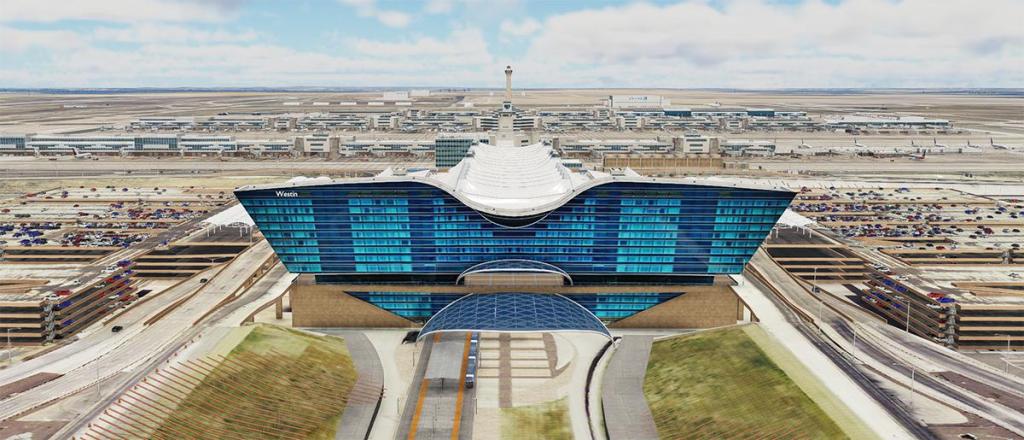







































































































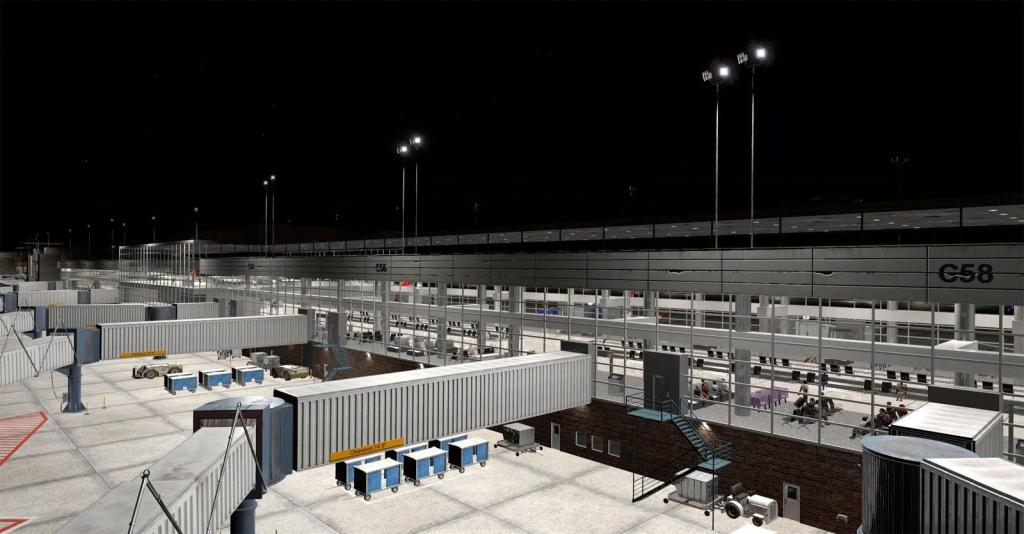


.thumb.jpg.fa3e4fa3a5e7796562c07a47d513005f.jpg)
.thumb.jpg.fb4c61803387b508197439f0a57904e2.jpg)
.thumb.jpg.2d8fc213ca369cbccdc5b8459917a7ff.jpg)
.thumb.jpg.b46d973add6cca5c981aa0843afd23d7.jpg)
.thumb.jpg.516e2f8849c967f95f615653ef914095.jpg)
.thumb.jpg.53c591c4da8b062a8471f06d1cb6f7bf.jpg)
.thumb.jpg.d9343c0cefcd50b91d2a3682d2cf254c.jpg)
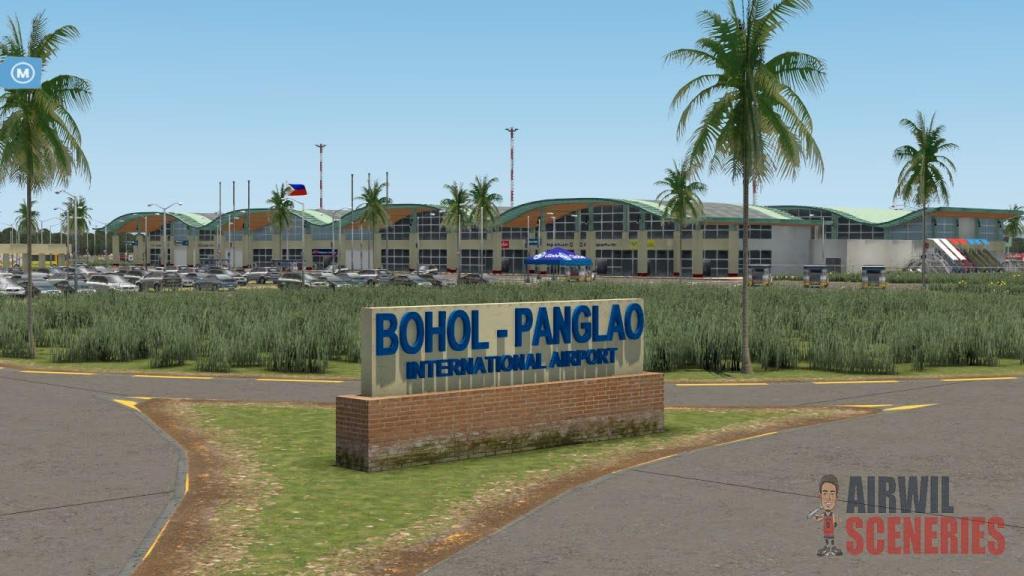
.thumb.jpg.061adc8df6eaf8b40167c9ff33dbf26e.jpg)
.thumb.jpg.2aae7dade380cf78c1332122e2e5e888.jpg)
.thumb.jpg.050f584936f68e25234b92d7dac514e7.jpg)
.thumb.jpg.b801201a44f59aa1c56fb3182c6ec5fa.jpg)
.thumb.jpg.0808dad7cc22c625db61735cd992bc24.jpg)
.thumb.jpg.8b846082c1dfb87328d604e126810144.jpg)









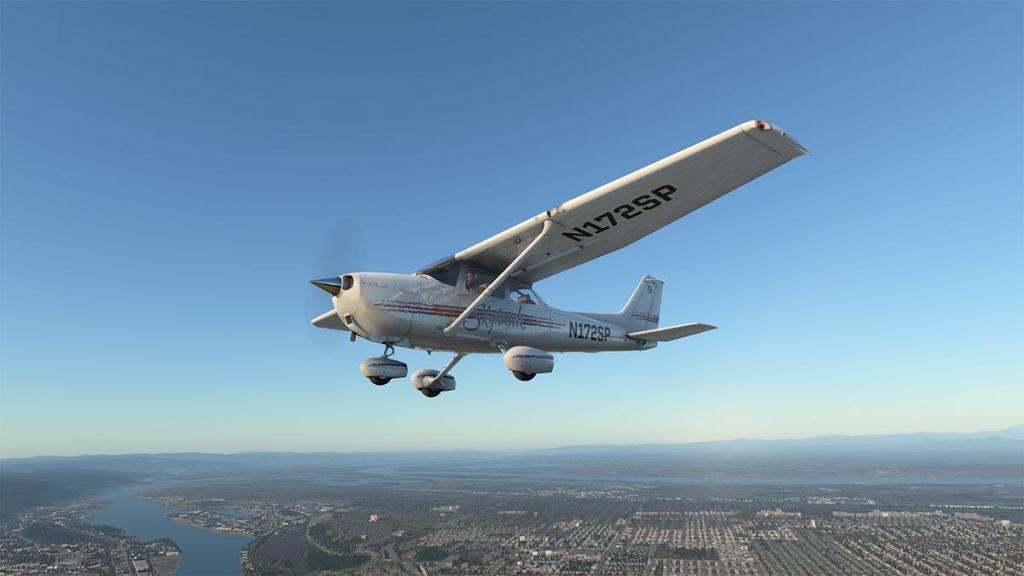













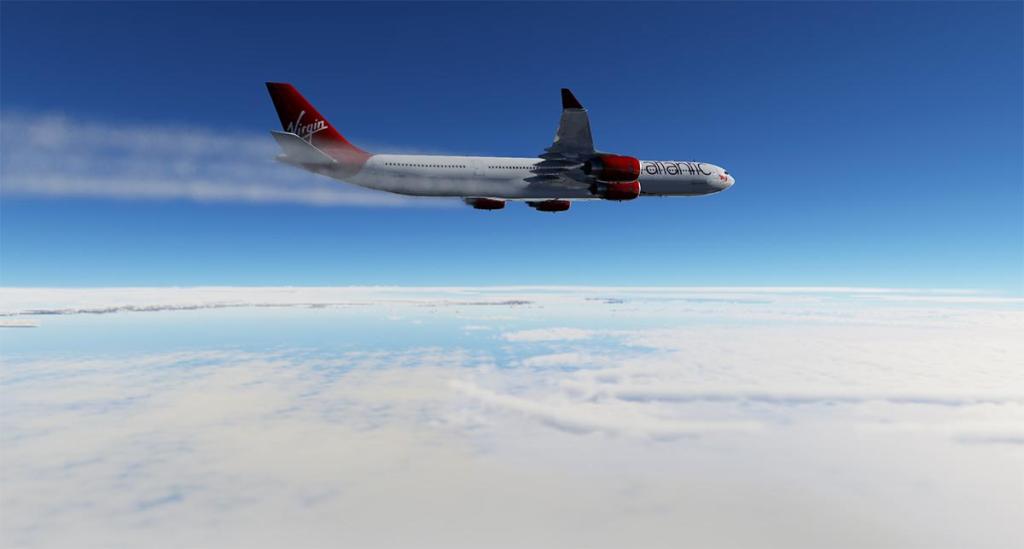



















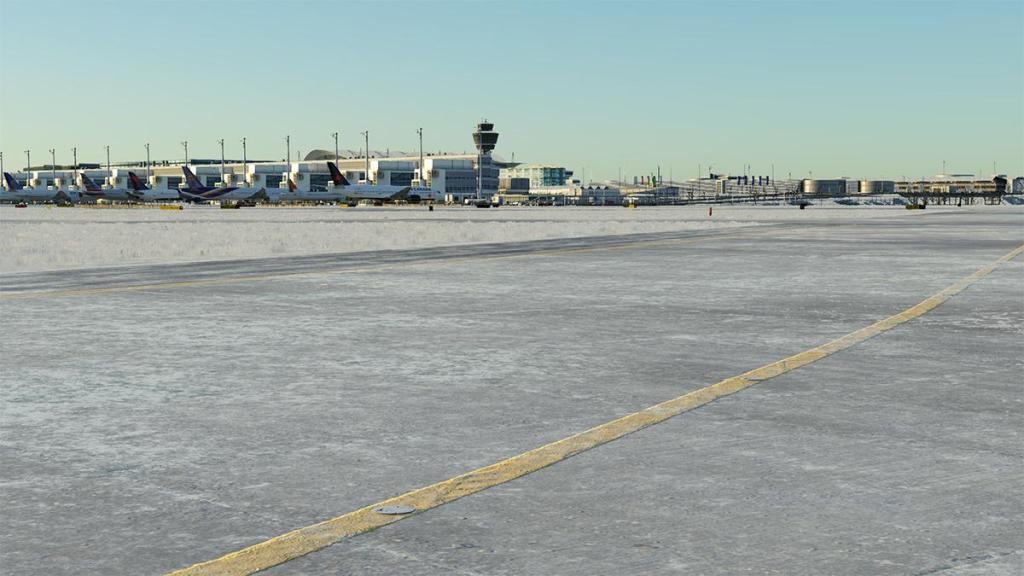































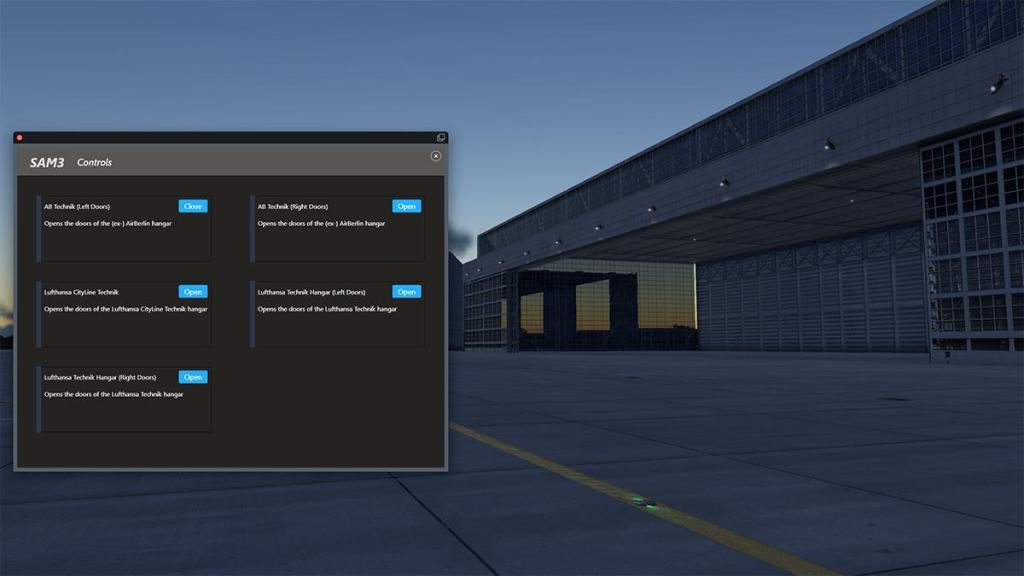
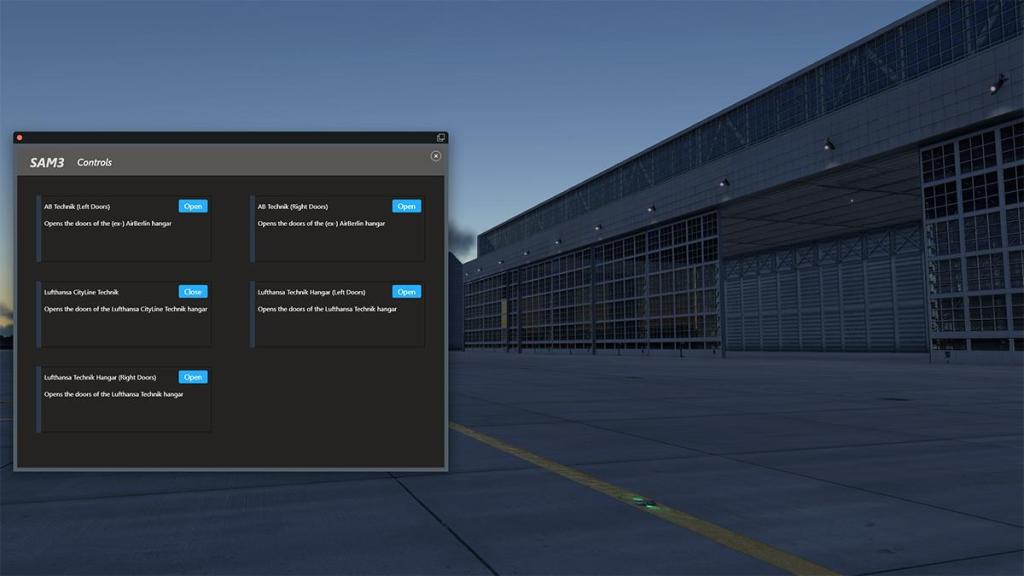



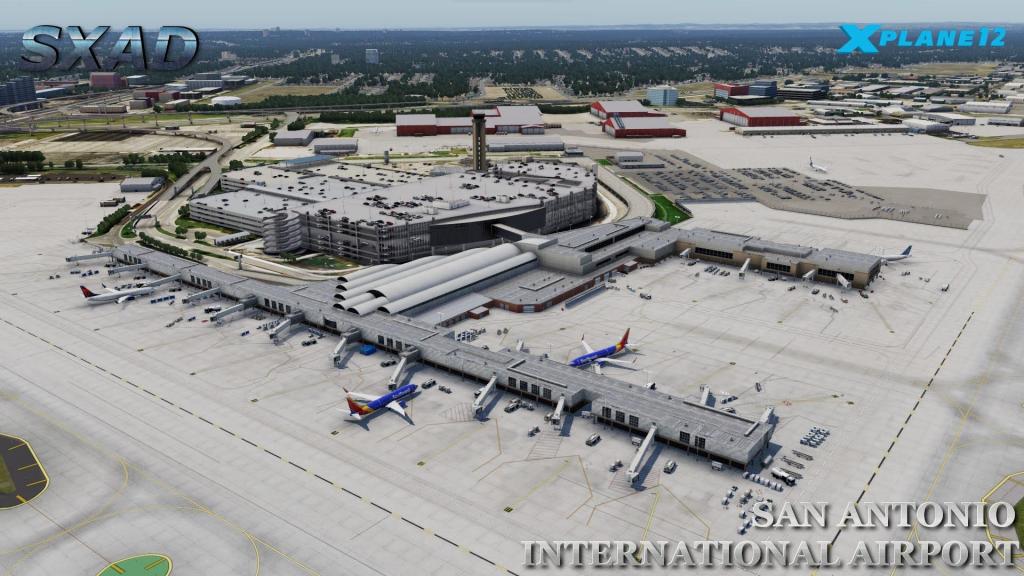






































































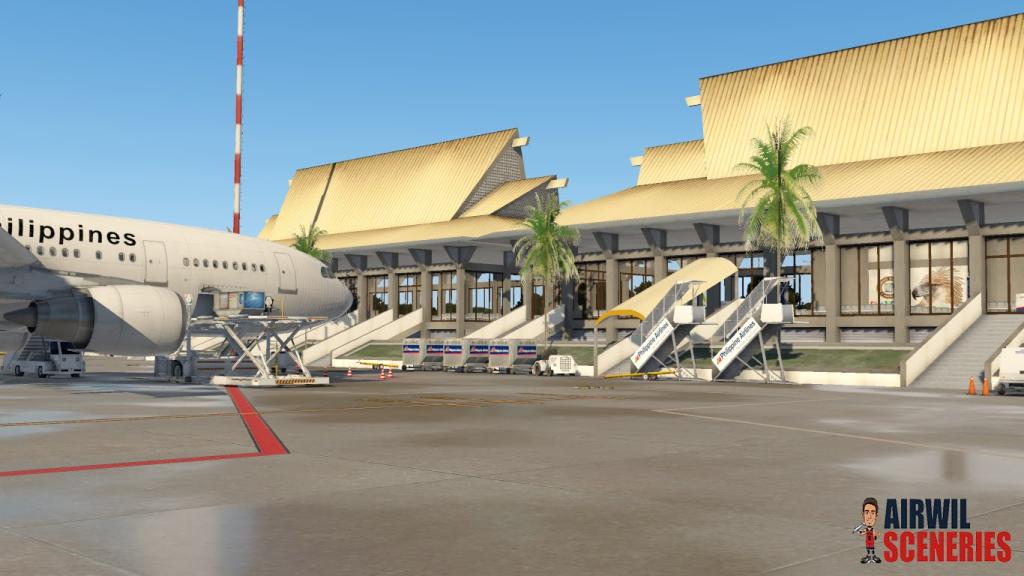

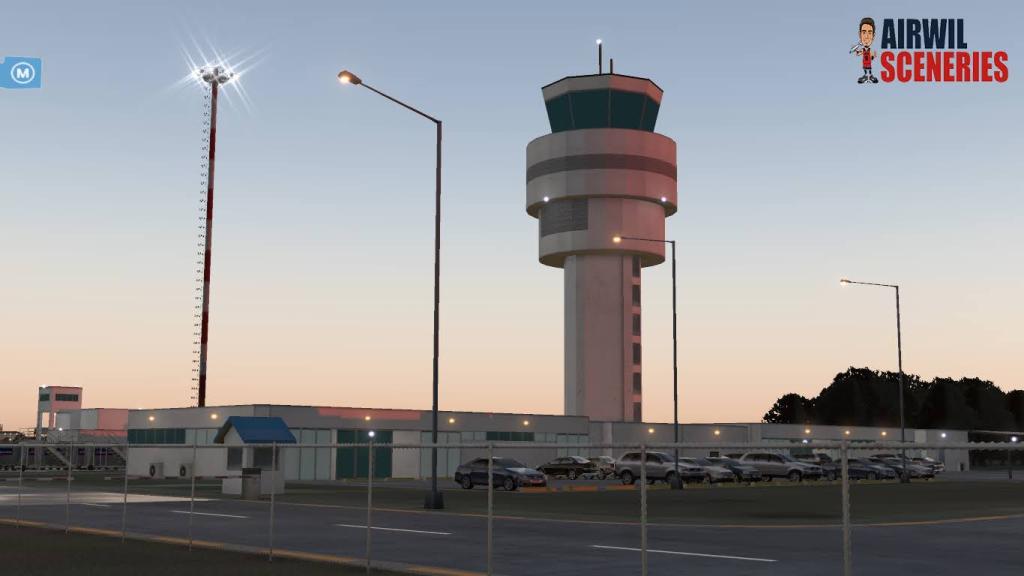










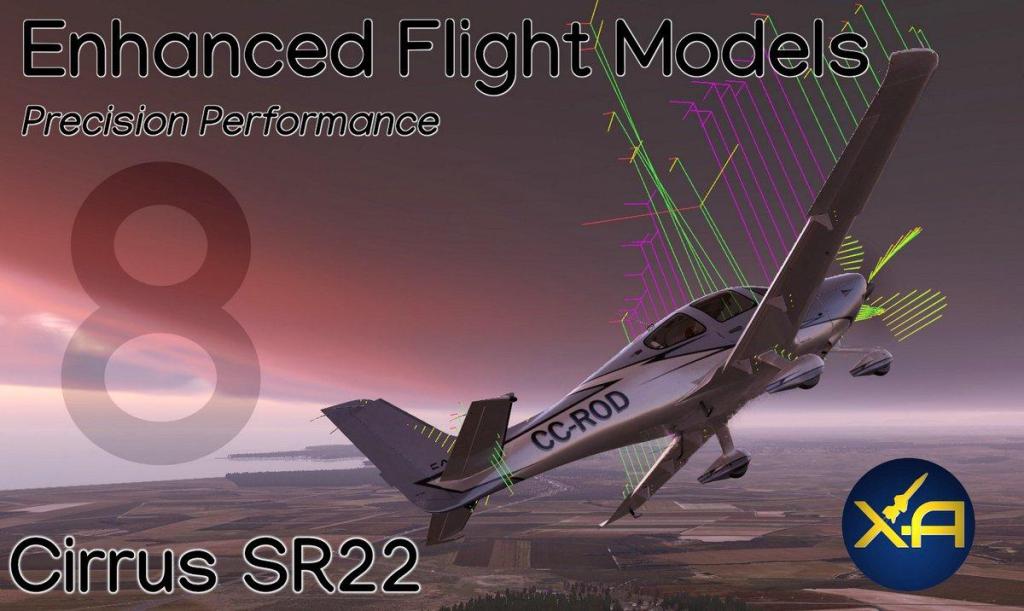


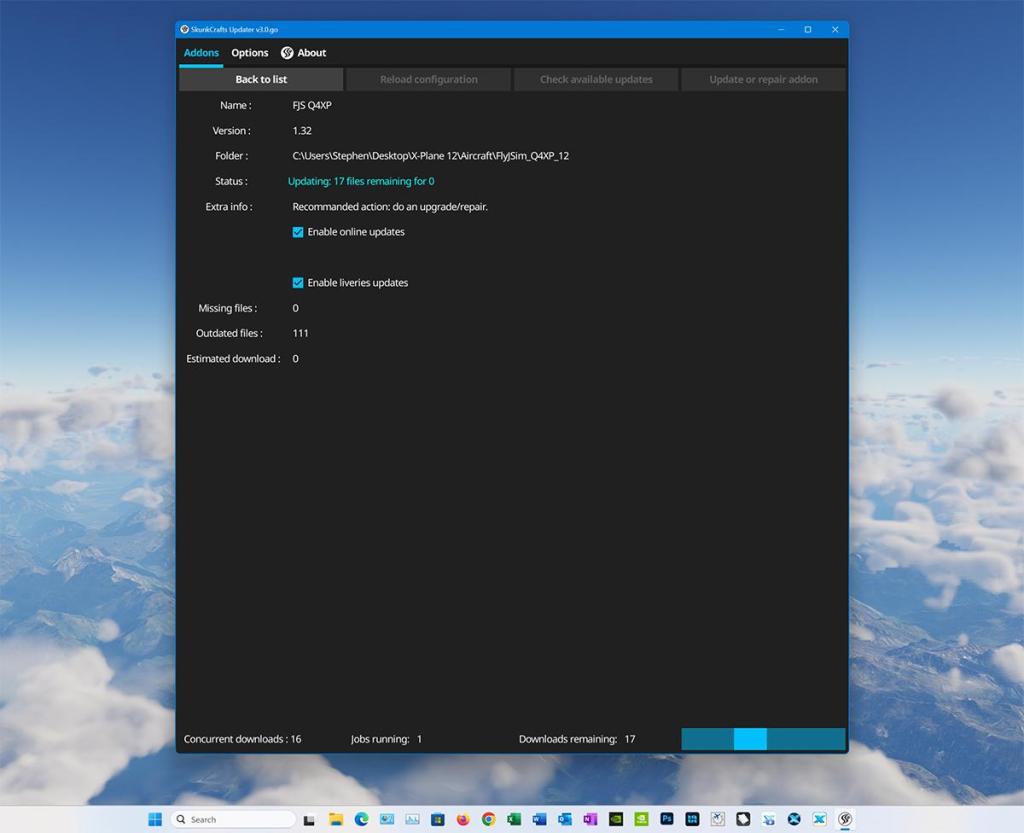

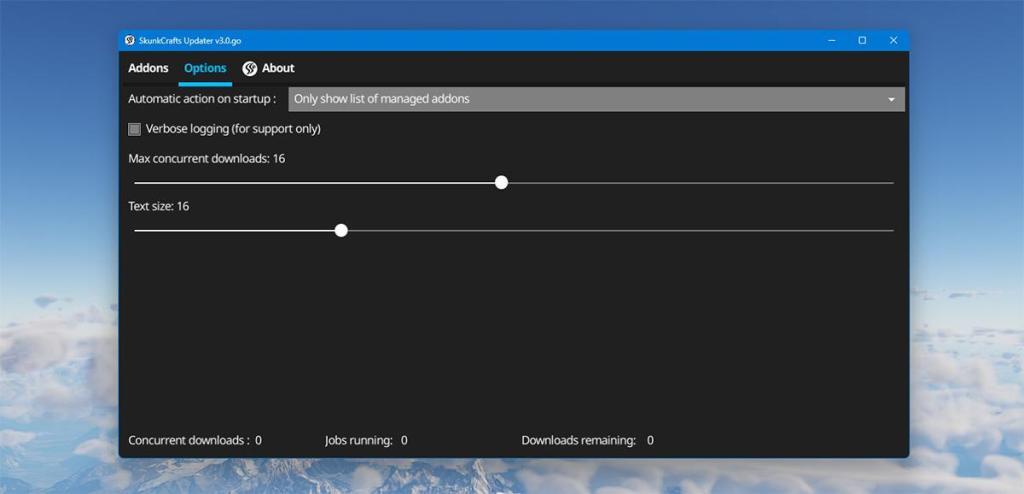















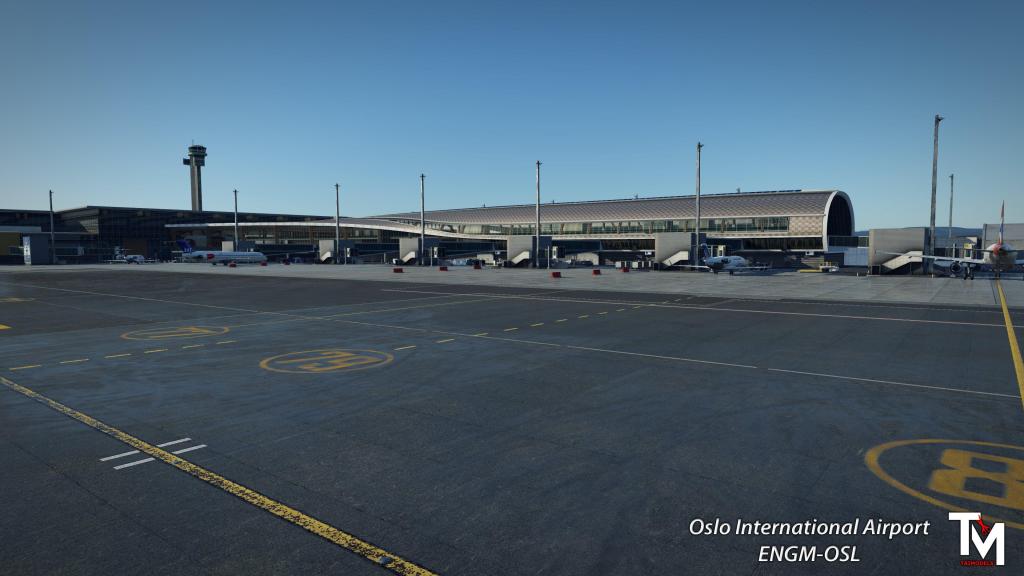


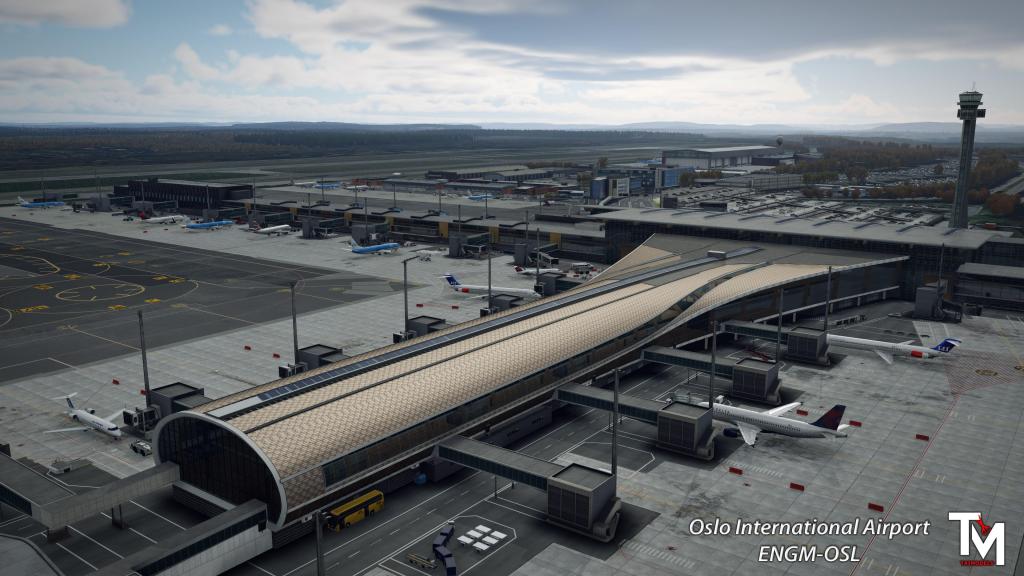












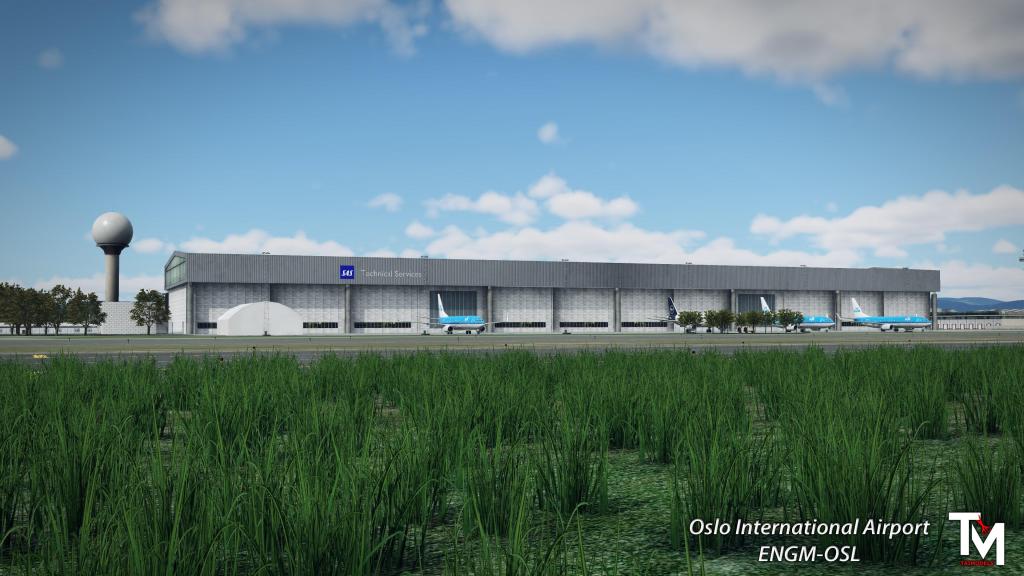





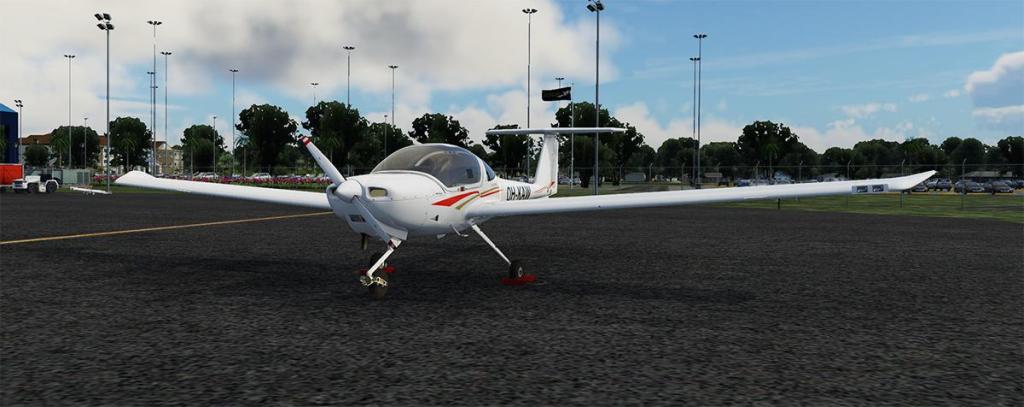










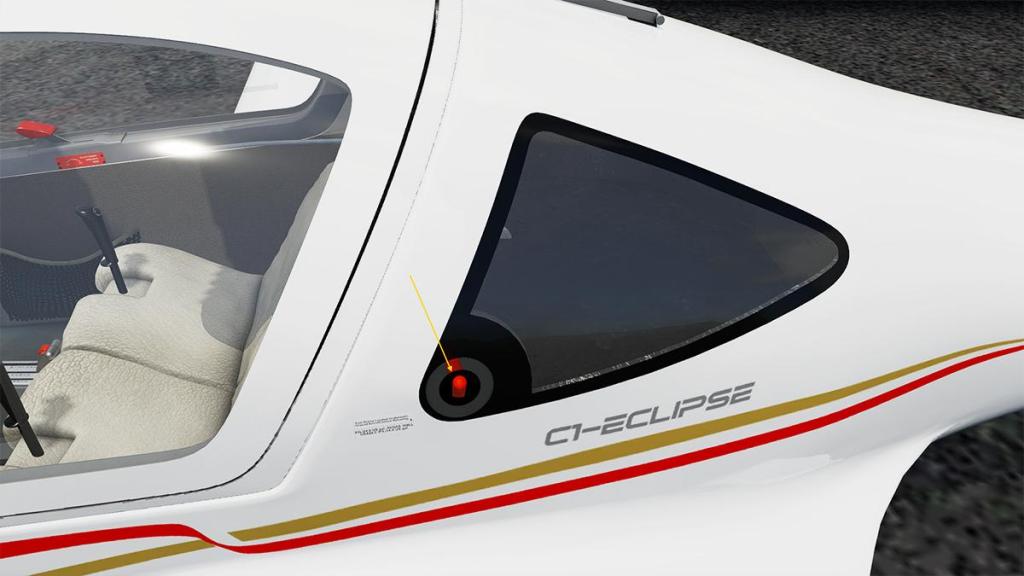



































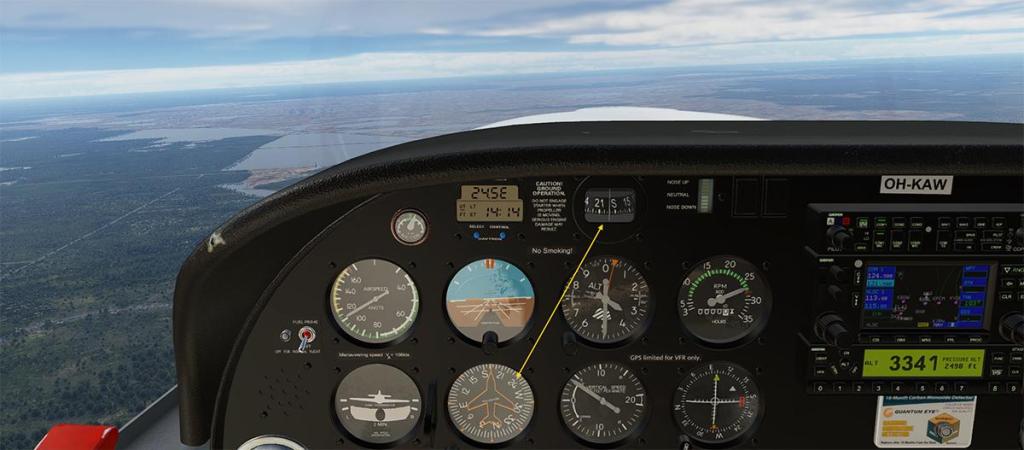
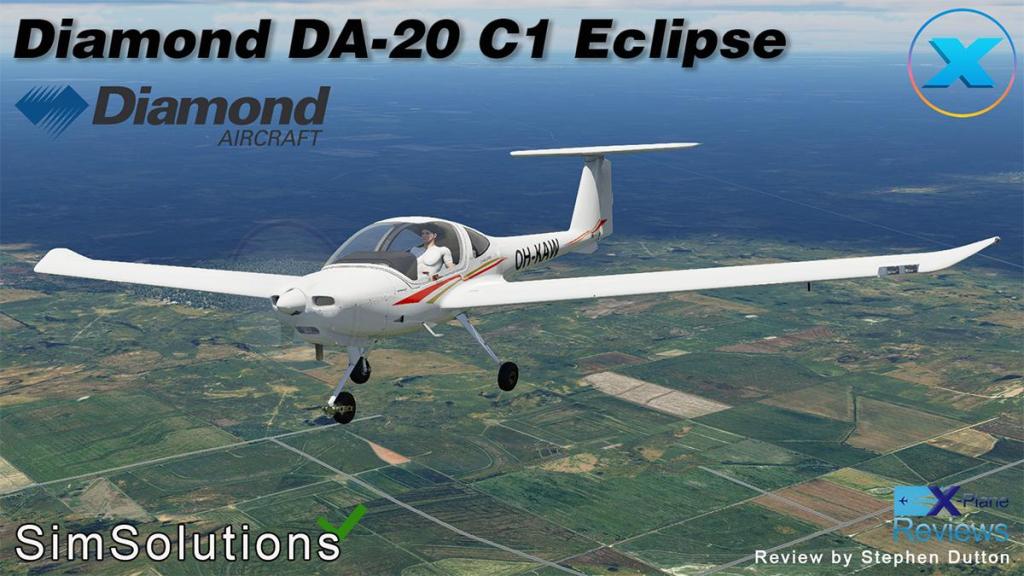



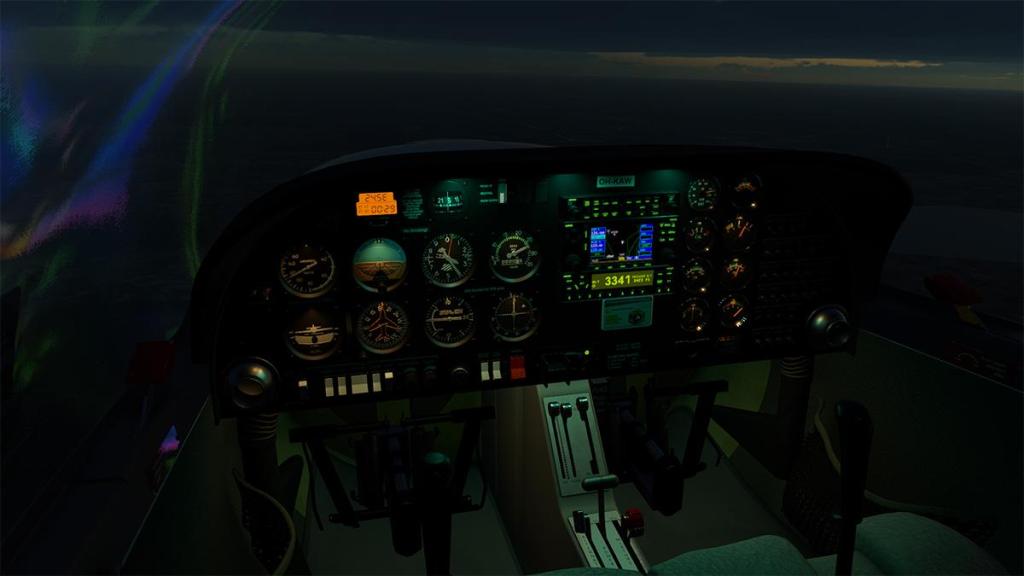









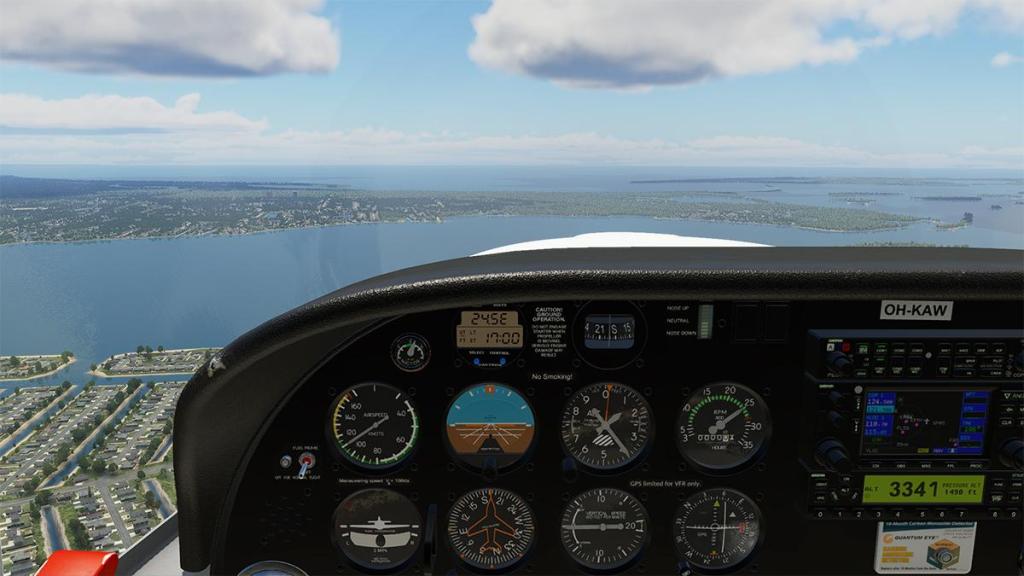



















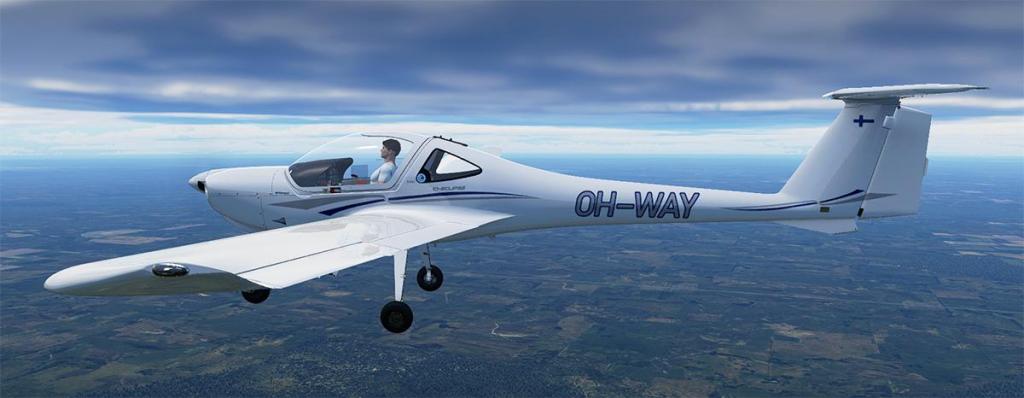







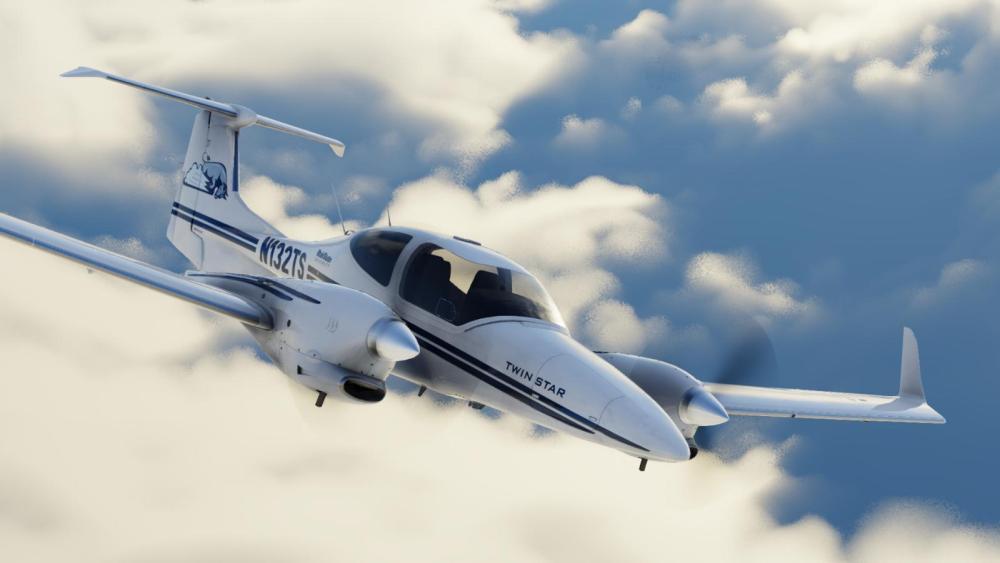
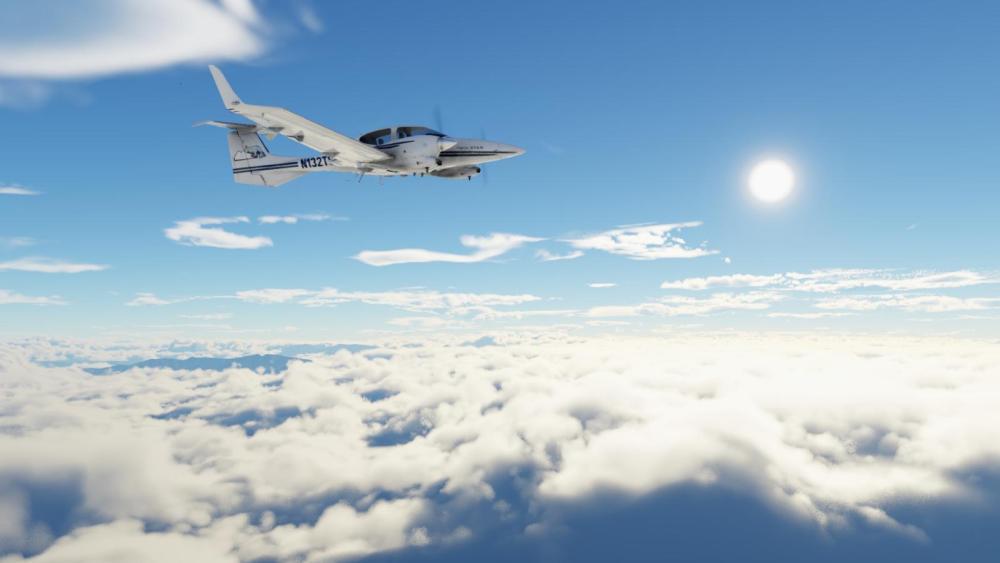
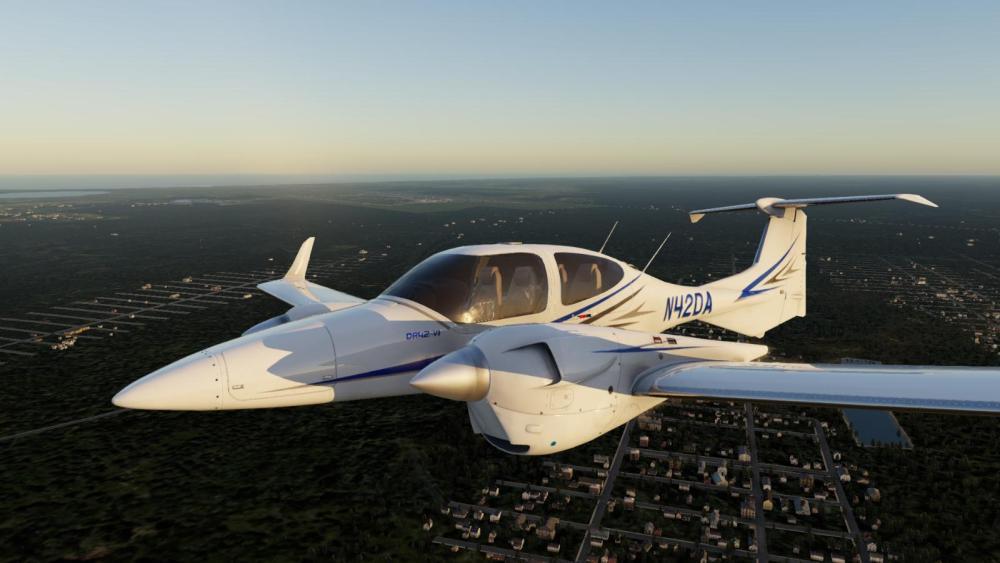
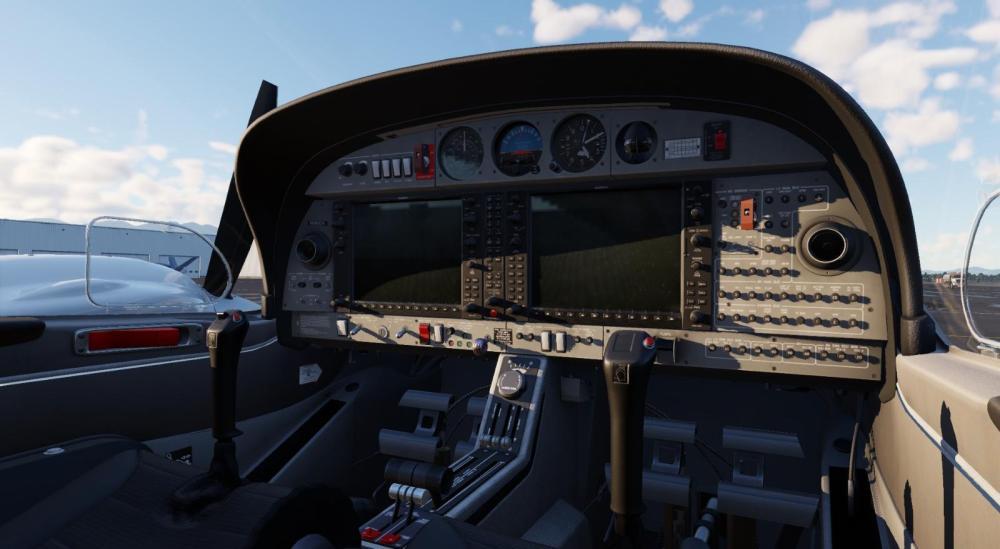
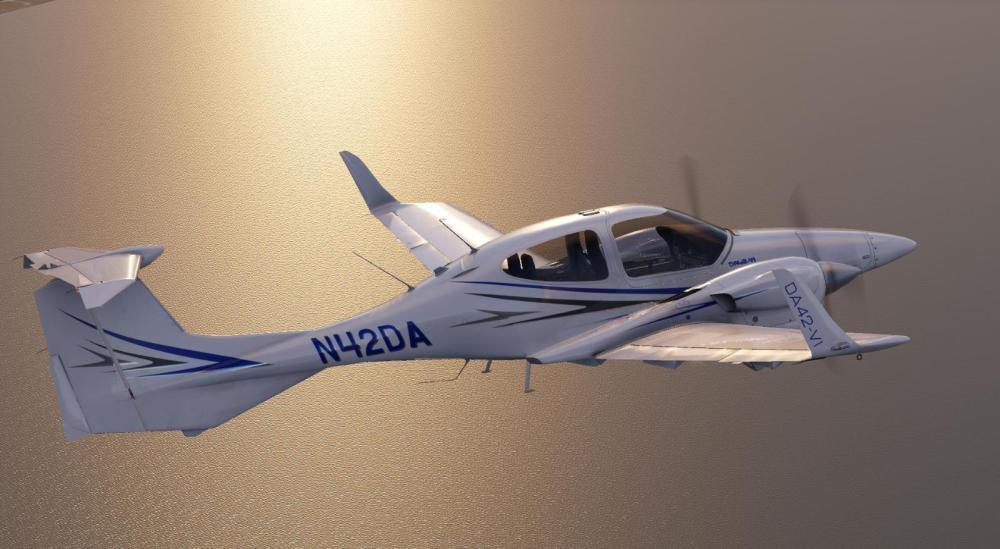
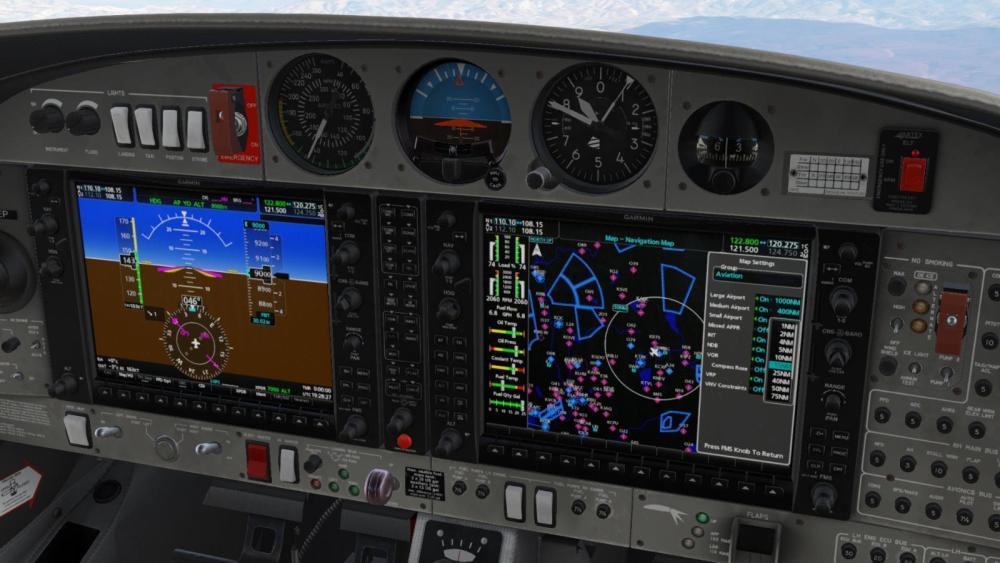
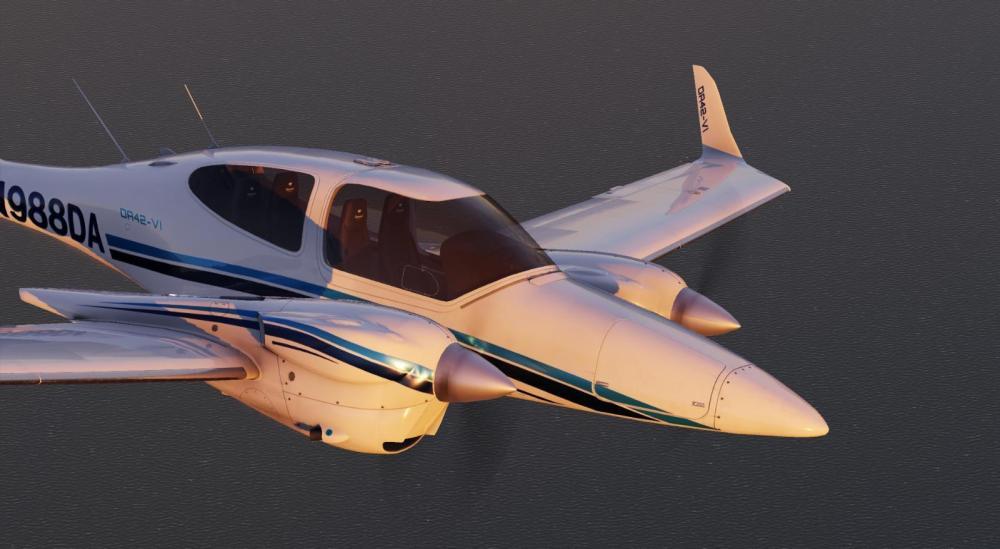
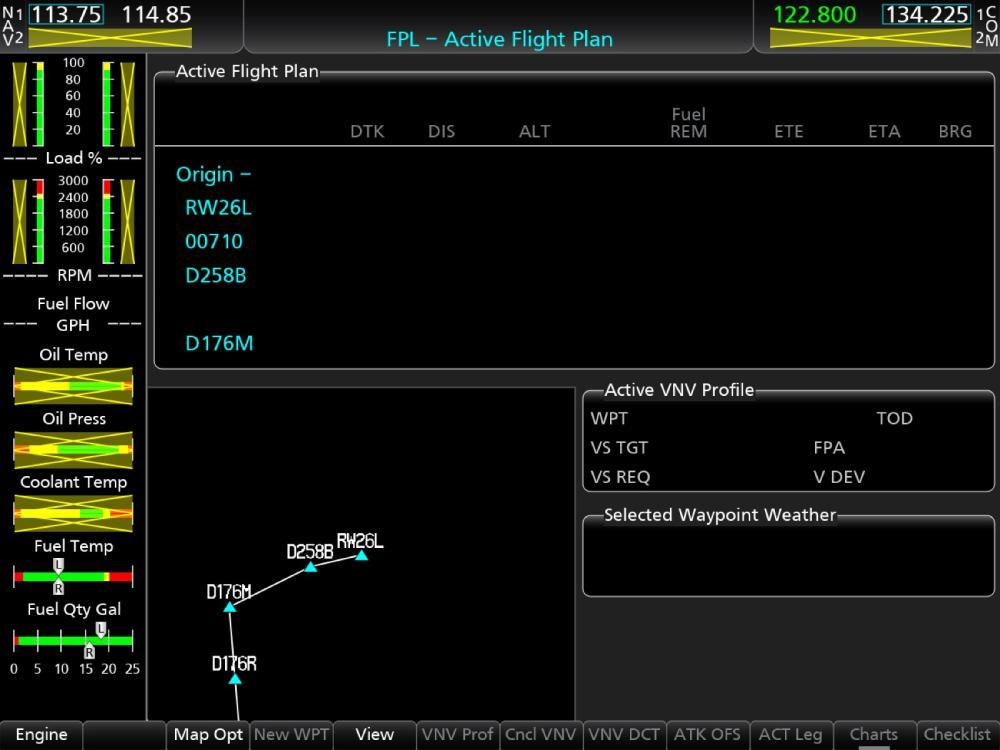
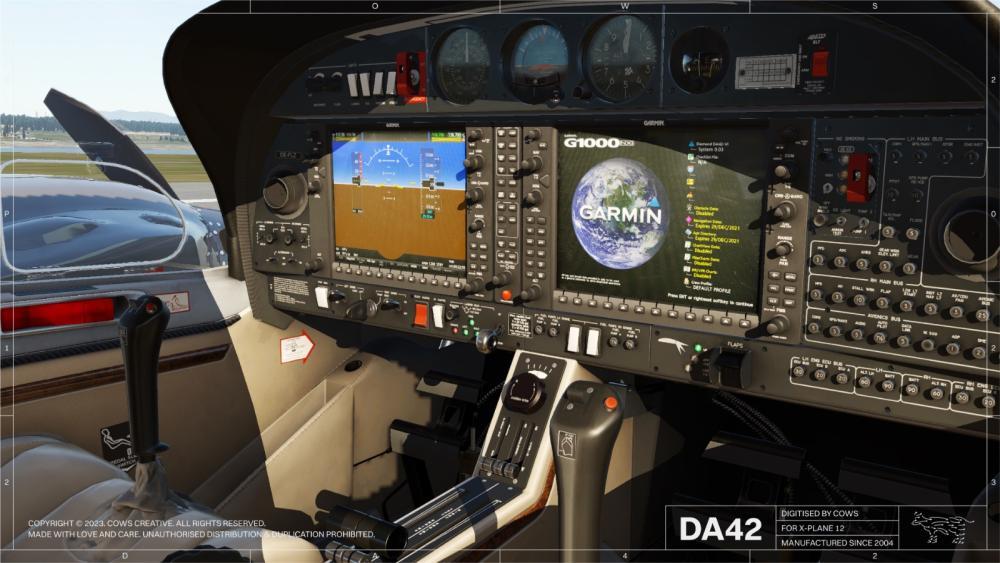
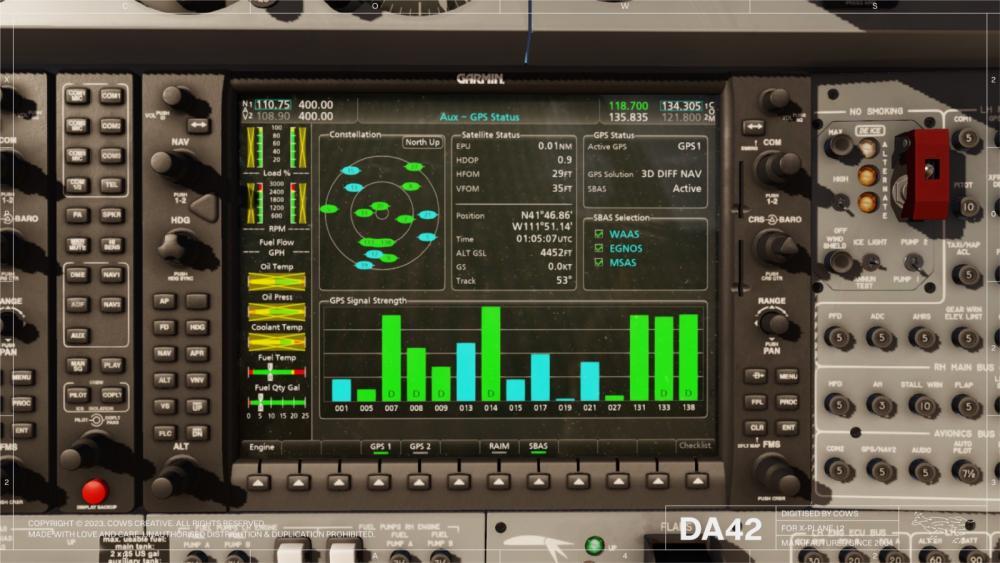
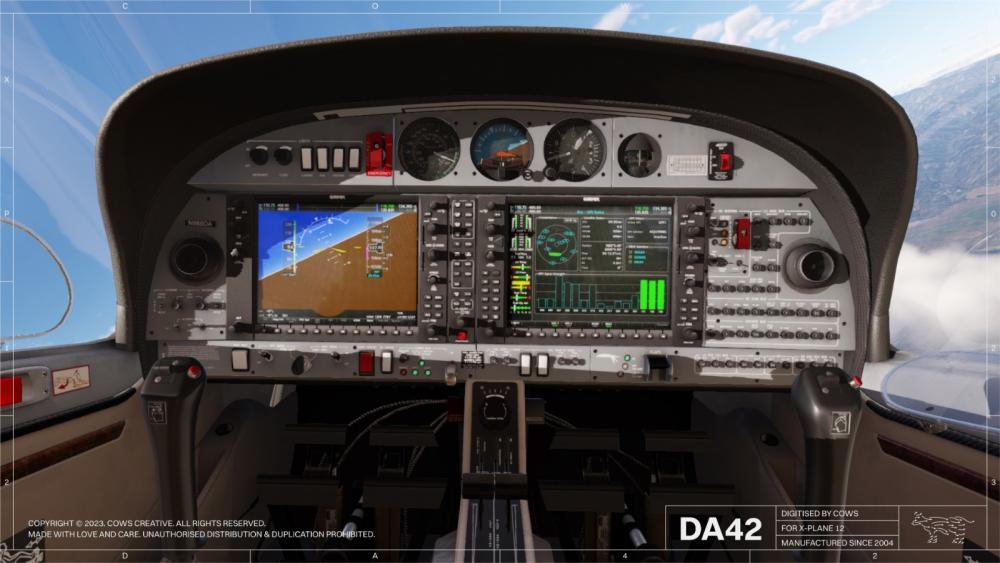
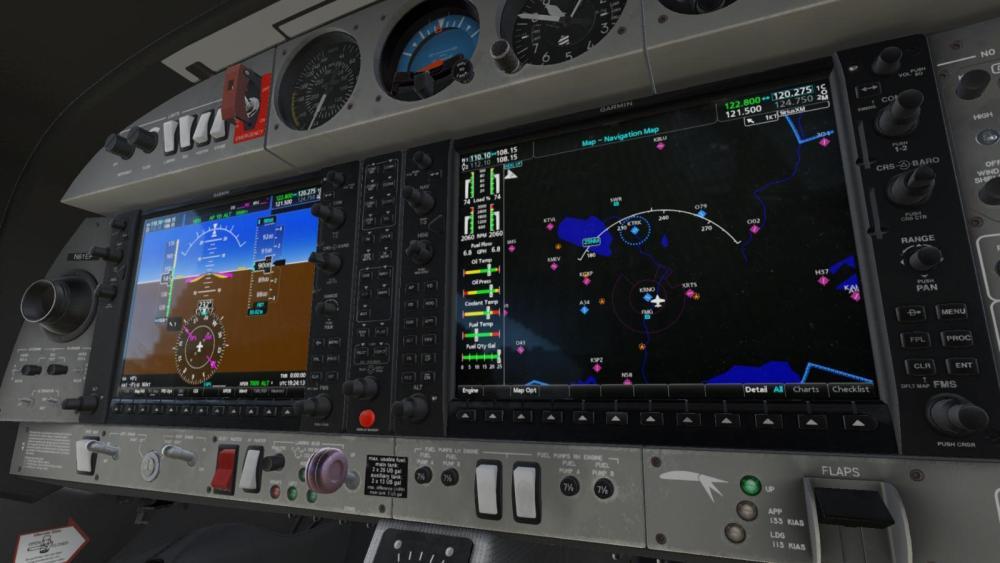
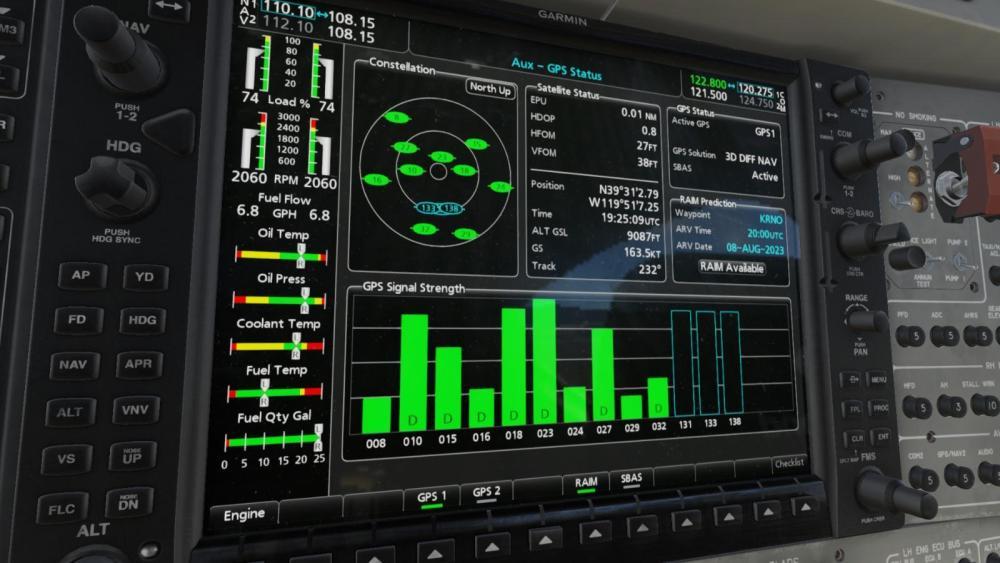



















.jpg.e2015c25164aea2c0de4eab0347decda.jpg)


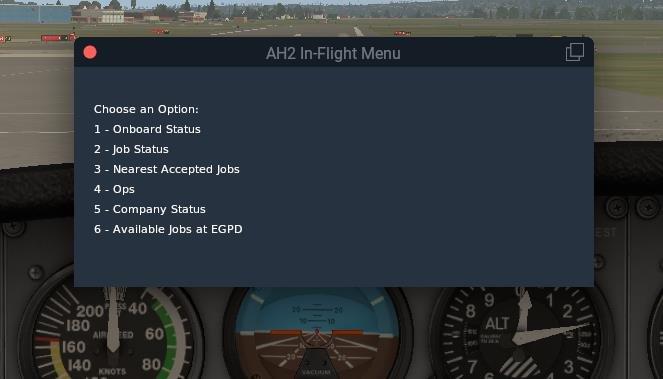



























.thumb.jpg.c3475c0efe037a49ca03b344657b0b07.jpg)
.thumb.jpg.704db98e5f383121611f0c8058e5a3b9.jpg)
.thumb.jpg.3ebc45688bc038226064d094c7d3583e.jpg)
.thumb.jpg.ba13824f82351402e52e839ce7473459.jpg)
.thumb.jpg.91a73e8e6a1834176e9df83421d23672.jpg)
.thumb.jpg.4930d4e8c3fe7f7bda25a9730b0c1138.jpg)
.thumb.jpg.6b974cce4415ebfbbfa3de86acec22b3.jpg)


